
Admin
-
Posts
7,397 -
Joined
-
Last visited
Content Type
Profiles
Forums
Events
Store
Gallery
Community Map
Posts posted by Admin
-
-
If you’re more into riding than Christmas shopping or if you don’t want to risk contracting COVID-19 at your local Big Box store, don’t worry: you won’t miss some of the best Black Friday motorcycle deals out there! We’ll be collecting some of the best deals for motorcycle gear over this week.
What is Black Friday?
“Black Friday” is the unofficial start to the holiday shopping season. It falls on the day after US Thanksgiving, which is the fourth Thursday of November. Though not an actual holiday, a lot of people take both Thursday and Friday off for a four-day weekend. That’s one reason why retailers have jumped on Black Friday, with big sales for people taking the day off to go shopping for holiday gifts. The result is one of the busiest shopping days of the year.
For 2020, Black Friday falls on Nov. 27, with many retailers timing their sales for the stroke of midnight. Others, like Revzilla, are getting a head start with deals available now. So, we thought we’d point you in the direction now to get those presents going to your loved ones (or yourself) ASAP.
Check back every day for our latest updates
Table of Contents
Bell Qualifier DLX MIPS Illusion Helmet – 36% Savings
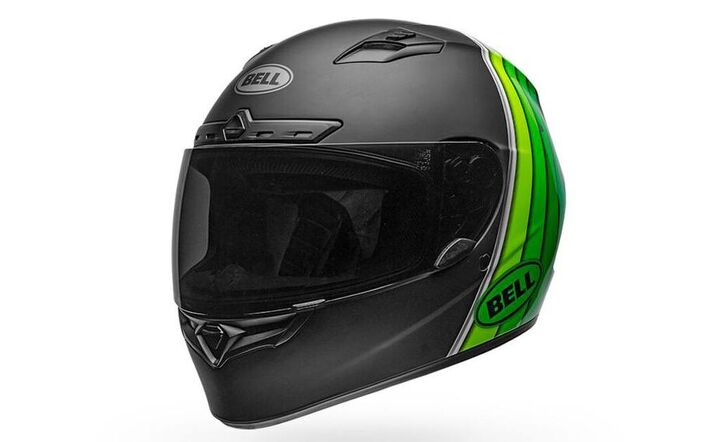
The list of premium features found in the Bell Qualifier DLX MIPS Illusion Helmet is insane. First, you get the protection of the MIPS Multi-Directional Impact Protection System for dramatically improved rotational impact energy displacement. That’s a mouthful, but it’s good news for your head. Add to that the lightweight polycarbonate shell with an adjustable ventilation system and an aerodynamic shape to cut through the air while keeping you cool. The chin curtain and wind collar reduce noise out on the open road. The moisture-wicking liner is removable for washing. Integrated speaker pockets allow you to fit your favorite communication system. Finally, this wallet-friendly helmet comes with a free ProTint photochromatic face shield that will adjust to all lighting conditions. Available colors for this intermediate-oval helmet are matte black/blue/white, matte black/green, and matte black/silver/white in sizes XS-3XL.
First Manufacturing Nemesis Jacket – 25% Discount
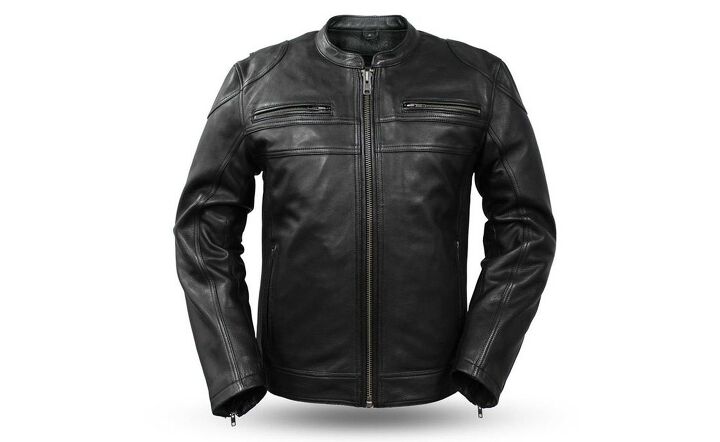
In the Nemesis, First MFG delivers a classically-styled leather jacket with all the fixin’s. The cut is American-sized – as in generous – and the exterior is diamond cowhide. The Mandarin collar fits closely to your neck, while the front and rear zippered vents keep you cool at speed. CE-1 armor is an option. The included thermal liner features full sleeves and zips into place for cool nighttime rides home. Large stretch panels on the sides help the Nemesis flex as you move around on the bike.
Nelson Rigg Commuter Backpack – 50% Off
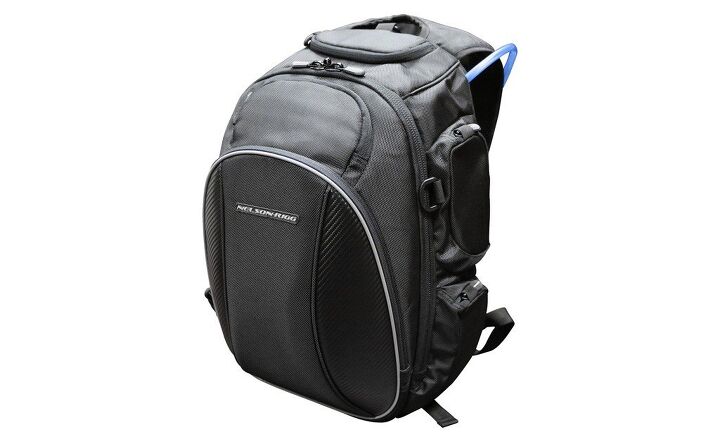
The Nelson Rigg CL-1060-BP Backpack will help you carry 16 liters of cargo comfortably on your back with the added security of adjustable chest and waist straps. The straps are padded for comfort. Padded foam and mesh back panel aids in airflow for cooler rides. The internal laptop compartment will fit most 17-inch laptops, and there is also a tablet sleeve. If you like to travel in hot weather, the pocket for the optional 1-liter hydration bladder will come in handy, or you can use the elastic closed lower side pockets to hold water bottles. Constructed of sturdy ballistic nylon with reflective piping.
Reax Jackson Leather Jacket – 42% Savings
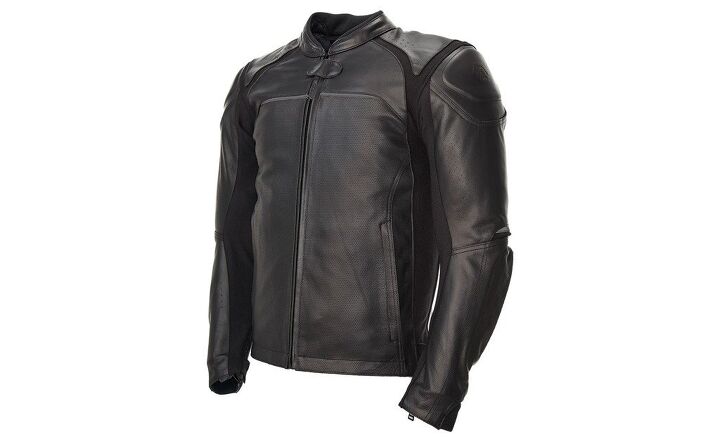
If you’re a 2XL-3XL-sized rider who likes matte buffalo leather with muted sport styling, this could be a deal for you. Aggressively styled in biker black, this 1.2mm-1.4mm-thick leather jacket comes with SAS-TEC CE Level 2 elbow and shoulder armor and an optional back protector. The double-reinforced shoulders and elbows look the sporting part, while the body of the jacket is perforated for cooling airflow in warm weather. Should you get caught out in the rain, a waterproof phone pocket makes sure you can stay in touch out on the road. Zippered cuffs keep the fit sleek, and the articulated sleeves are comfortable in a riding position. Stretch panels add to the fit. Adjustable waist and subtle reflective highlights.
TCX Street Ace Waterproof Shoes – 25% Off
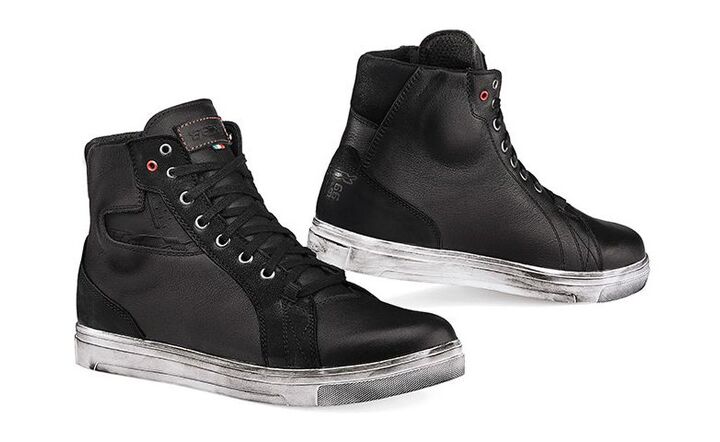
Like sneaker look but don’t want to give up the motorcyclist protection? The TCX Street Ace Shoes are for you. The casual appearance belies the protection hidden below the surface. First, they’re waterproof, which is good both on and off the bike. Under the leather skin, you’ll find heel and toe counters as well as both medial and lateral malleolus ankle inserts. The fit is exactly what you’d expect with a lace closure. Available in black, grey, grey natural, and Dakar brown in sizes Euro 36-47.
The post Best Black Friday Motorcycle Deals Available Now appeared first on Motorcycle.com.
http://feeds.feedburner.com/~r/Motorcyclefeed/~4/ANW7m2AzHEw -
Updated November 2020
If you’ve been paying attention at all, you know that the number of women involved in our favorite two-wheeled sport is growing rapidly. Back in 2018, the MIC (Motorcycle Industry Council) released statistics noting that female ridership was up to 19%. And the curve hasn’t changed since then. Naturally, being fans of protective gear, we wanted to sure that women are aware of all the high-quality motorcycle gear available for their gender. So, for your perusal, we offer a list of Best Women’s Motorcycle Jackets – just in time for the holidays.
Table of Contents
- Alpinestars Stella Andes Pro Drystar Jacket Tech-Air Compatible
- Alpinestars Women's Stella T-GP Plus R v2 Air
- Dainese Laguna Seca 3 D-Dry Women's Street Motorcycle Jacket
- First MFG Co. Biker Women's Leather Motorcycle Jacket
- Joe Rocket Ladies Classic ’92 Jacket
- Rev’It Ignition 3 Ladies Jacket
- Spidi 4Season H2Out Lady Jacket
Alpinestars Stella Andes Pro Drystar Jacket Tech-Air Compatible
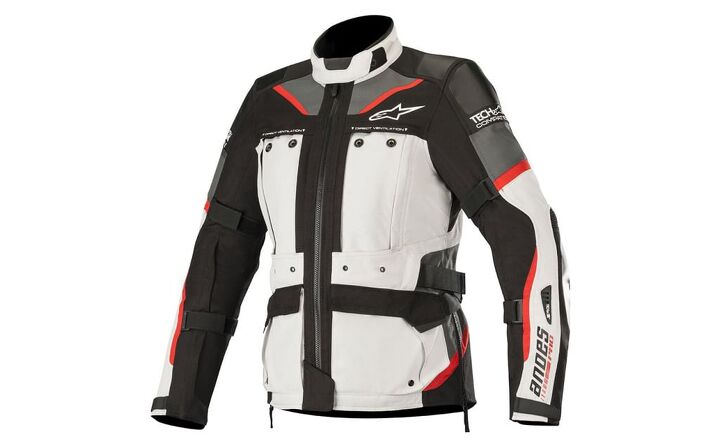
This Alpinestars three-season jacket has all the features you’d want for your longest rides – plus the protection of the optional Tech-Air system. Shaped to fit the female form, the Andes offers a fully waterproof construction which has the Drystar membrane bonded to the tough, abrasion-resistant exterior textile. The Zippers are waterproof as are the front cargo pockets. Impact protection comes from the CE-armor in the elbows and shoulder, and the Tech-Air Street Airbag system can be installed for increased protection. The jacket also includes ventilation and a quilted liner to increase rider comfort in a variety of riding conditions. An internal zippered waist fastener facilitates the attachment of Alpinestars textile pants. The Alpinestars Stella Andes Pro Drystar Jacket Tech-Air Compatible Jacket retails for $550 and can be purchased at Amazon.com.
First MFG Co. Biker Women's Leather Motorcycle Jacket
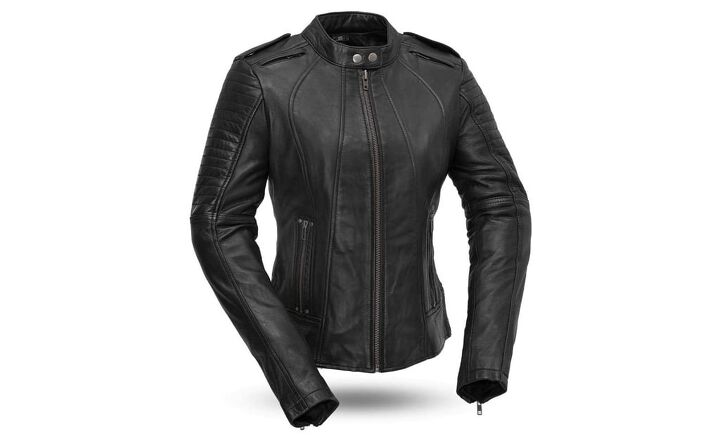
A member of First MFG’s premium line, women’s Biker leather jacket that will have you feeling and looking good while riding. With a center zipper style with a stand up collar, single snap shoulder epaulette, quilted panel detail on each shoulder, & a quilted kidney belt detail, the Biker jacket has all the functional features you’re looking for in a riding jacket. Additionally, it has a zip-out thermal liner and pockets for optional Armour inserts. It has two outside side zippered pockets with studded detail, two nicely located inner pockets, and zippers on each sleeve for convenience. The pockets on the biker are designed for convenience. They are easy to use and locate with a zipper option available, for protection. The biker motorcycle jacket was designed to give you the ultimate riding experience while being built to last. It will deliver everything you’ve come to expect from a leather motorcycle jacket.
Joe Rocket Ladies Classic ’92 Jacket
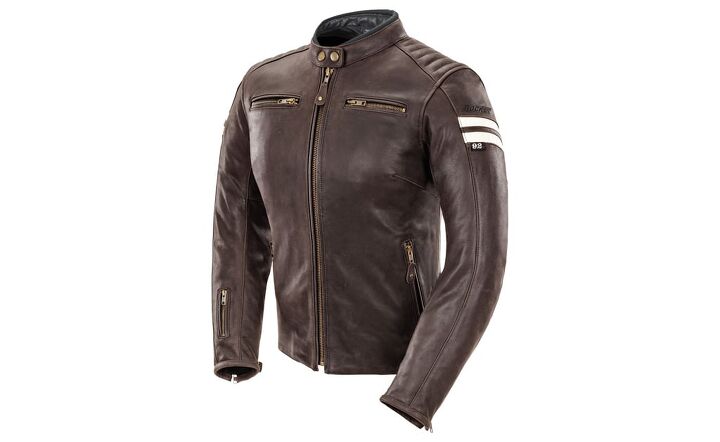
The Joe Rocket Ladies Classic ’92 Jacket hits the right styling cues for a street-reasonable price. Constructed of 1.0-1.2 mm drum-dyed cowhide and tailored to fit in a relaxed feminine manner, the jacket offers a zip-in quilted liner and five interior pockets. The neoprene-lined collar ensures comfort when it is snapped closed. Optional armor fits the pockets in shoulders, elbows, and back. Color options are Black/White and Brown/Cream. The Joe Rocket Ladies Classic ’92 Jacket is available from Amazon.com for $270-$288.
Rev’It Ignition 3 Ladies Jacket
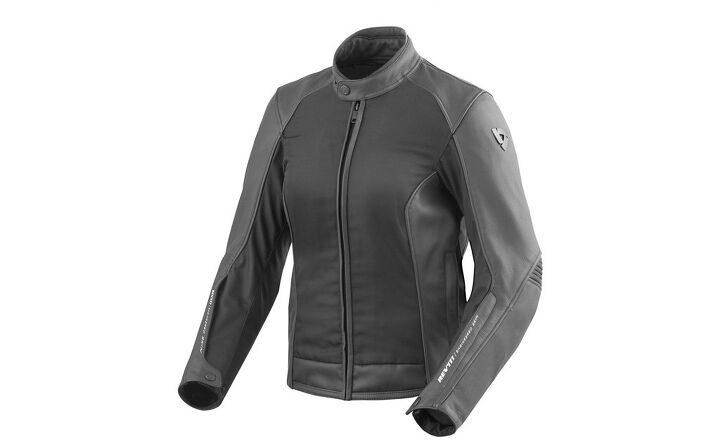
Riders who live in warmer climates will want to take a look at the Rev’It Ignition 3 Ladies Jacket. Constructed of 600 denier polyester in high abrasion areas and Dynax mesh in the chest and back for maximum airflow, the Ignition 3 also features Monaco Performance Cowhide. This combination of form and function in Ignition 3 has made it a popular model. Impact protection comes courtesy of the Level 2 CE armor in the elbows and shoulders, and a pocket in the back will accept Rev’It’s Seesoft CE-level 2 back protector insert Type RV. This jacket functions as a 3-season item even with its ample venting. A detachable waterproof Hydratex liner and a detachable thermal body warmer are also included with the jacket. Matching pants are available. Available only in Black, the Rev’It Ignition 3 Ladies Jacket retails for $540 and can be purchased from Revzilla.
Spidi 4Season H2Out Lady Jacket
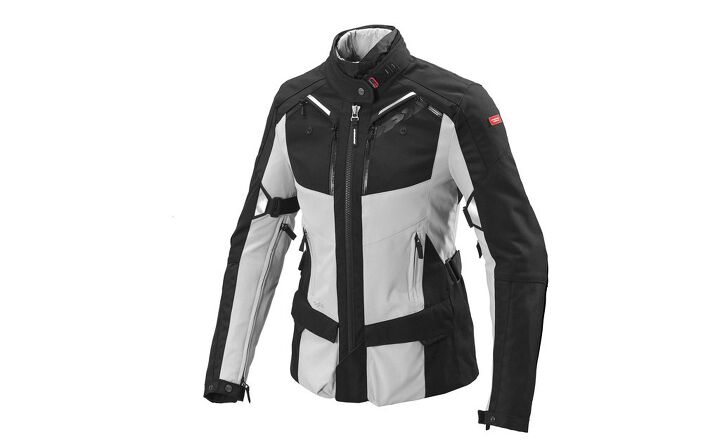
One of the most versatile touring jackets we’ve ever used is available for women, too. The Spidi 4Season H2Out Lady Jacket takes all of the features we loved about the men’s jacket and adjusted them to fit the female form. The layered system allows the rider to wear only the features she needs at a given time, with the waterproof and insulating liners separately removable. The venting is impressive for a touring suit. The exterior shell provides abrasion resistance while CE-approved armor takes care of the elbows and shoulders. Optional chest and back protectors are available. The jacket zips to a matching pair of pants ($400) to form a complete suit for the long haul. The Spidi 4Season H2Out Lady Jacket is available in sizes XS-3XL in four colorways: Black/Grey, Black, Black/Grey/Fluorescent Yellow, and BlackGrey/Fuchsia. The retail price is $550 and can be purchased from Revzilla.
We are committed to finding, researching, and recommending the best products. We earn commissions from purchases you make using the retail links in our product reviews and other articles. Learn more about how this works.
The post Best Women’s Motorcycle Jackets appeared first on Motorcycle.com.
http://feeds.feedburner.com/~r/Motorcyclefeed/~4/qcMz-be9Fyg -

Joan Mir’s season-long consistency paid the ultimate reward: winning the 2020 World Championship. (Dorna/) Joan Mir, on Suzuki, became the 2020 MotoGP champion by finishing seventh at Valencia 2 today. Through consistency that developed during the year, he accumulated points sufficient to lead the championship going into last weekend’s Valencia 1. There he led a Suzuki 1-2 to win his first MotoGP race.
Race winner was Franco Morbidelli (Petronas Yamaha) who was 11th last weekend but today led every lap, fighting off a powerful final-laps challenge by Jack Miller (Ducati). Each time Miller pushed past, Morbidelli came back under him, holding him off to the flag.
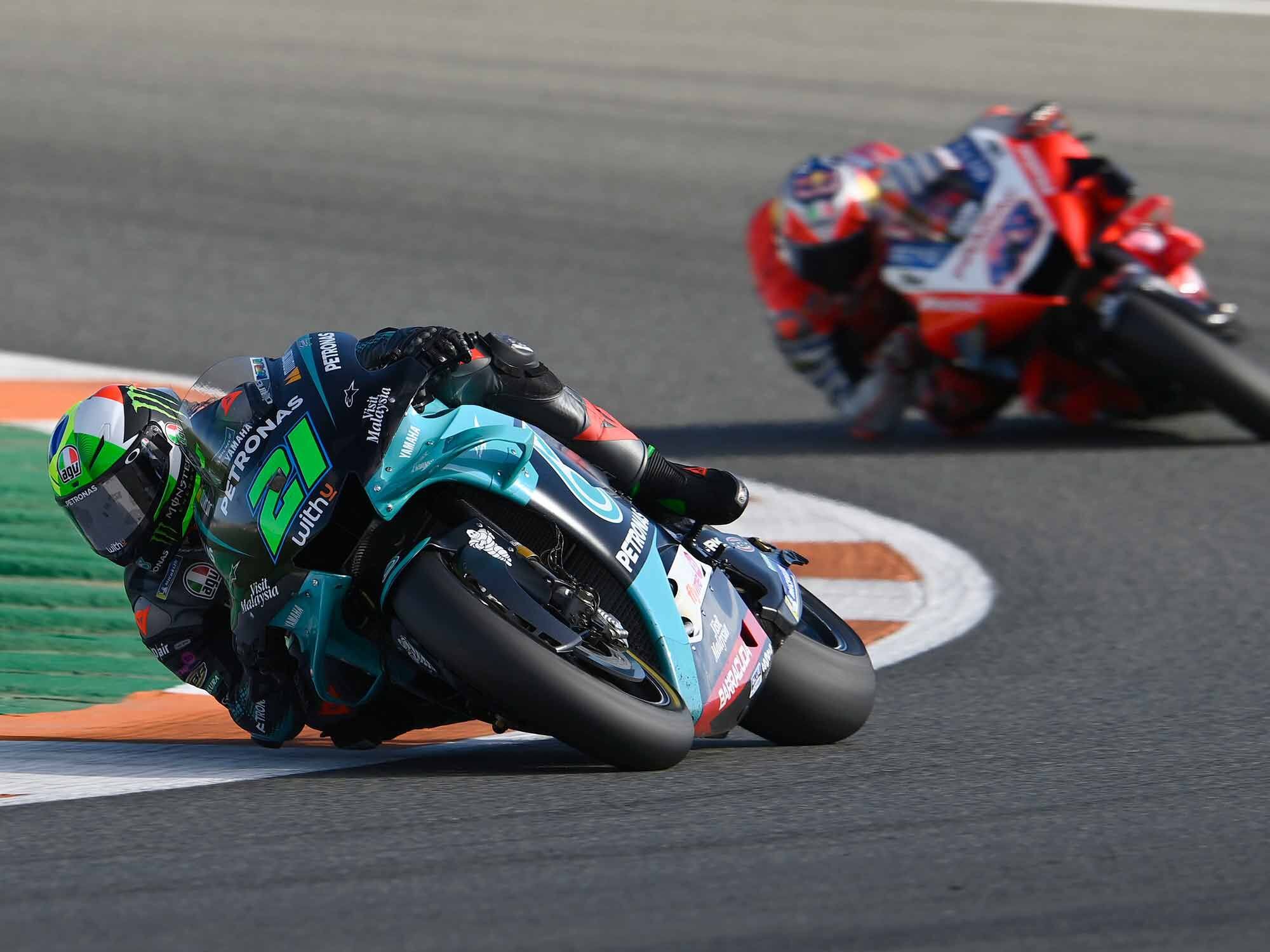
Franco Morbidelli turned quick qualifying into a solid race win ahead of Jack Miller. (Petronas SRT/) “It was a wonderful fight against Jack,” Morbidelli said. “It’s always nice to fight with him, win or lose, so I enjoyed the battle and congrats to him, he was just as good as me.”
The weekend began with fast changes in top practice times. In FP1 Morbidelli was second, but by the afternoon the high-power bikes, with their strong braking and acceleration (Ducati, KTM, Honda), had refined the promise they’d shown a week ago and held the top seven places (last week, a solid bloc of eight high-power bikes finished behind the winning Suzukis of Mir and Álex Rins).
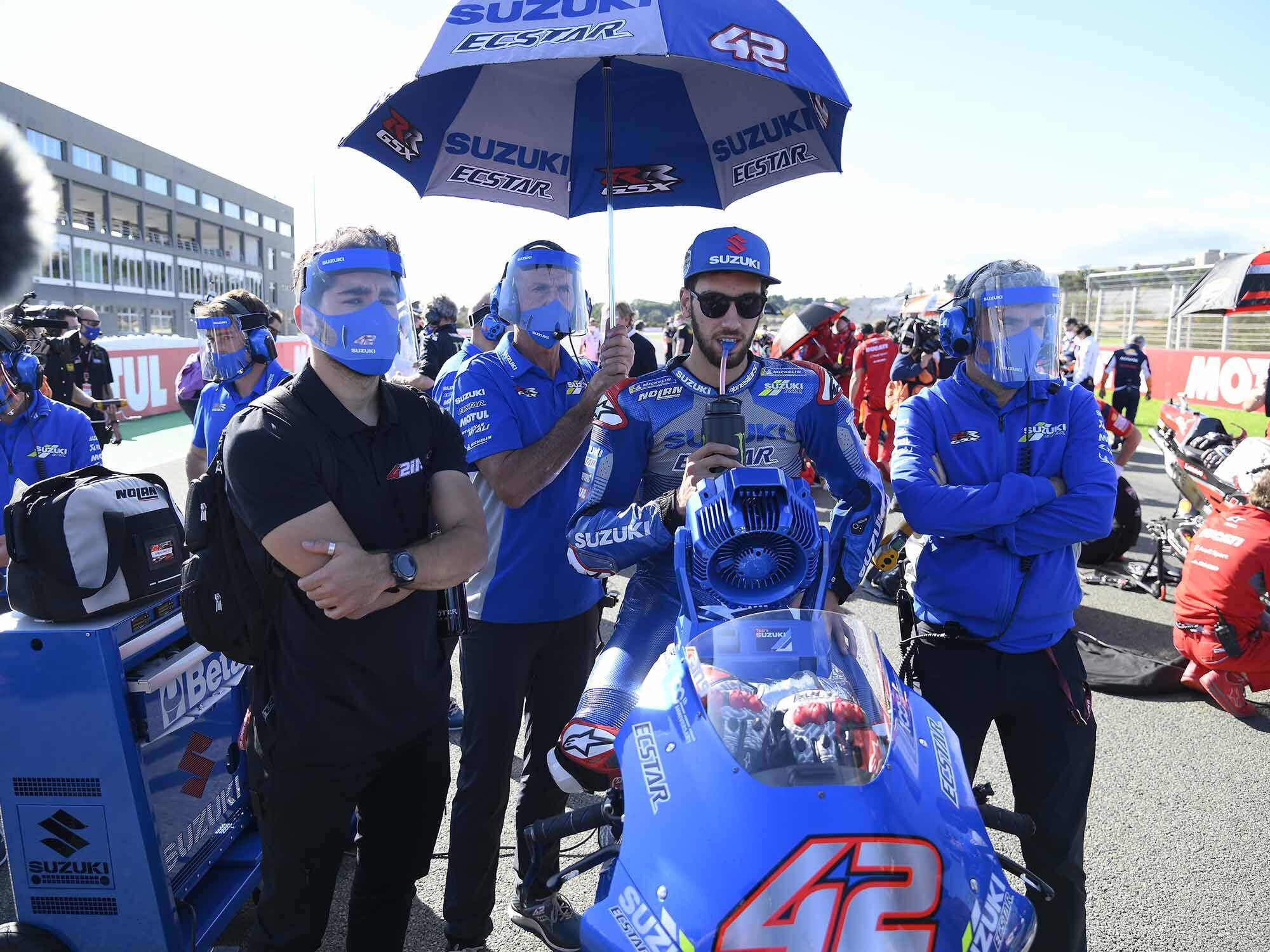
Álex Rins raced to fourth place, three spots ahead of his championship-winning teammate, Mir. (Dorna/) Where were the Suzukis? Now that the championship was within Mir’s reach, it would have been foolish to take unnecessary risk. Rins would finish fourth behind Miller and Pol Espargaró and ahead of Brad Binder. Mir wisely let the numbers do their work as he finished seventh.
Clearly, Morbidelli’s setup had been considerably refined compared to the week previous. While Fabio Quartararo and Maverick Viñales struggled with “the Yamaha problem” (if the bike is perfect, it wins; if not, it’s nowhere), Morbidelli qualified on pole and was able to say, “I felt great with the bike, so I was able to take the necessary risks.”
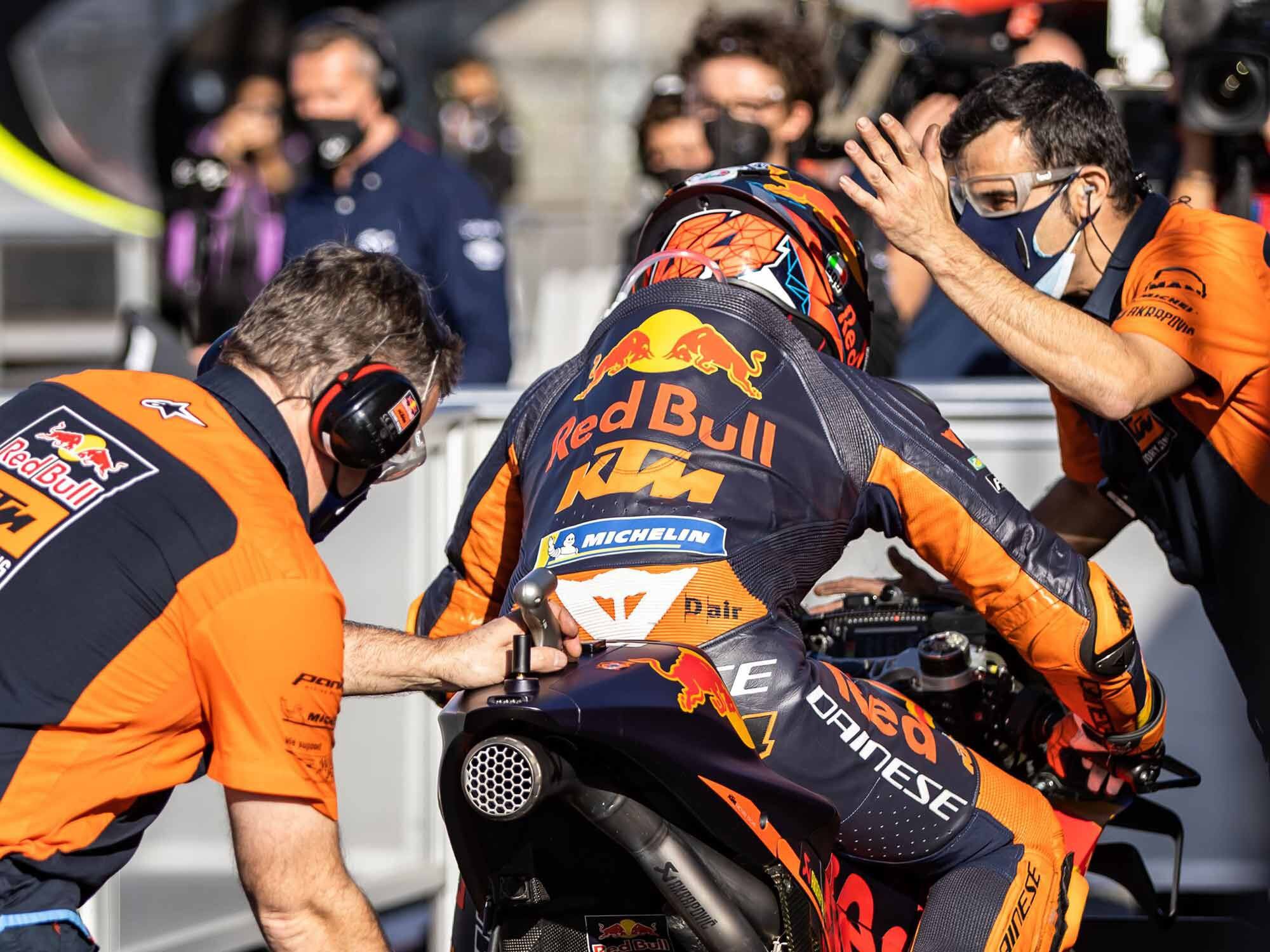
Pol Espargaró greeted his excited team as he made the podium again, finishing third. (Dorna/) To make money at cards, it’s not taking the risk that counts so much as estimating and managing the odds. On a machine that gives good feedback—feel—to the rider, risk can be estimated accurately, giving more latitude. Even so, Morbidelli said, “I chose the hard front,” as very few did, “because I didn’t think the medium would last. I adapted my riding. I lost the front several times but I was able to manage it.”
He had important help in the person of veteran crew chief Ramon Forcada: “The key was [Forcada’s] immense knowledge.”
Where was that knowledge last week, when Morbidelli finished 11th? Rain and mixed conditions had made the finally dry Sunday morning warm-up the only source of setup information.
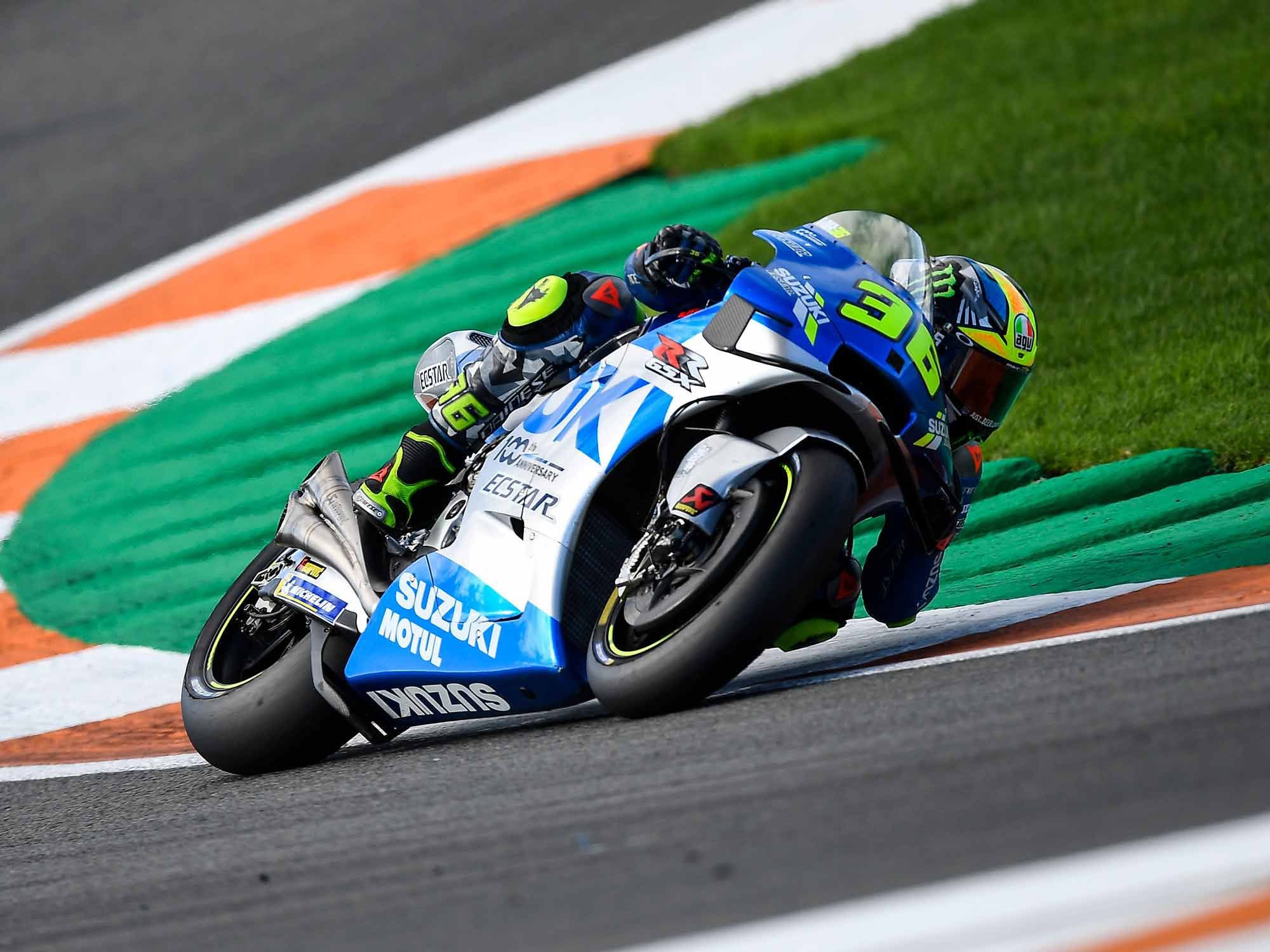
What is a “real” championship? The one where a rider, in this case Mir, gets the most points by doing the best job managing a season of racing. (Dorna/) Even now, fault-finders are complaining that Mir is “not a real champion” because he won only one race. Let’s consider how it’s possible to win the title without winning several races. Why do you suppose points are distributed the way they are, with 25 to win, 20 for second, and so on? If winning were so essential to championship status, you’d think points for second place should be half of those for first, or less. But if that were done, a top rider winning just a few races could quickly put his total out of reach, allowing him to cruise around the circuits as a no-risk backmarker in late-season events, or not to enter at all—a situation that was once common.
Racing is a business, and what it sells is suspense. Spectators come to see the top riders do extraordinary unpredictable things. That dictates the points award scale we have today, in which second place is reckoned as being 80 percent of the achievement of first, third 60 percent, and so on. And that being so, the championship can be won through consistency, while winning very few races. The riders don’t make these rules.
Another factor is the number of bikes a manufacturer has in the series. Ducati, by putting strong riders on six bikes, reduces the chance that any one of them can accumulate significant points. Suzuki, with just two bikes, plays that part of the game differently.
The strange nature of this year’s season, with its unpredictable elements of Michelin’s controversial softer-carcass rear construction and the rapidly varying transitional autumn weather, have favored whoever happens to best guess a workable setup. This has given us a season in which nine different riders have won a GP, as opposed to the much-admired situation in which a single top performer wins 10 races and the championship, as Casey Stoner did twice.
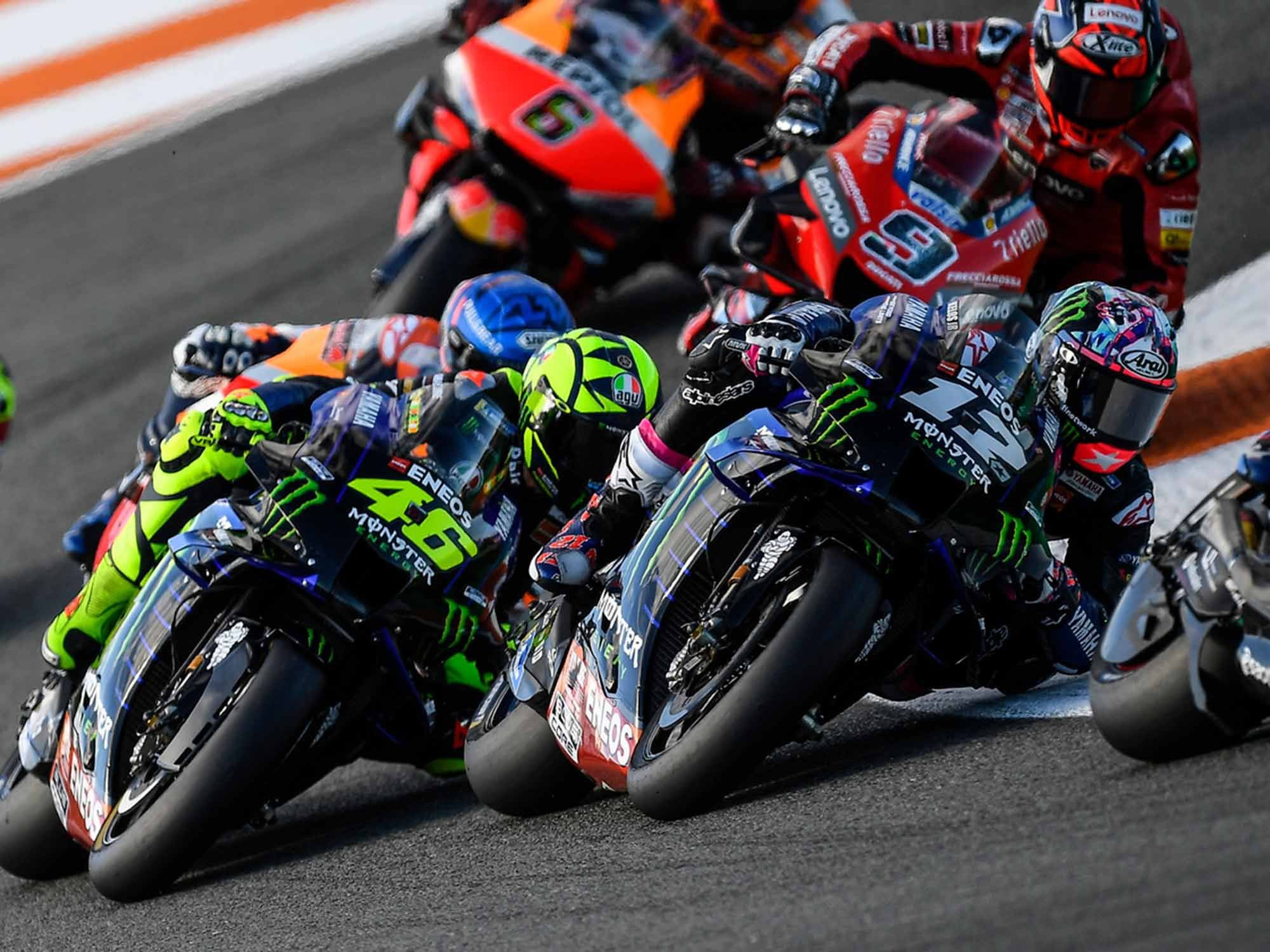
Valentino Rossi (46) was still trying to find his post-COVID-19 footing and finished 12th, while teammate Maverick Viñales (12) finished 10th. (Dorna/) Others complain that the 2020 MotoGP championship is not “real” because their favorite, Marc Márquez (Honda), could not take part after his unfortunate injury at Jerez 1. But did they say that Nicky Hayden was not a “real” champion in 2006, when Valentino Rossi’s Yamaha was stopped by severe chatter and Ducati riders Sete Gibernau and Loris Capirossi were out with injuries? No, they did not, for chatter and injuries are a part of racing; they can happen to anyone. So it is that Márquez’s humerus injury and whatever has slowed his recovery from it are also, like it or not, part of racing. Racing is what it is, and it is not governed by our preferences or fantasies.
Now that Andrea Dovizioso has announced he will take a sabbatical year off from racing, and the candid Cal Crutchlow has replaced Jorge Lorenzo on Yamaha’s test team, the changing of the guard in MotoGP is complete save for Rossi, who will leave the Yamaha factory team for a satellite bike next year. He is at present trying to come back to form following his COVID-19 illness.
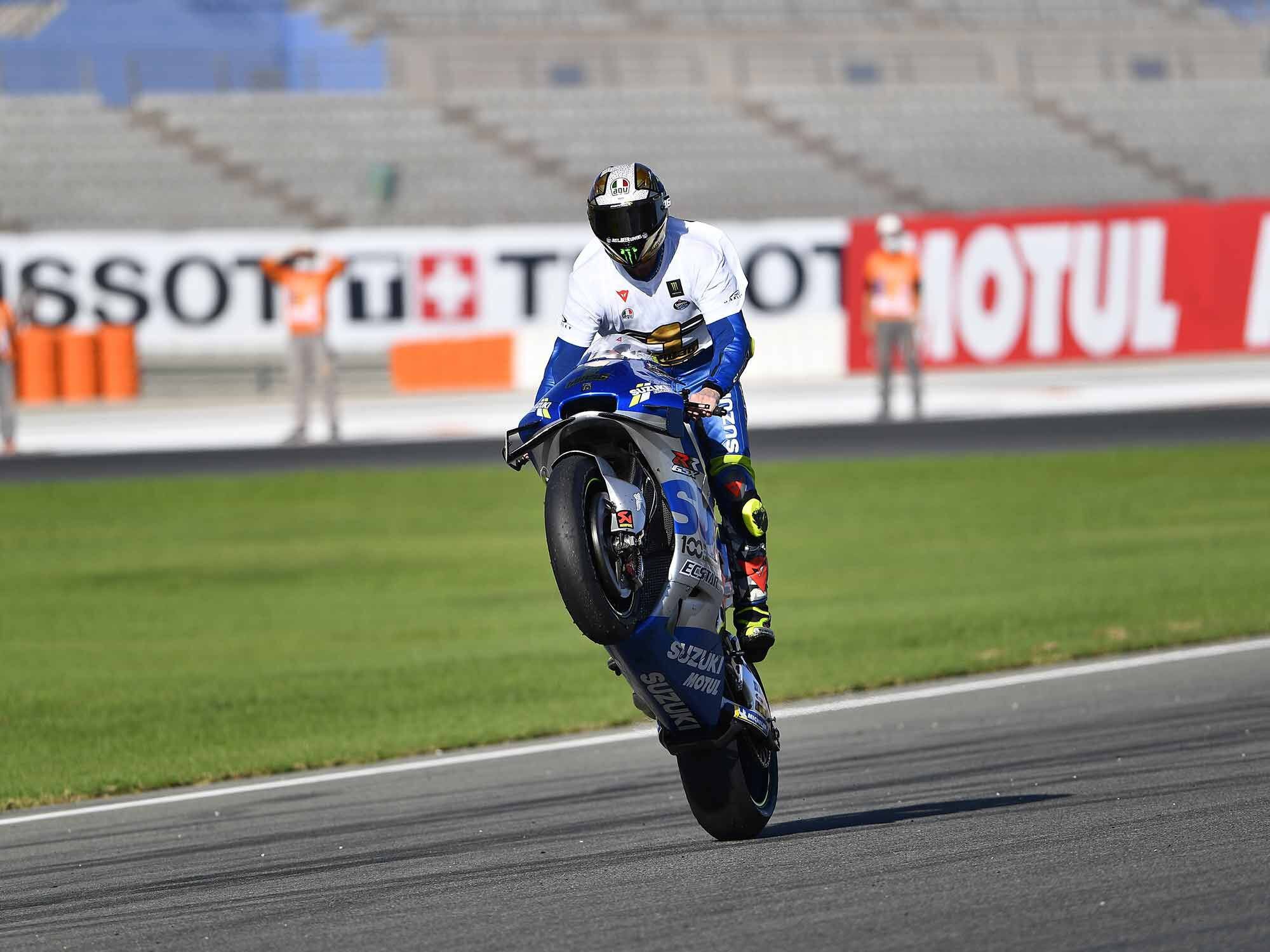
Mir and a champion’s celebration. Just six years ago, Mir was racing the Red Bull Rookies cup. (Suzuki /) Further change is evident among manufacturers, with three KTMs in the top six this weekend (third, fifth, and sixth) and Suzuki taking its first GP world championship since Kenny Roberts Jr. won the 500cc title in 2000. This suggests that, in high level motorcycle racing as in other things, a fresh look may reveal things that years of staring cannot. From the things riders say, it seems that certainly Yamaha and probably Ducati as well exert pressure on their riders to adhere to established setup “protocols.” Both companies have been in the series a long time and have vast bodies of information that should be valuable. Is it? The fact that Yamaha satellite bikes so often outdo the factory entries suggests that experience can be a synonym for fossilized thinking. Ducati, from 2008 onward several years, seemed more determined to develop the motorcycle its way than to develop it to win races.
New manufacturers and satellite teams, on the other hand, having less stored data to guide them, must rely on the here and now for setup clues. Yet here is Dovizioso, having asked for more apex grip for more than five years, being allowed to leave the sport because higher-ups pressured him to be less analytical and more “instinctive.” Many would at present argue that it has been precisely Dovi’s analytical approach that has made recent Ducatis as strong as they are.
The new forces in MotoGP are earning their way forward through fresh evidence-based thinking, while those they are pushing aside cling to ideas, even traditions, that don’t work enough of the time to win championships.
-
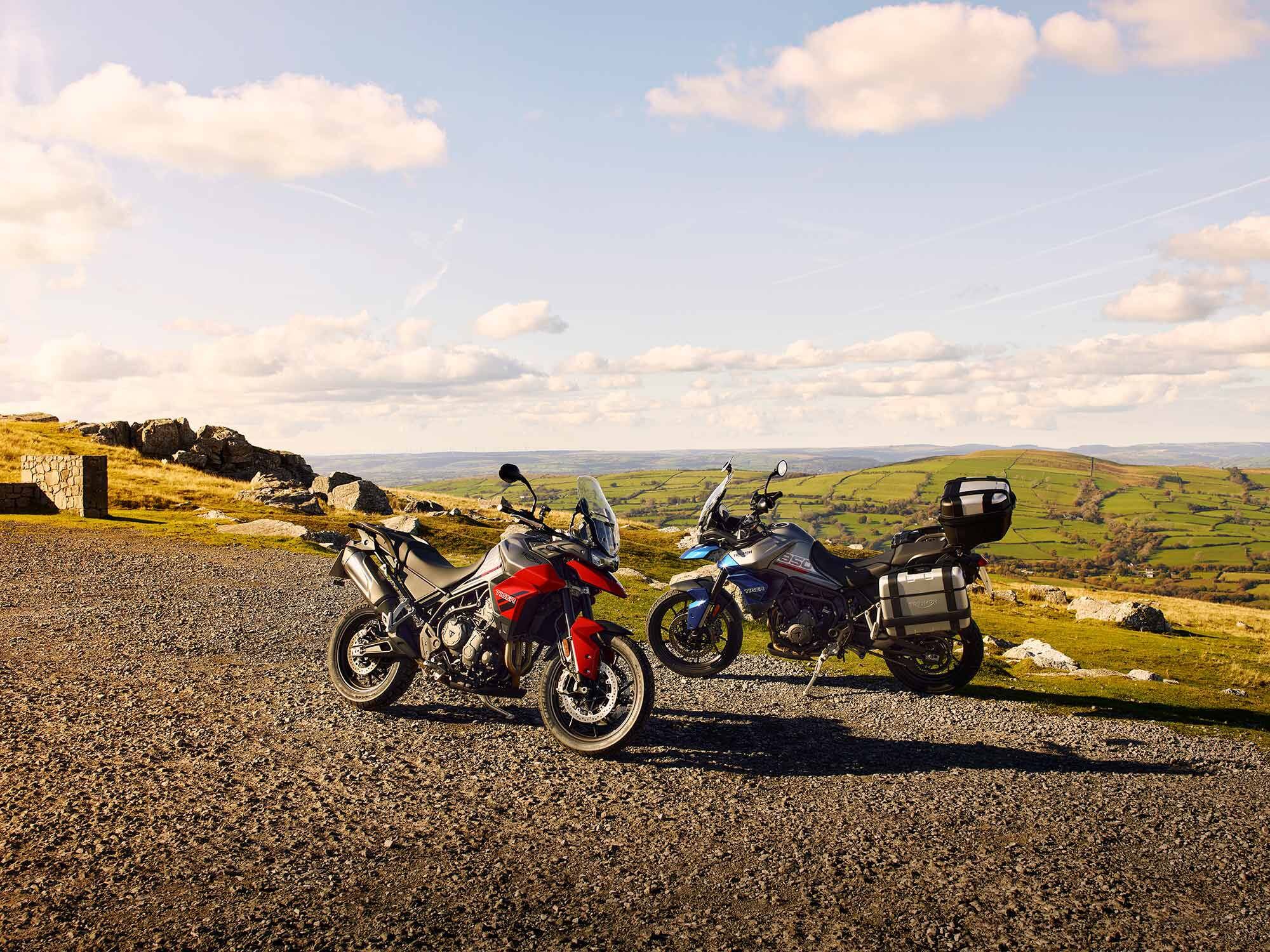
The 2021 Triumph Tiger 850 Sport. (Triumph /) In order to distinguish it from the rest of the Tiger 900 family, Triumph is replacing the base-model 900 with the Tiger 850 Sport, dropping the price to $11,995 and making a few minor tweaks.
In spite of the name change, the 2021 Tiger 850 Sport has the same 888cc T-Plane crank triple as the rest of the lineup; in fact, it’s essentially the same motorcycle as the outgoing base-model Tiger 900. The biggest difference is revised ECU mapping that delivers power and torque lower in the rev range and provides a friendlier, more linear power delivery. As a result of the softer tune, the 850 Sport loses more than 10 percent peak horsepower, producing a claimed 84 hp at 8,500 rpm and 60.5 pound-feet of torque at 6,500 rpm. The outgoing model (and the rest of the Tiger 900 range) produces a claimed 93.9 hp at 8,750 rpm and 64 pound-feet of torque at 7,250 rpm.
“The engine power target was set at the start of the project,” says Steve Sargent, Triumph chief product officer. “The focus was on producing a manageable and accessible power delivery at the bottom-end and midrange where most people will ride these bikes. While there is a reduction in power compared to the Tiger 900, the peak performance is still strong when compared to our direct competitor.”
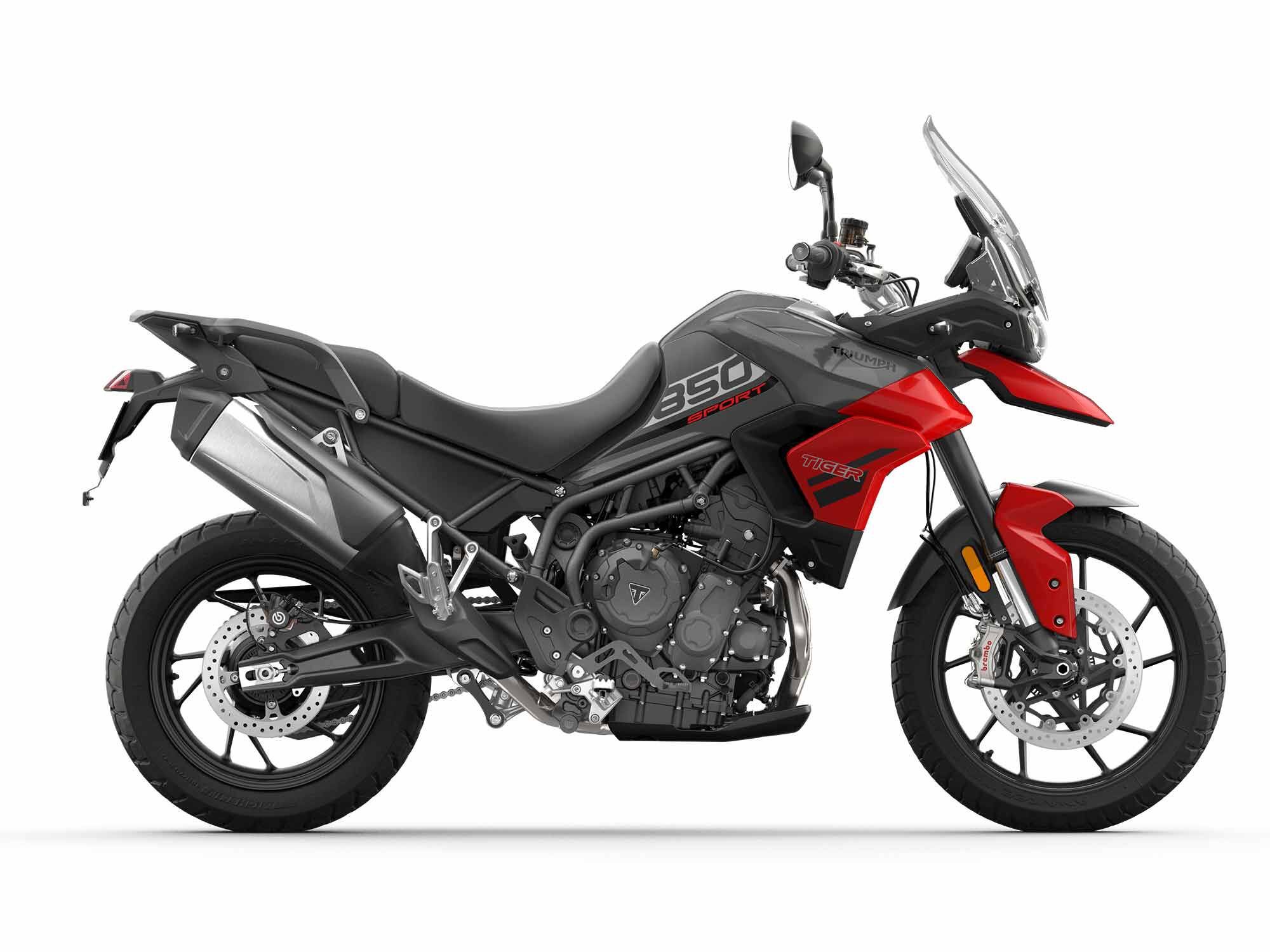
The 850 Sport in Graphite and Diablo Red. With a new name and more friendly tune, the 850 Sport stands apart from the 900 range. Like its higher-spec’d siblings, it’s an all-purpose motorcycle. In 850 Sport guise, Triumph is aiming it at riders who want to take advantage of a great platform but don’t need the ultimate expression of it. The ECU tune should make it an even more competent urban commuter. (Triumph/) The folks at Triumph illustrate the 850 Sport’s relationship to the Tiger 900 in German terms: as the BMW F 750 GS is to the F 850 GS, the Tiger 850 Sport is to the Tiger 900—same engine capacity, different electronic tune.
Other differences between the 850 Sport and the outgoing base-model 900 are a new graphics package, LED lighting, and the $500 decrease in price.
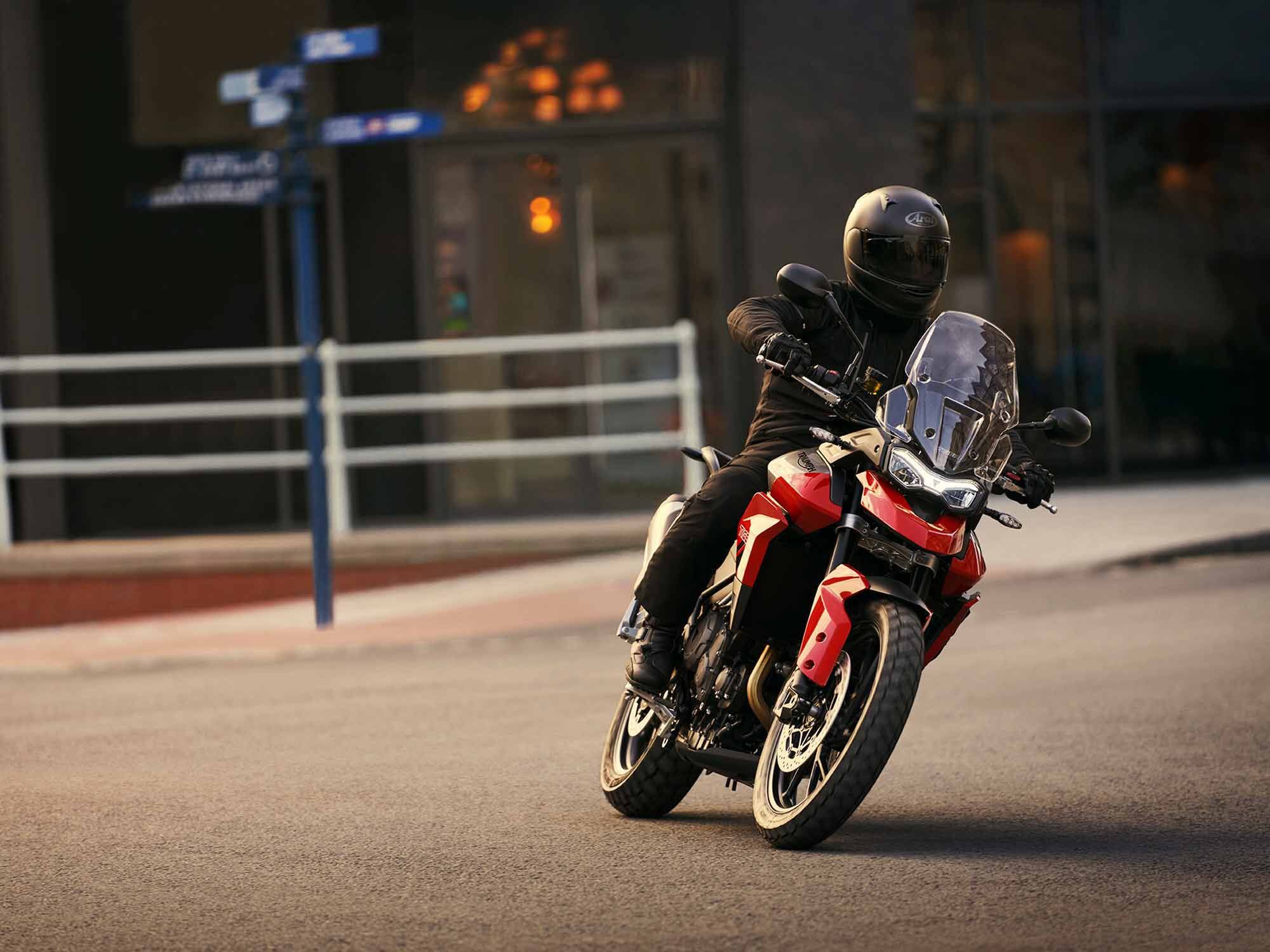
With cast wheels, the 850 Sport, like the GT models, is aimed at street riding. (Triumph/) At first glance, it may seem an odd move, but upon further reflection, the name change makes sense considering its relationship to the rest of the lineup. The Tiger 900 GT models range from $14,300 to $16,200, and the off-road-focused Rally models range from $15,000 to $16,700. They feature a ton of tech and features that, frankly, not every rider wants or needs. The gulf between the base model and the top-end Tiger 900s is large enough that it warrants separating out the most basic model. Triumph hopes by doing so it will create more clarity for consumers and shine a light on the base model’s value.
Let’s put it in human terms. If, say, you have a brother who is more successful and better-looking, you may feel more at ease with yourself when you’re not standing right next to him, wondering why he got broad shoulders and a medical degree while all you could muster is puny arms and a paltry BA in English. Maybe I’m just projecting here.
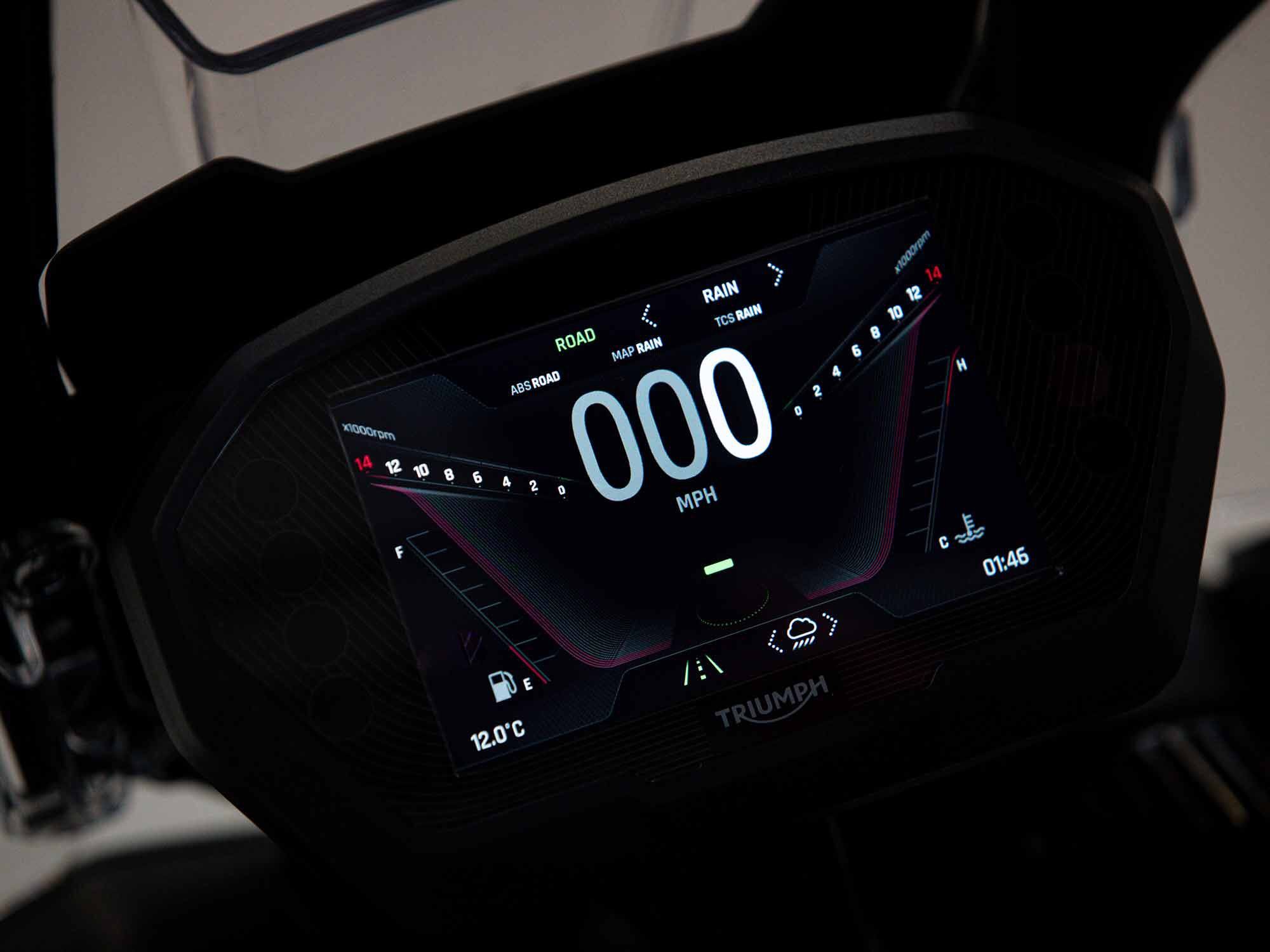
The 850 Sport’s 5-inch TFT display is clear and easy to use and it still feels like a premium touch. (Triumph/) Anyway, by renaming the base model, Triumph emphasizes that the entry-level middleweight triple is really targeted at a different rider than the bikes in the 900 range. It’s not a cut-rate Tiger 900 GT Pro (OK, it sort of is) as much as it’s a bike with its own unique identity. Sure, it doesn’t have a massive 7-inch TFT display, five ride modes, fully adjustable suspension, or a quickshifter, but it’s still very well equipped. The Tiger 850 Sport has two ride modes, a 5-inch TFT dash, and the same engine, frame, and top-shelf Brembo Stylema brakes as the rest of the lineup—pretty impressive, really.
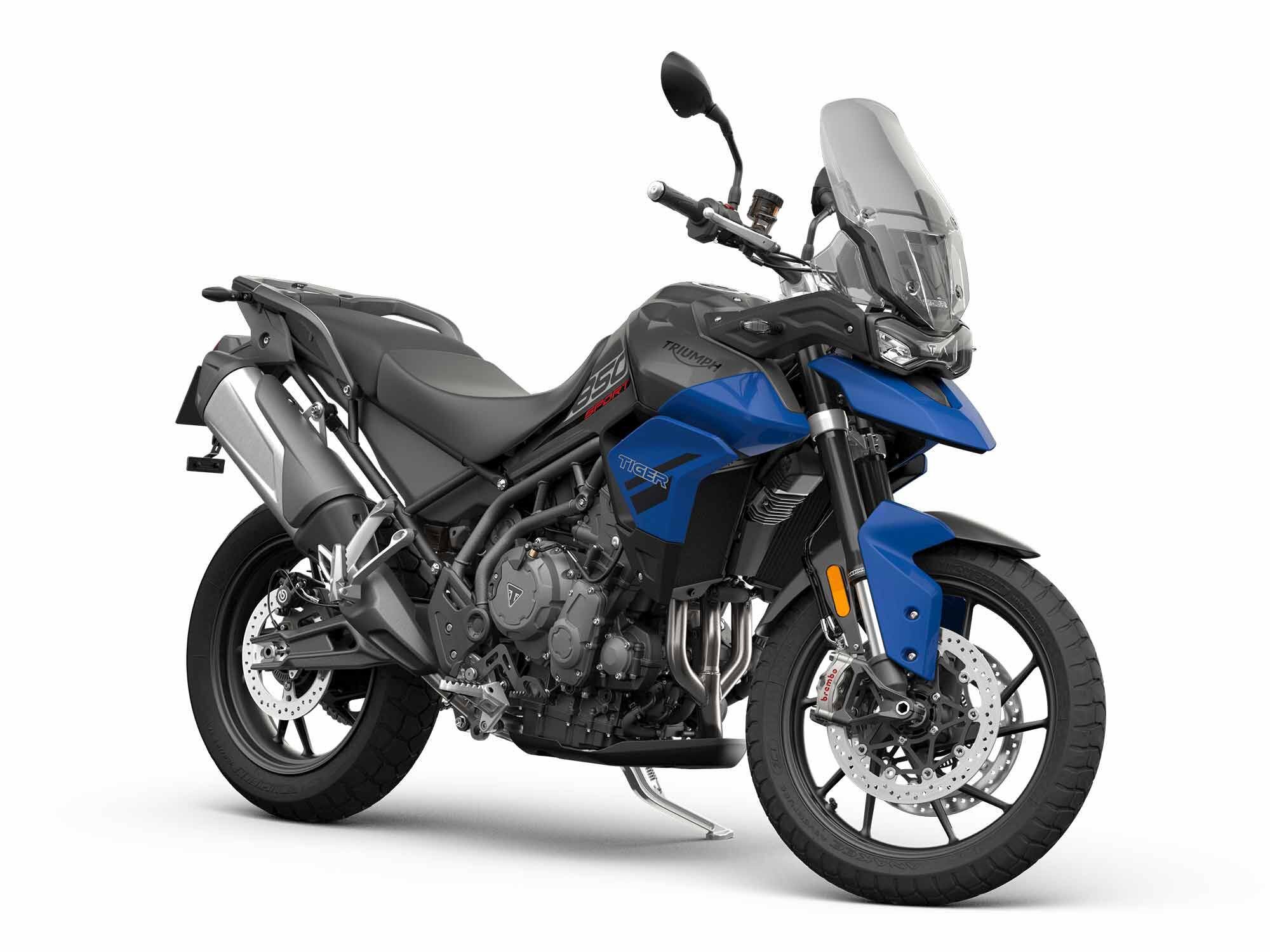
The 850 Sport in Graphite and Caspian Blue. Triumph is hoping its pared-down spec sheet is less intimidating to some consumers. (Triumph/) If one wants a modern three-cylinder bike to commute on, ride on the weekends, and take on the occasional tour, maybe a $16,000 adventure bike is overkill. If you like the basic package of the Tiger 900, but aren’t so nearsighted that you need a 2-inch-larger dash, aren’t so hardcore that you need a Rally, and can’t be bothered with all the rider aids and adjustability of the higher-priced models, then the Tiger 850 Sport may be for you. It has a lot to feel good about; just don’t park it next to a Tiger 900 GT Pro.
-
-
Triumph has announced its latest addition to the Tiger family: the 2021 Triumph Tiger 850 Sport. As the aluminum cast 19/17-inch wheel combo would suggest, the 850 Sport is a more road-focused version of the adventurous Triple, aimed at newer riders and/or simply riders who don’t feel the need for all of the fancy tech and high-performance bits and bobbles found on the other Tiger trims (and the associated cost).
What caused Triumph to discard its previous base model Tiger 900 for this new “850”? I’ll let the folks in Hinckley tell you for themselves: “We have identified that there is a significant customer base who are looking for a manageable and accessible option, where the price, package of specification, and performance all play a key part in their decision-making.
An example of this customer segment can be seen with the sales of the two different performance/specification options available with the BMW F750 GS and the F850 GS, where the F750 GS is potentially purchased in preference to the F850 GS for its more manageable set-up and performance, as well as its comparatively more accessible price. This could be the case for people who are buying their first big bike or adventure bike, where the appeal of maximum power and specification is not their main motivation.”
If that doesn’t tell you who the Brits are gunning for, I can’t help you. Triumph is clearly acknowledging the success BMW has had offering two similar models aimed at entirely different riders. The Tiger 850 Sport follows suit in that regard with an electronically detuned engine that is otherwise mechanically the same as the powerplant found in the Tiger 900s. For European riders, the new “850” will meet A2 licensing requirements making it available to a larger audience of interested parties.
Triumph says the new model will make 83.8 hp at 8500 rpm with 60.5 lb-ft of torque at 6500. That’s down from Hickley’s claim of 93.9 hp at 8750 and 64 lb-ft of torque at 7250 for the other Tigers. For reference, when we last had the Tiger 900 Rally Pro on the dyno it made 84 rear-wheel hp at 8900 rpm and 57.1 lb-ft of torque at 6300.
The price of the Tiger 850 Sport will be just over $500 less than the outgoing base model with a U.S. MSRP of $11,995. For an in depth look at the Tiger range, check out my First Ride review from last February. A quick recap of some of the things we’re happy to see still on the 850 Sport include the five-inch TFT display, Marzocchi suspension, and Brembo Stylema calipers. ABS cannot be disabled and is not lean sensitive, while traction control can be adjusted with the two included ride modes (Road and Rain) or disabled entirely.
Stylistically, the 850 looks nearly identical to the rest of the Tiger lineup – mostly because it is – however, the Sport receives two new color options: Graphite and Diablo red or Graphite and Caspian blue. The 850 Sport will also come with Triumph’s two-year unlimited mile warranty and service intervals of 10,000 miles. Expect to see this new model hitting dealership showrooms in late January 2021.
After testing the Tiger Rally Pro and GT Pro model in Morocco as well as spending some time on the Rally Pro here at home in California, we’re sure this latest addition to the streak will be an equally great motorcycle. Having the same “bones” as the previous 900s, the Triumph Tiger 850 Sport seems poised to be just that.
2021 Triumph Tiger 850 Sport Specifications Engine Type Liquid-cooled, 12 valve, DOHC, inline 3-cylinder Displacement 888 cc Bore x Stroke 78.0 mm x 61.9 mm Compression 11.27:1 Maximum Power 84 hp at 8,500 rpm (claimed) Maximum Torque 60.5 lb-ft. at 6,500 rpm (claimed) Fuel System Multipoint sequential electronic fuel injection Exhaust Stainless steel 3 into 1 header system, side mounted stainless steel silencer Final Drive O-ring chain Clutch Wet, multi-plate, slip & assist Gearbox 6 speed Frame Tubular steel frame, bolt on sub frame Swingarm Twin-sided, cast aluminum Front Wheel Cast alloy, 19 x 2.5 in Rear Wheel Cast alloy, 17 x 4.25 in Front Tire 100/90-19 Rear Tire 150/70R17 Front Suspension Marzocchi 45mm upside down forks Rear Suspension Marzocchi rear suspension unit, manual preload adjustment Front Brakes Twin 320mm floating discs, Brembo Stylema 4 piston Monobloc calipers. Radial front master cylinder, ABS Rear Brakes Single 255mm disc. Brembo single piston sliding caliper, ABS Instruments 5″ TFT screen Length 88.50 inches (2248 mm) Width (Handlebars) 32.67 inches (830 mm) Height Without Mirrors 55.51-57.48 inches (1410-1460 mm) Seat Height 31.88-32.67 inches (810-830 mm) Wheelbase 61.25 inches (1556 mm) Rake 24.6 ° Trail 5.24 inches (133.3 mm) Dry weight 423 lbs (claimed) Fuel Tank Capacity 5.28 gallons 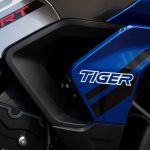
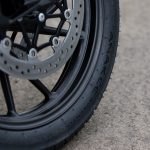
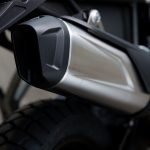
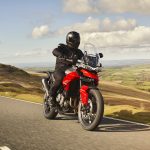

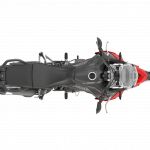
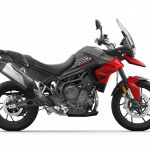
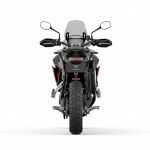
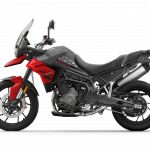
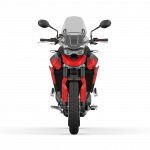
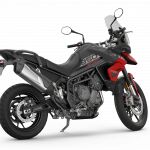
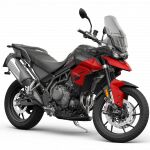
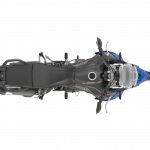


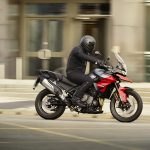




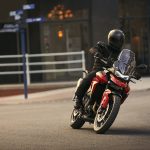
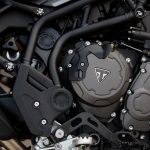
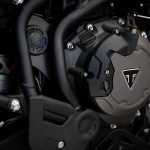
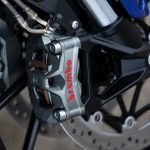
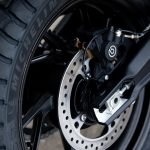
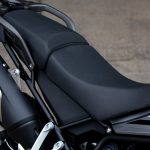
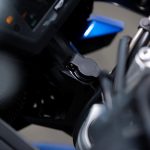
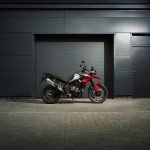
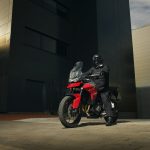

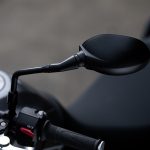
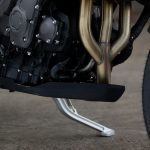
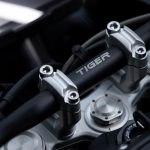
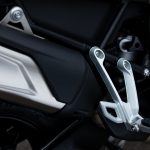
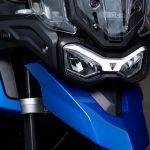

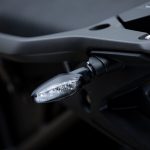
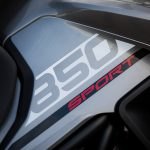
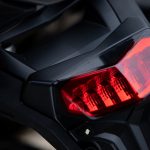
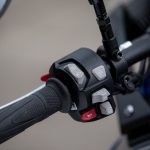
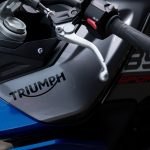

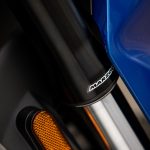
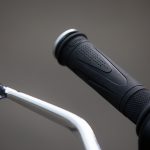
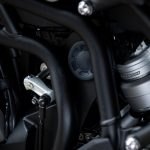
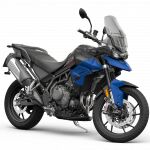
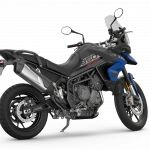
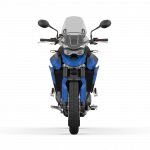
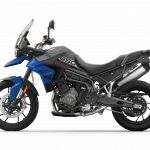
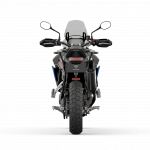
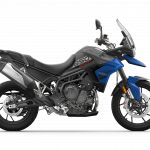
The post Everything You Want to Know About the 2021 Triumph Tiger 850 Sport (Except What It’s Like to Ride) appeared first on Motorcycle.com.
http://feeds.feedburner.com/~r/Motorcyclefeed/~4/Bspa7LEZ278 -
Harley-Davidson‘s electric bicycle sub-brand Serial 1 has revealed its initial line-up of four electric bicycles. The debut line-up of pedal-assist ebikes range in price from $3,399 to $4,999 and will initially launch in the U.S. and Germany. Serial 1 is accepting pre-orders now, with deliveries expected to begin in March 2021.
The launch line-up includes the “urban playbike” MOSH/CTY and the RUSH/CTY commuter bike which will be offered in regular and step-thru frame designs plus a higher performance RUSH/CTY SPEED version. All four models share similar components including integrated lighting, hydraulic disc brakes, a belt drive, and a Brose S Mag electric motor.
The motor claims 250W of continuous power and 66 lb-ft. of torque, which should be more than enough to help climb steep hills and enable quick starts from a stop.The motor is mounted near the crank for a lower center of gravity. An electronic torque sensor measures the amount of pressure applied to the pedals and calculates how much assistance is required. The motor offers four ride modes: Eco for gentle assistance, Tour for maximizing battery usage, Sport for for higher performance and Boost for countering steep hills or strong headwinds. There’s also a walk assist function to make it easier to push the ebikes while on foot.
For the MOSH/CTY, RUSH/CTY and RUSH/CTY STEP-THRU models, the motor is limited to a maximum assistance speed of 20 mph while the RUSH/CTY SPEED bumps that up to 28 mph. All four models have aluminum frames with internally-routed cables. The motors are powered by lithium-ion batteries integrated into the lower frame that can be removed for off-the-bike charging. The battery comes in two sizes, a 529 Wh pack that claims a 2.6-hour charge time and a 706 Wh pack claiming a charge time of 3.5 hours.
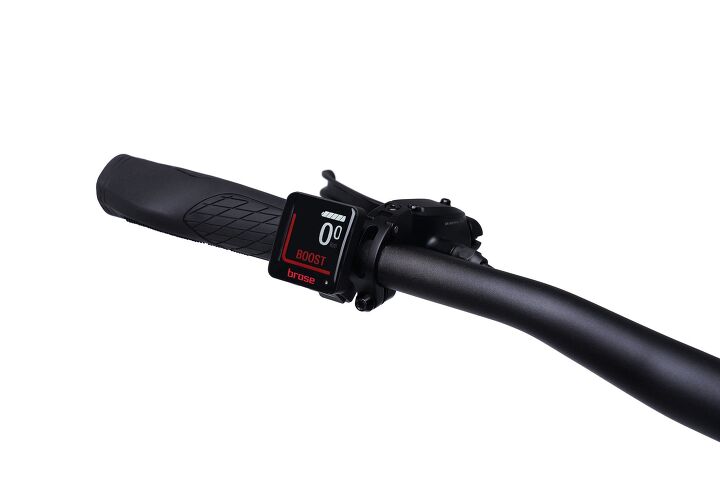
The three RUSH/CTY models come with a 1.5-inch TFT display that shows ride mode, current speed, odometer/trip meter, battery charge level and lamp on/off status.
Harley-Davidson announced the Serial 1 sub-brand during its previous quarterly report in late October. The project began as a skunkworks project in the company’s product development center before being spun off into its own brand named after Harley-Davidson’s first motorcycle, nicknamed the “Serial Number One.”
Serial 1’s e-bicycles are designed in Milwaukee, but the company itself is headquartered in Lehi, Utah, which means it has some autonomy from the parent company. The company is a bit cagey about where the bikes are produced, however, saying they will be manufactured by “an experienced global eBicycle supplier” conducted to “world-class standards with oversight by Serial 1.”
The Motor Company has dabbled in bicycles before, launching a line of bikes in 1917 in hopes of attracting women and youths. That venture only lasted until 1923, however, due to low sales. Fast forward a century to today, and Harley-Davidson joins a number of other manufacturers producing e-bicycles. We’ve previously published a review of Yamaha’s pedal-assist bicycles, while Triumph revealed its Trekker GT e-bicycle earlier this year. Meanwhile, Pierer Mobility recently acquired German bicycle manufacturer R Raymon with plans to produce e-bicycles under its Husqvarna and Gas Gas brands.
Serial 1 MOSH/CTY – $3,399
The MOSH/CTY is a designed for urban recreational riding rather than commuting. As such, it is a single-speed bike with the smaller 529 Wh battery, with Serial 1 claiming a range of 35-105 miles. It also lacks the 1.5-inch TFT display offered on the other models. The MOSH/CTY is available in four frame sizes: small, medium, large and extra-large. The large model claims a weight of 48.3 pounds.
The Serial 1 MOSH/CTY will be offered in Matte Black/Glossy Rowdy Blue or Matte Black/Gloss Midnight Black.
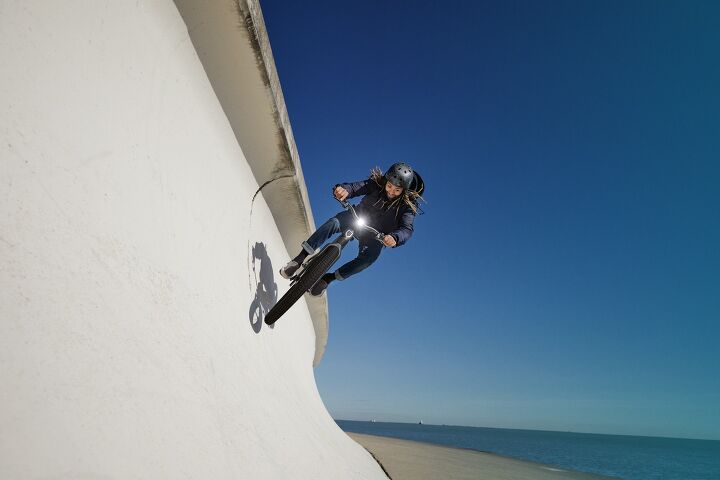
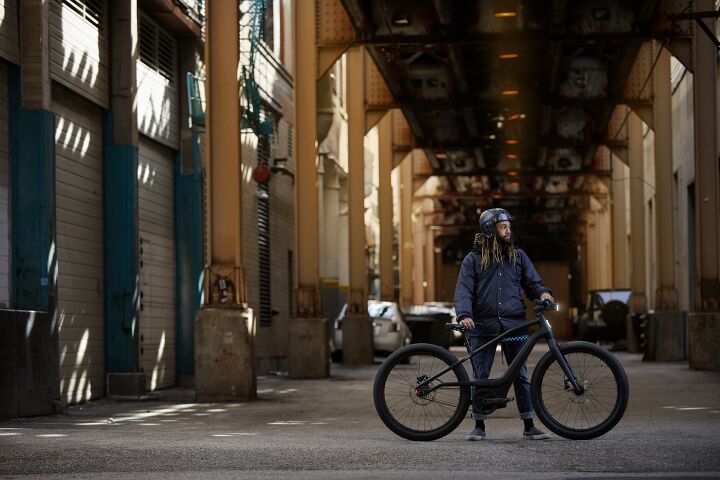
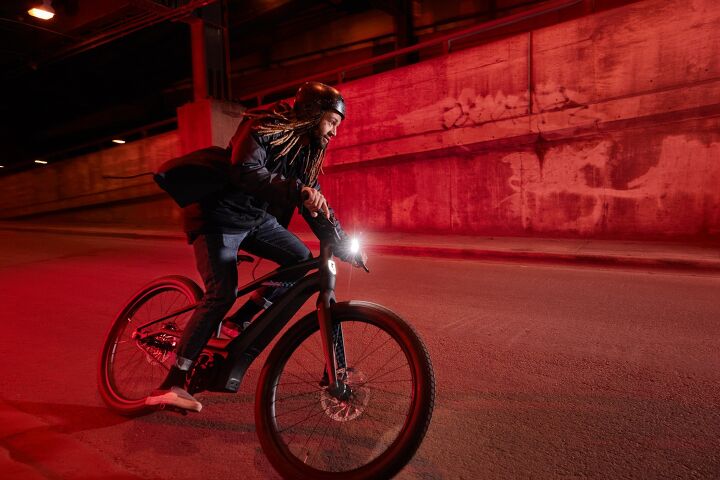
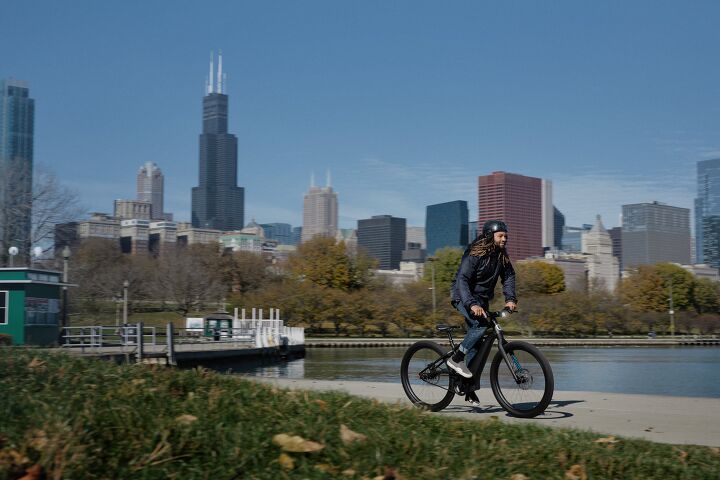
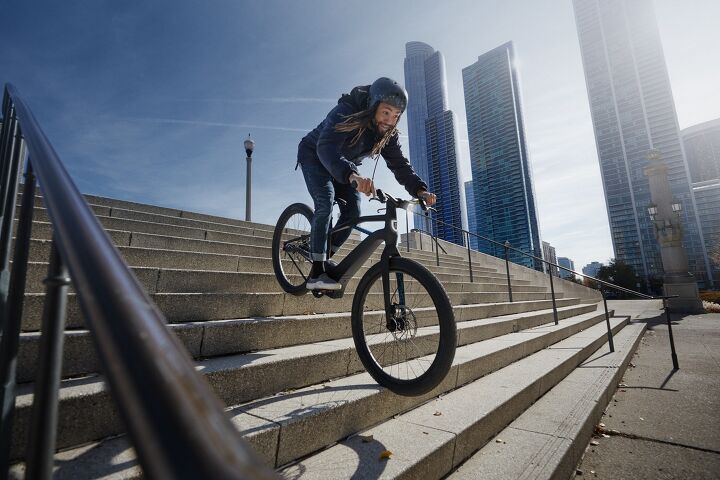
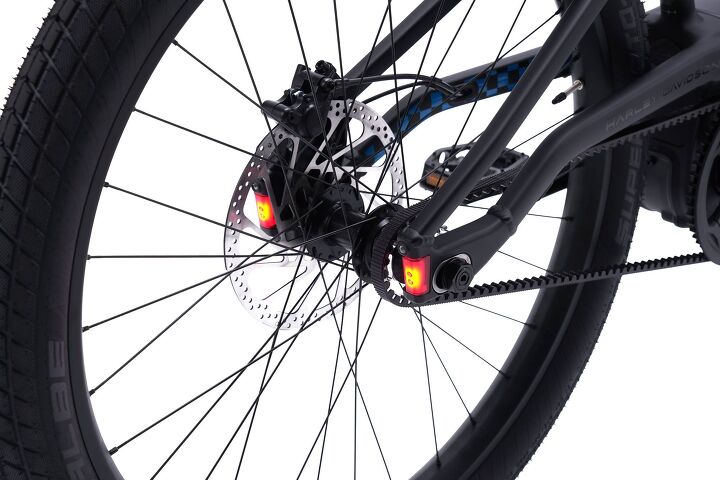
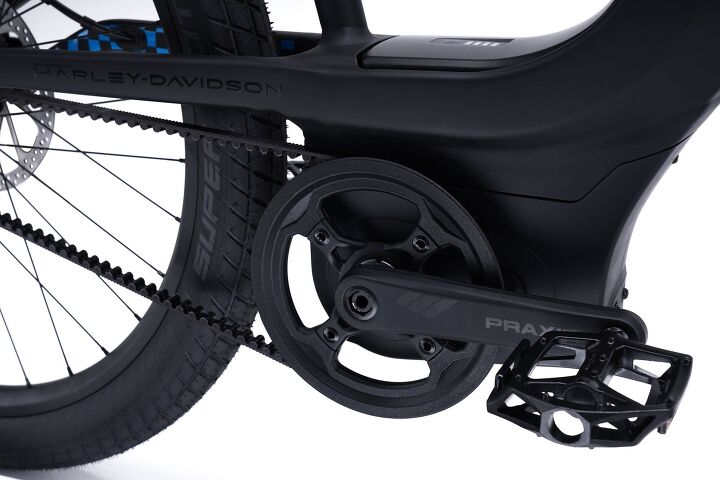
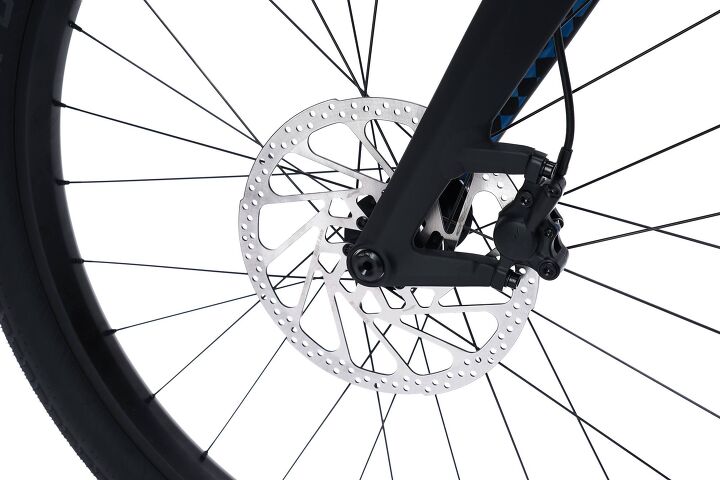
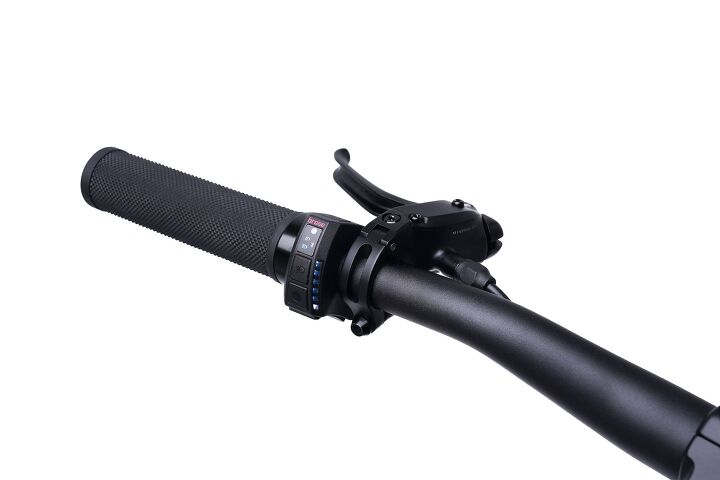
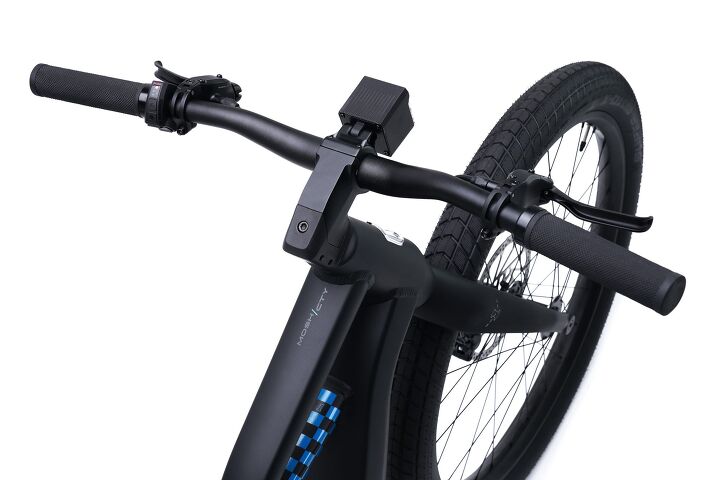
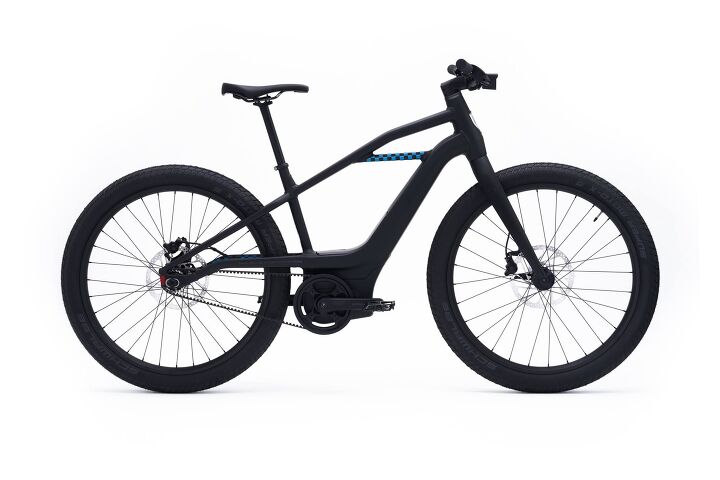
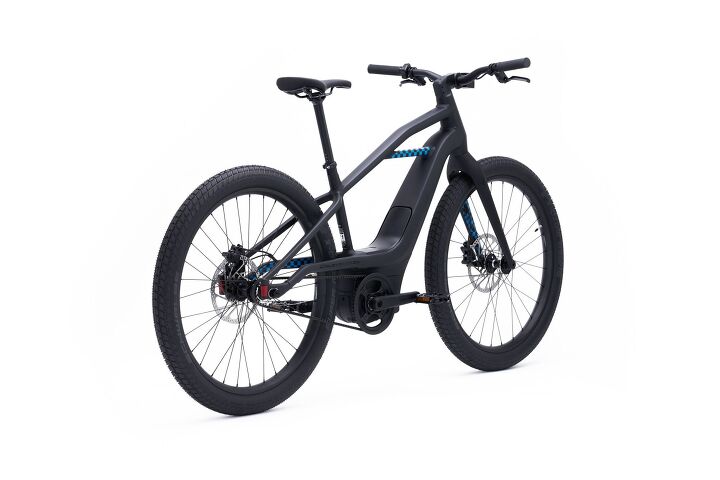
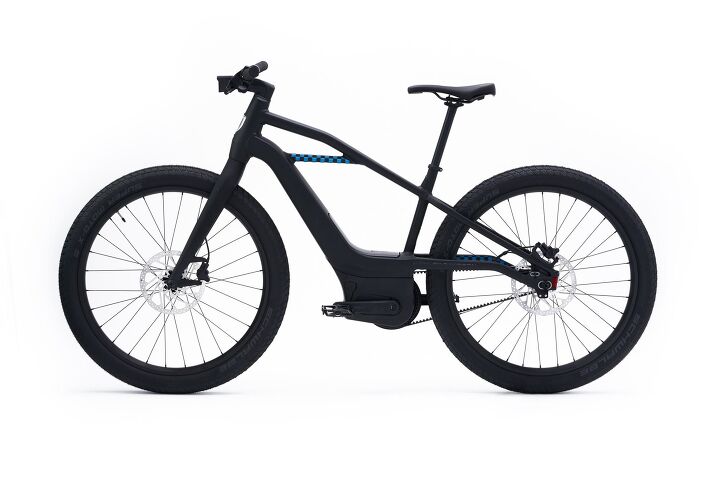
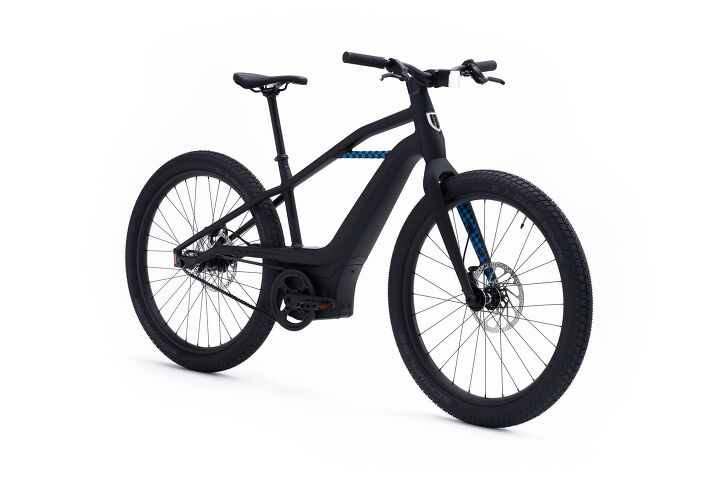
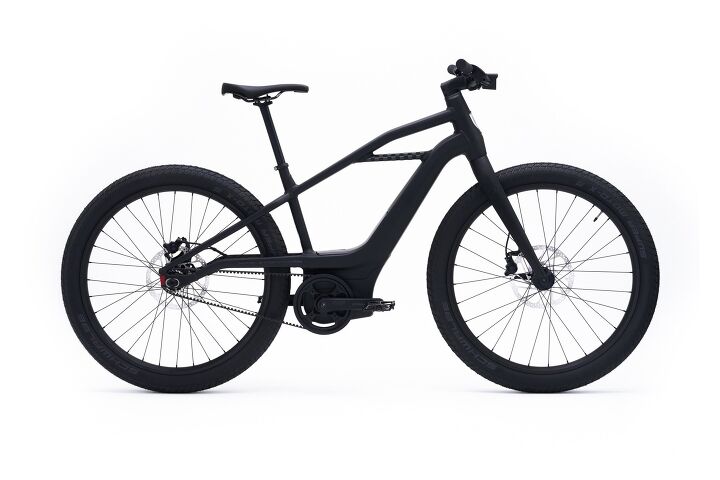
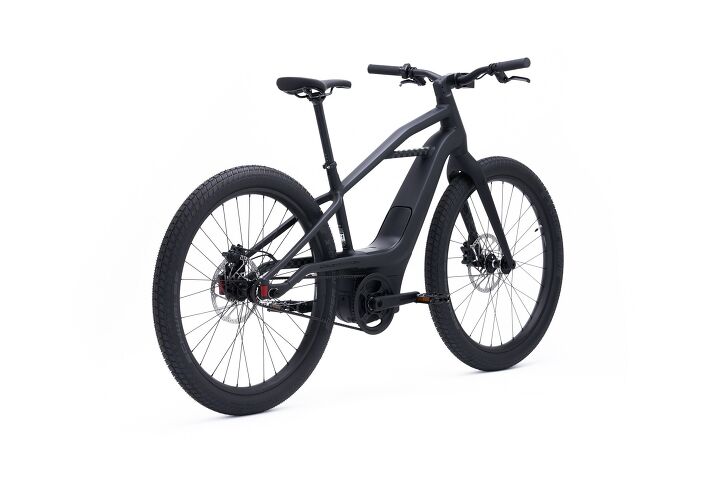
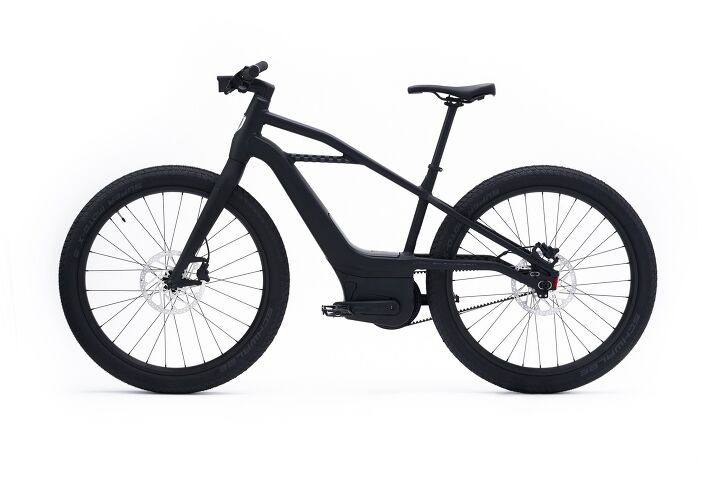
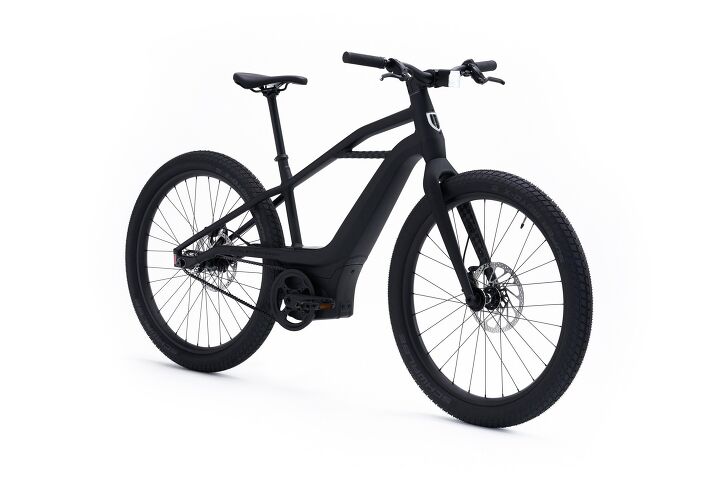
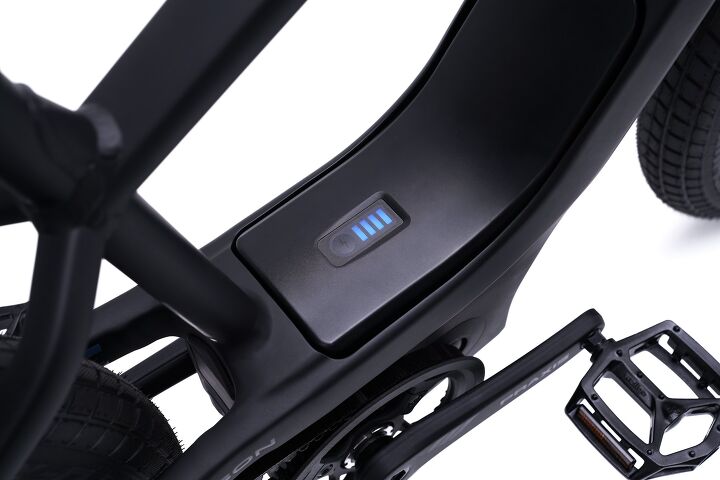
Serial 1 RUSH/CTY – $4,499
The RUSH/CTY is a commuter model and comes with integrated front and rear racks, a 706 Wh battery and an Enviolo Automatiq electronically-controlled constantly variable transmission (CVT). The RUSH/CTY is available in four frame sizes, with the large frame claiming a weight of 59.0 pounds. Serial 1 claims a range of 35 to 115 miles.
The Serial 1 offers the RUSH/CTY in Matte Vapor Silver/Gloss Burst Orange/Matte Black or Gloss Midnight Black/Matte Black.

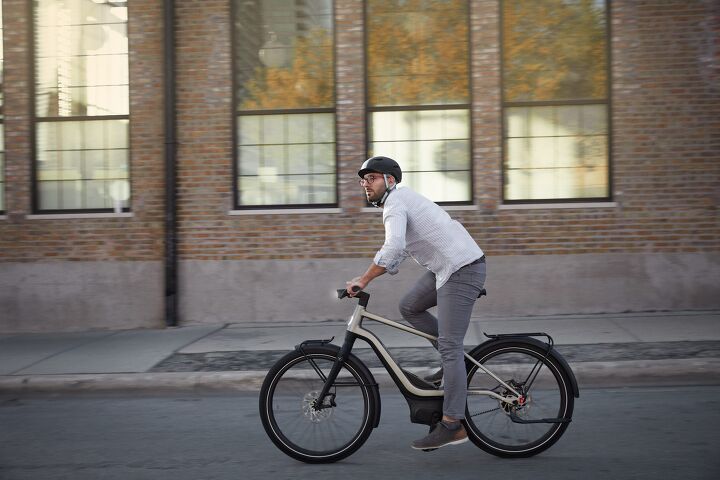
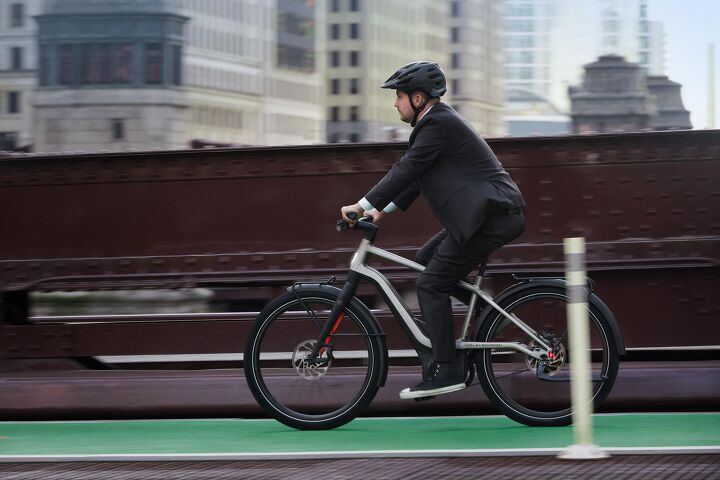
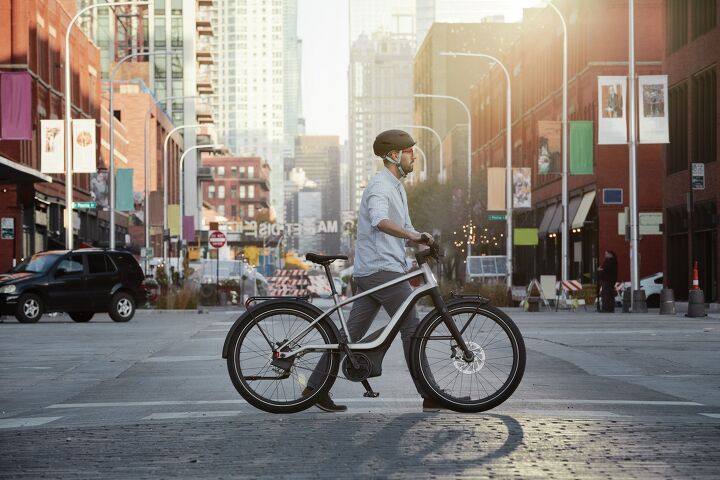
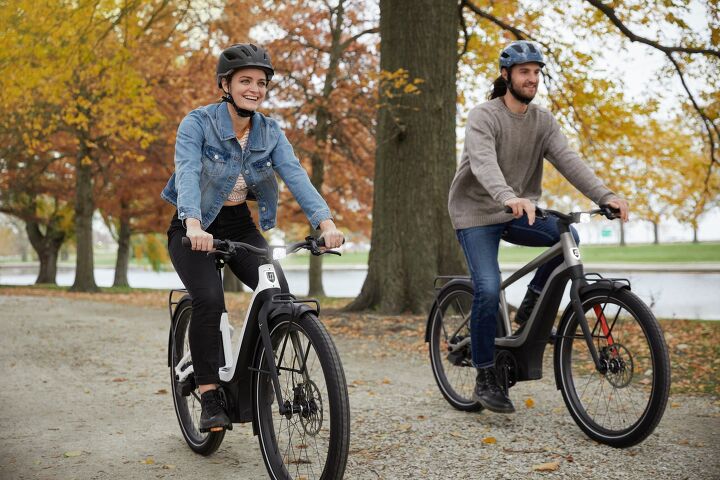
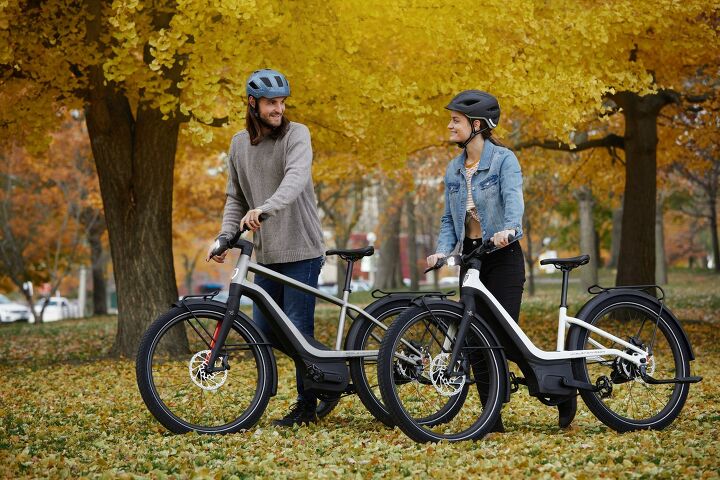
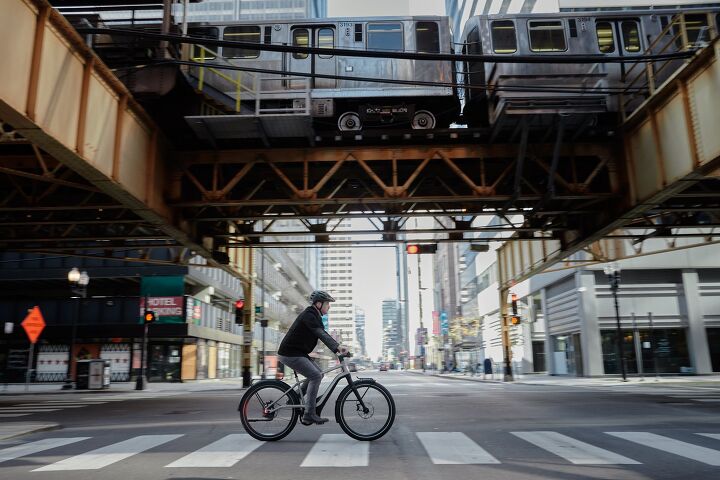
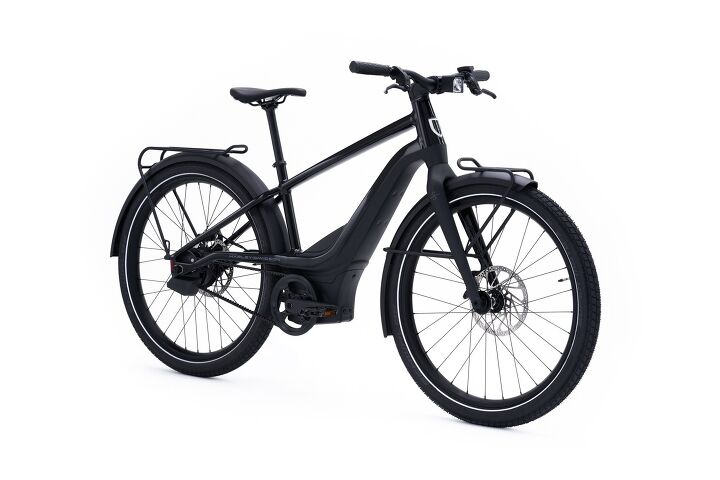
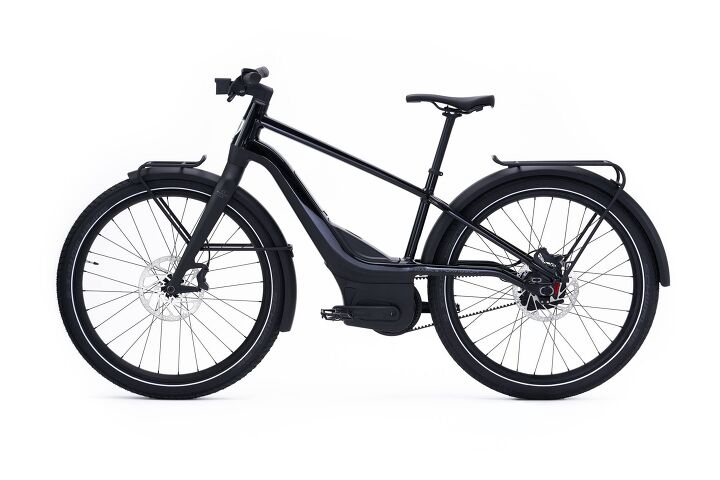
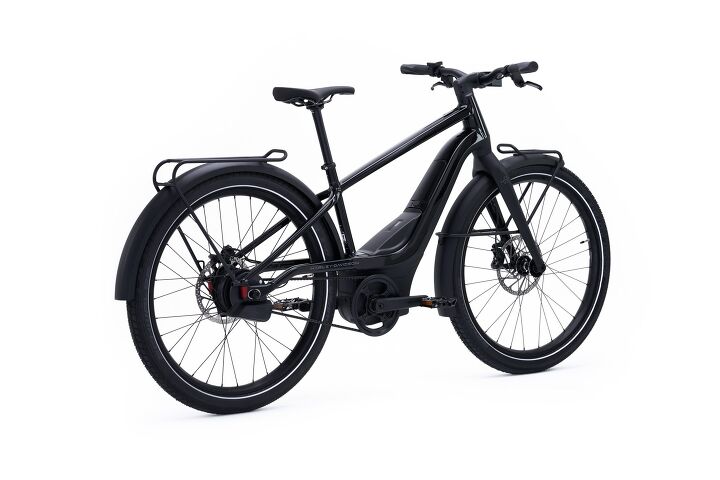
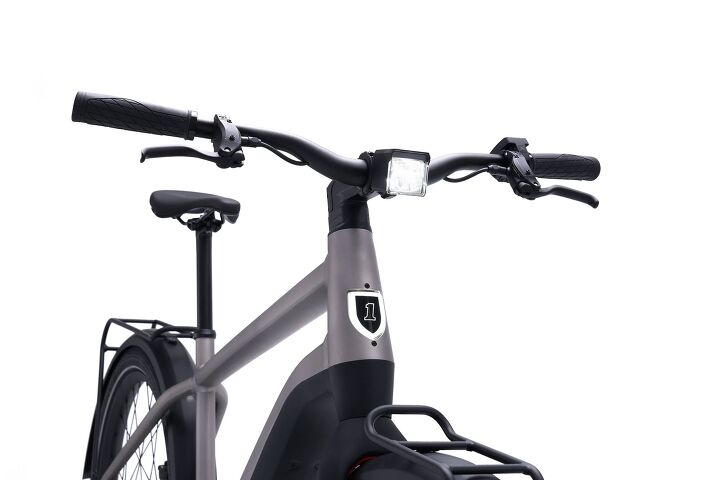
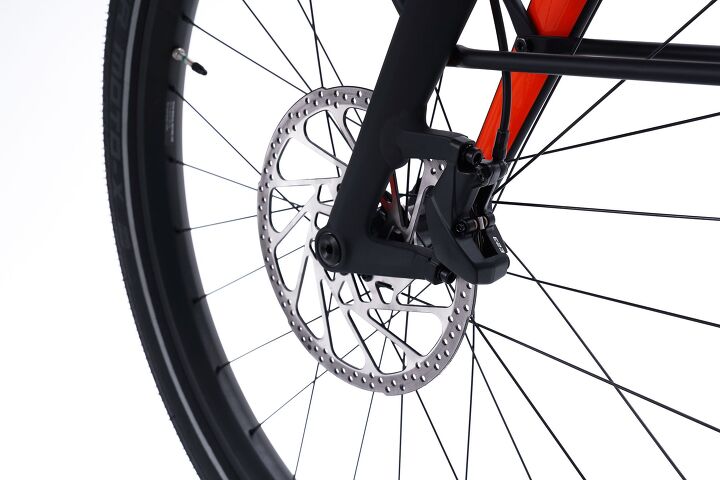
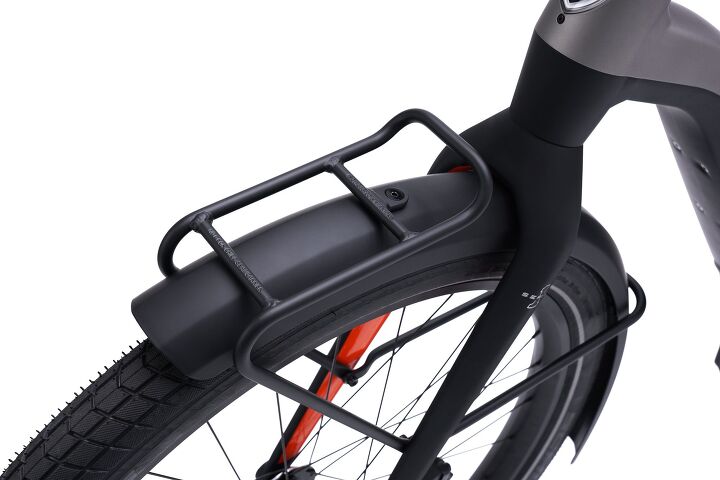
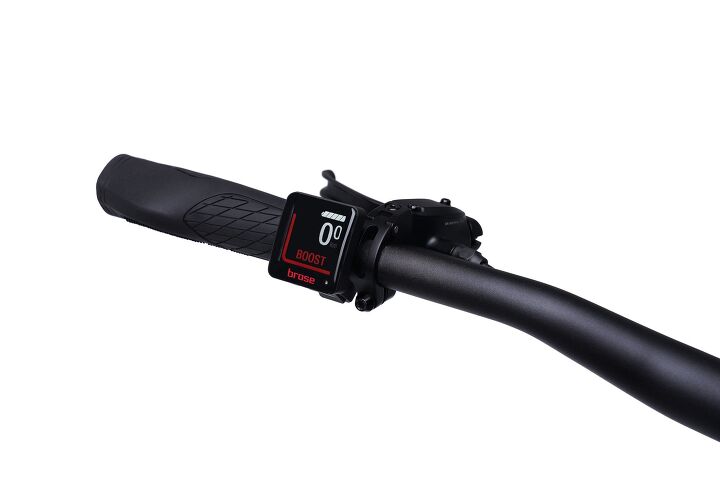
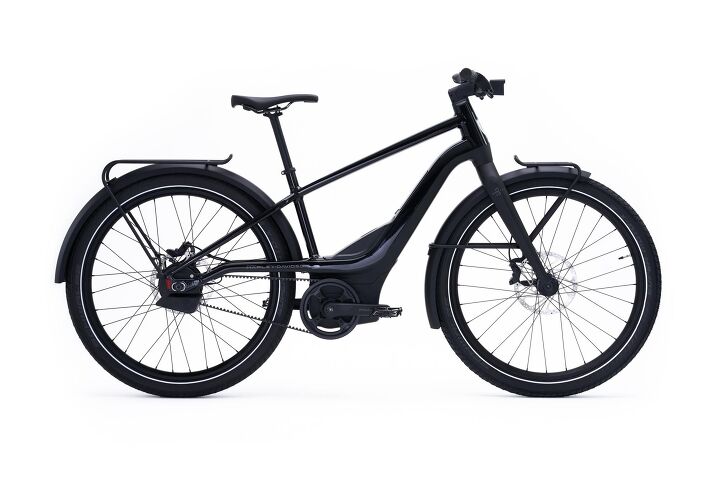
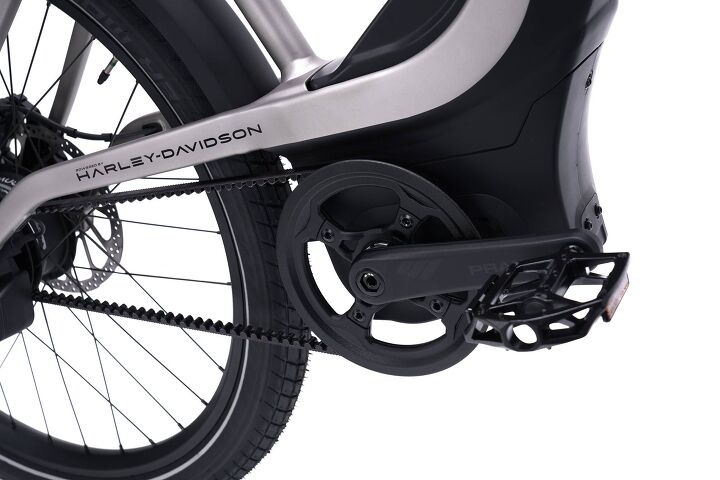
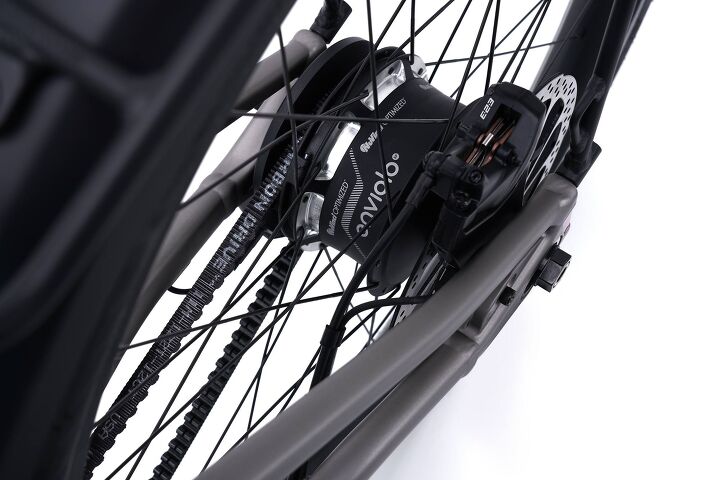
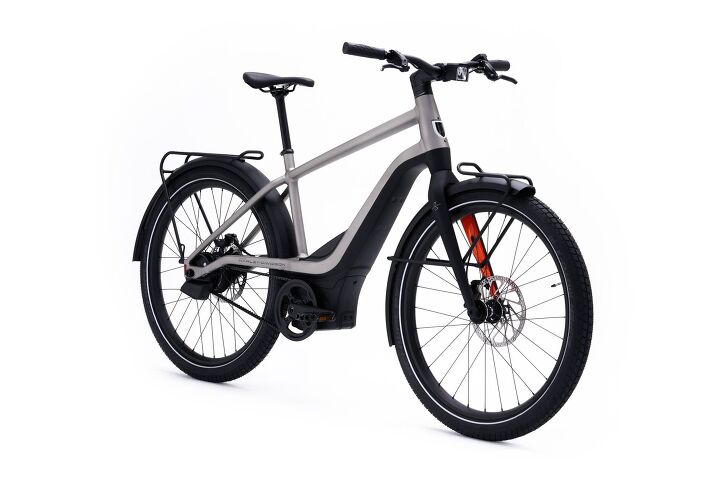
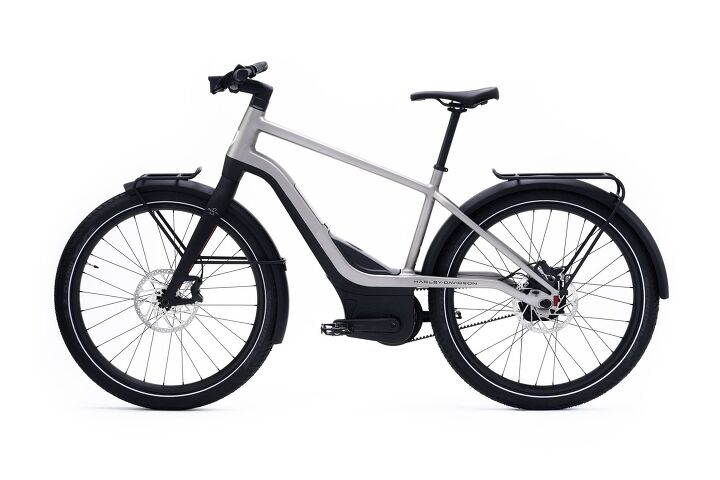

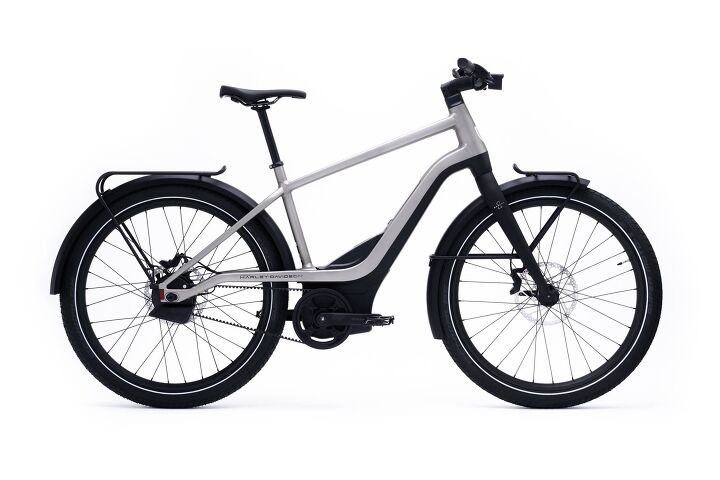
Serial 1 RUSH/CTY STEP-THRU – $4,399
The RUSH/CTY STEP-THRU is similar to the regular RUSH/CTY model but, obviously, with a step-through frame which makes it easier for riders to mount or put their feet down at a stop. The STEP-THRU is only offered in small, medium and large sizes, but disappointingly a 529 Wh battery. The smaller battery may be to help reduce weight, as the step-through frame is heavier than the regular frame, with Serial 1 claiming a weight of 59.5 pounds for the medium size. The heavier weight and smaller battery mean the STEP-THRU model only offers a range of 30 to 90 miles.
Serial 1 offers the RUSH/CTY STEP-THRU in Gloss White/Gilded Denim/Matte Black or Gloss Midnight Black/Matte Black.

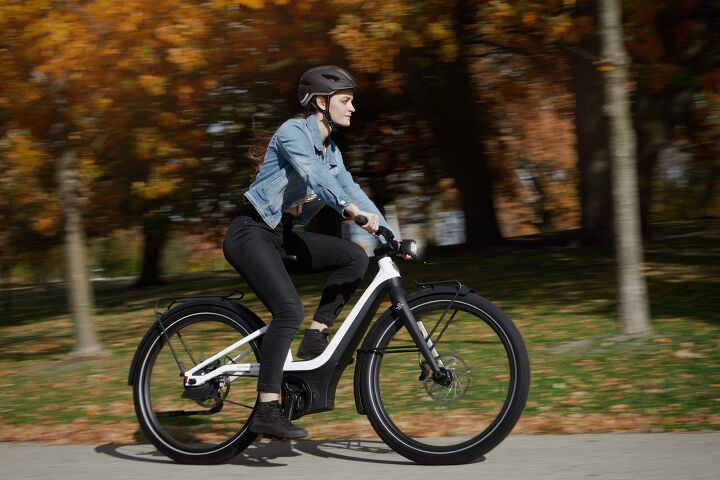
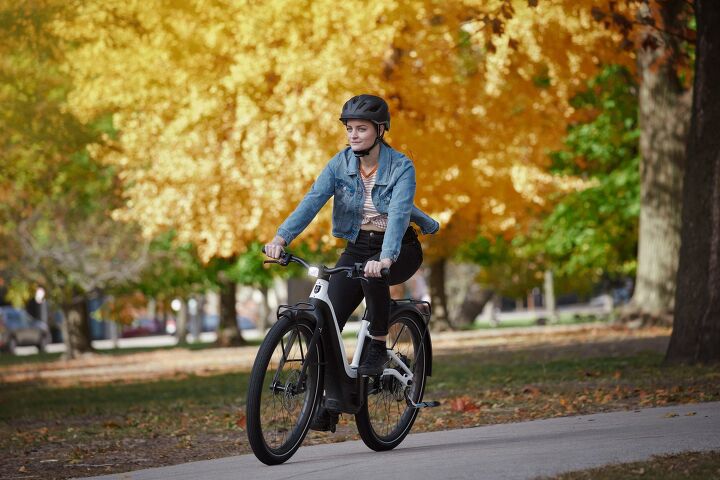
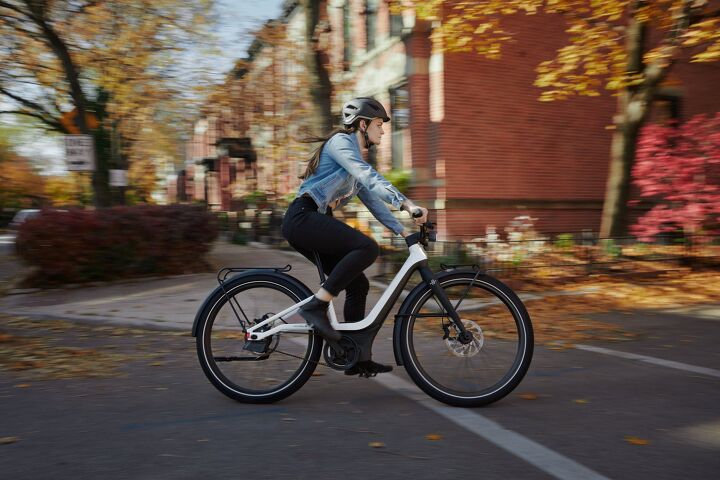
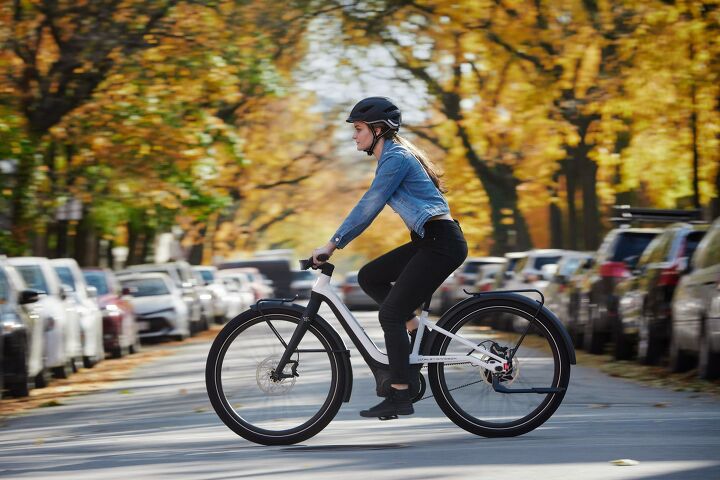
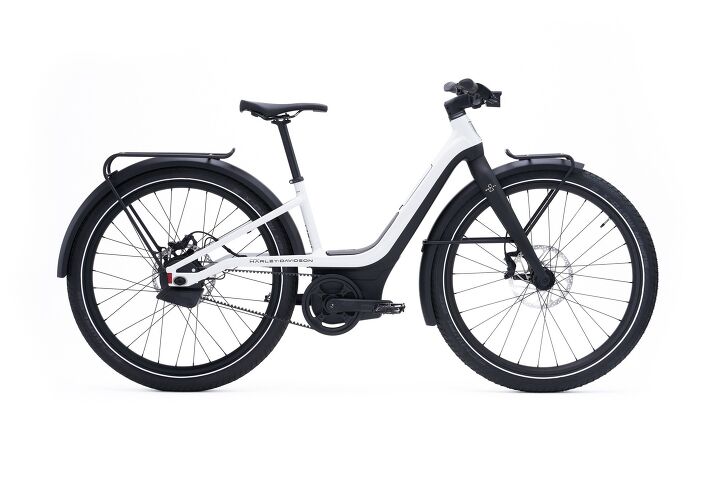
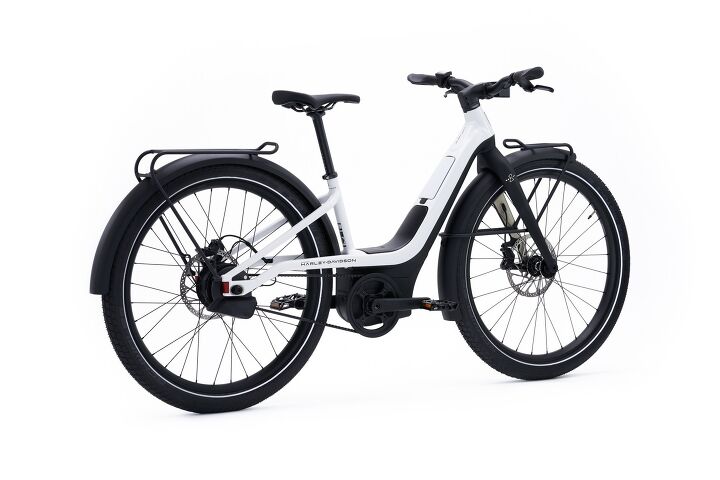
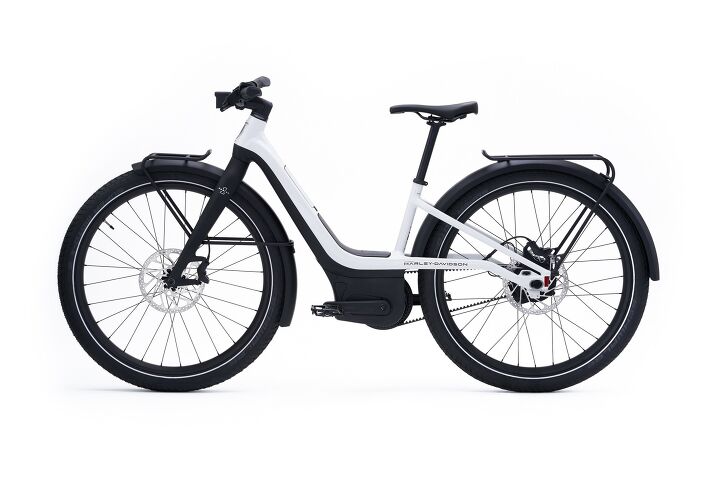
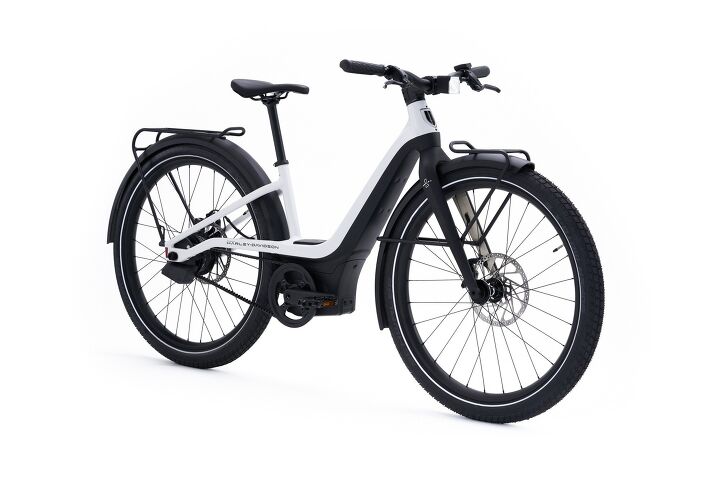
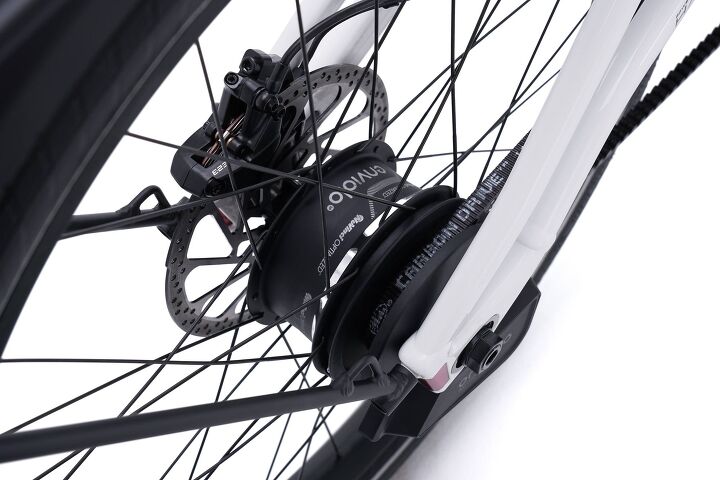
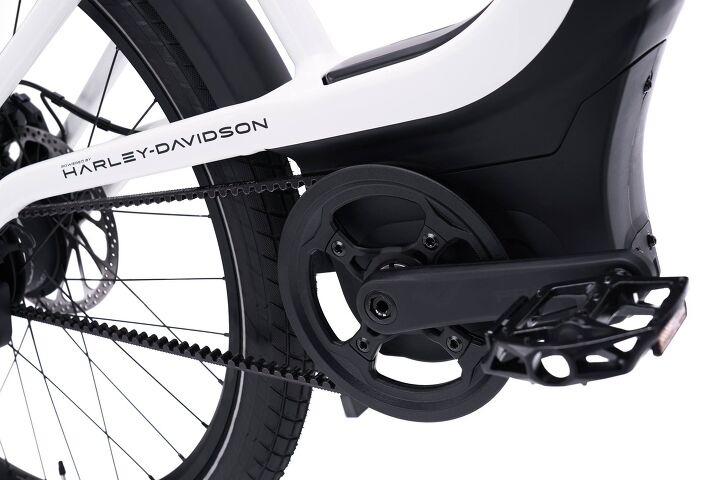
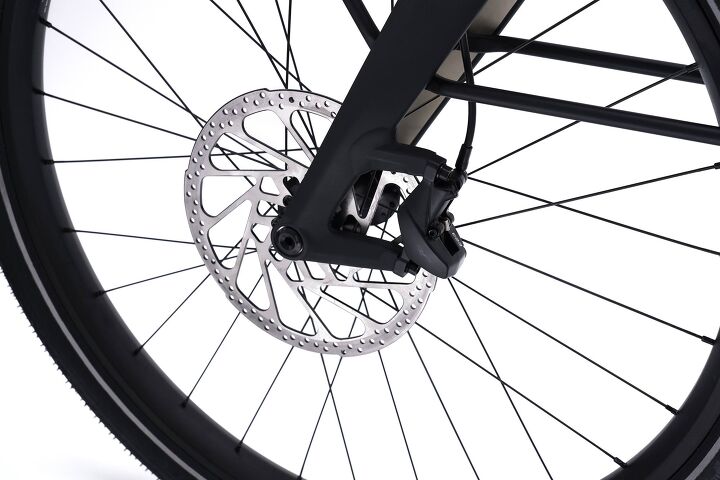
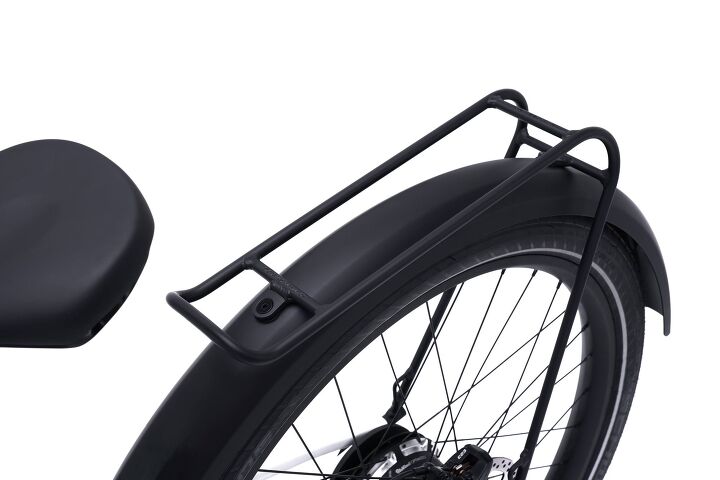
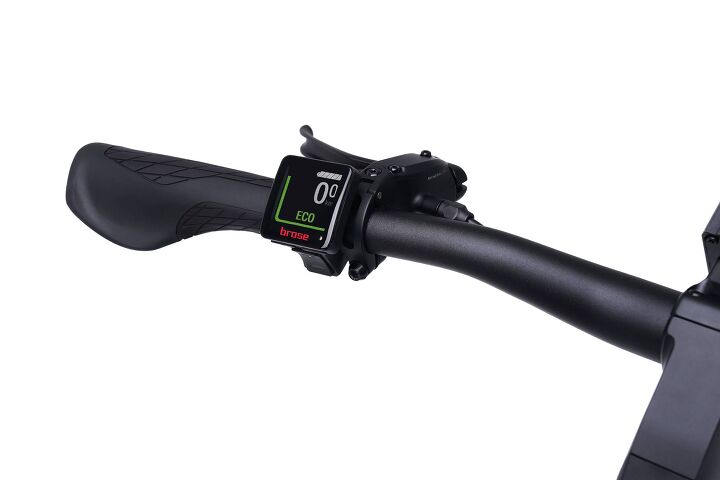
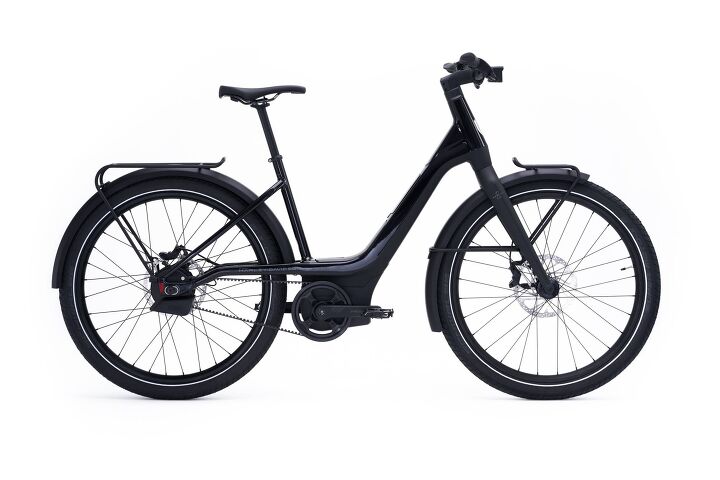
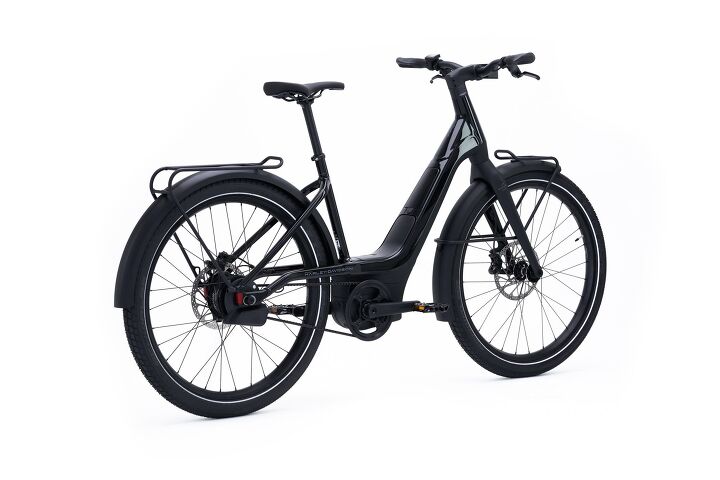
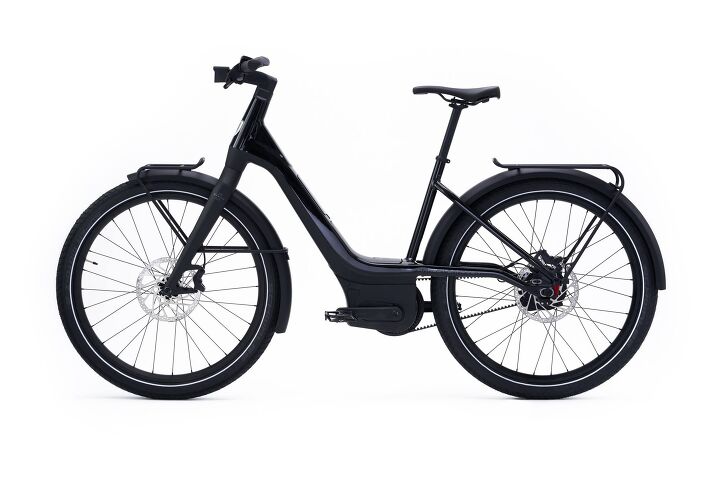
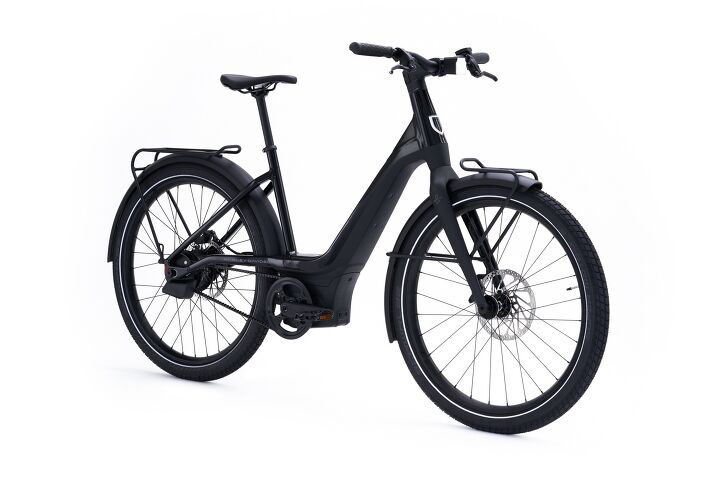
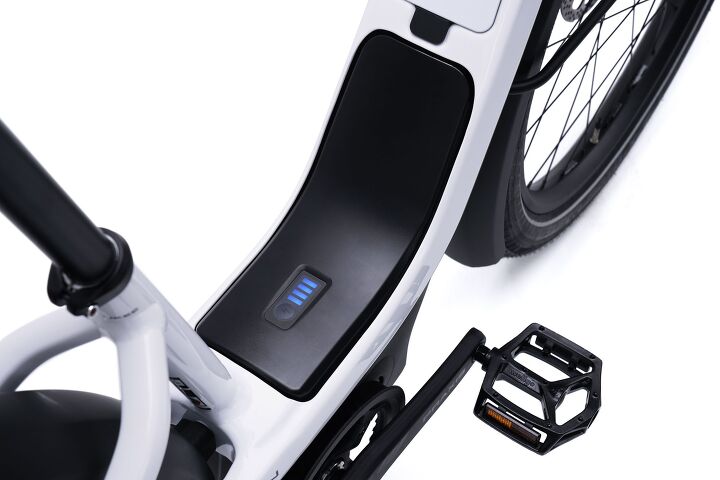
Serial 1 RUSH/CTY SPEED – $4,999
The RUSH/CTY SPEED is similar to the RUSH/CTY but with a maximum assistance speed 28 mph. The claimed weight of 59.0 pounds for the large frame is the same as the regular RUSH/CTY, and the claimed range of 35 to 115 miles is likewise similar.
The color options for the RUSH/CTY SPEED are Matte Vapor Silver/Gloss Burst Orange/Matte Black and Gloss Midnight Black/Matte Black.

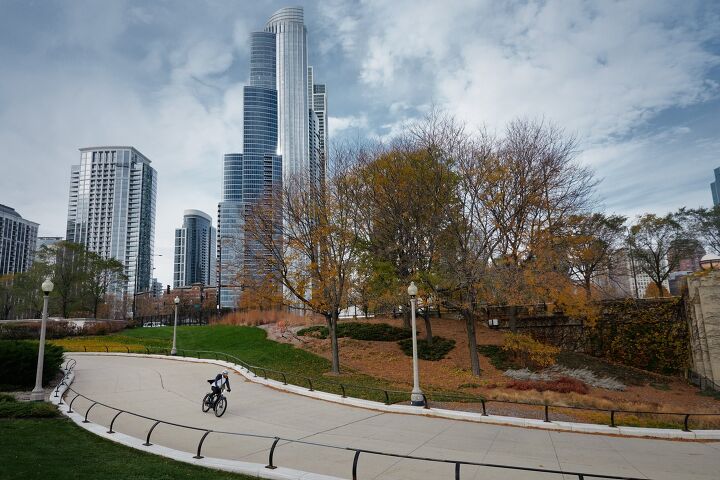
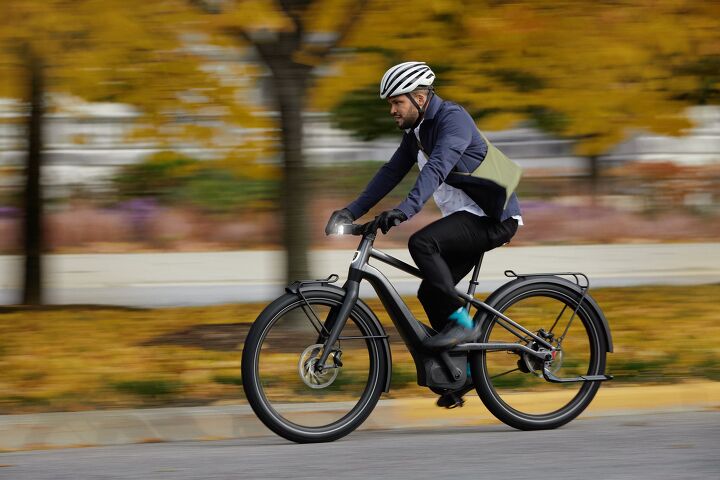
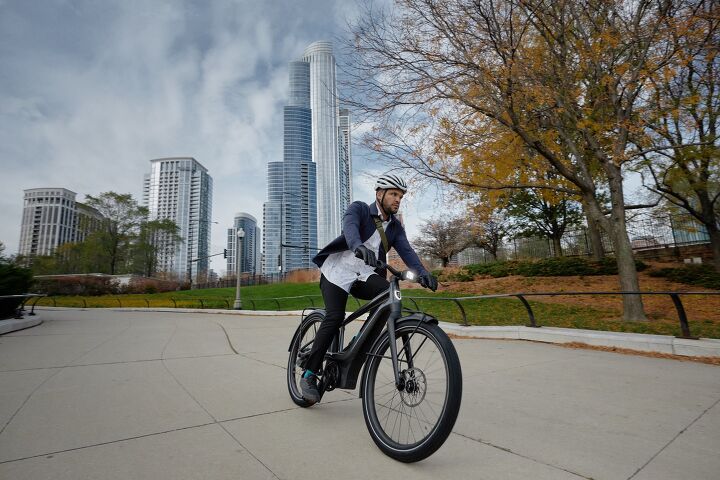
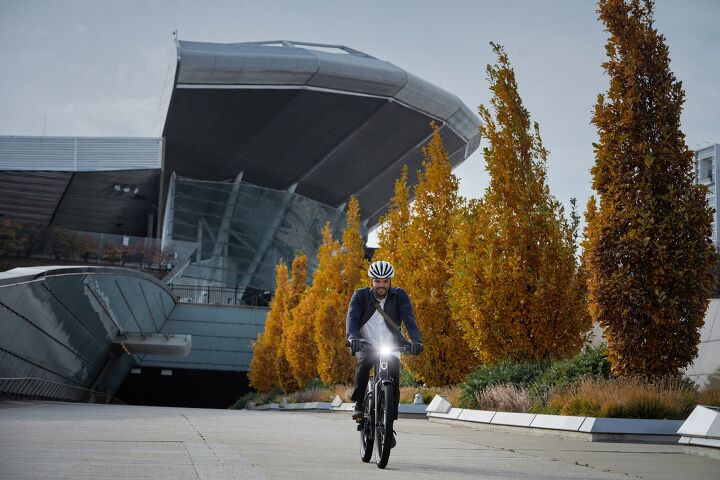
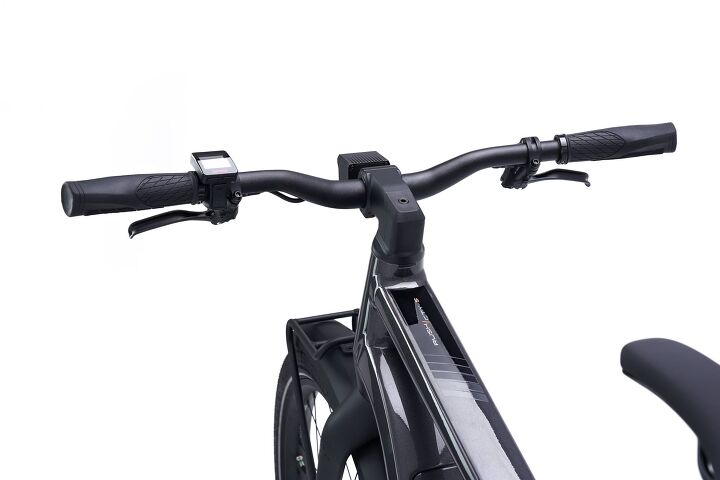
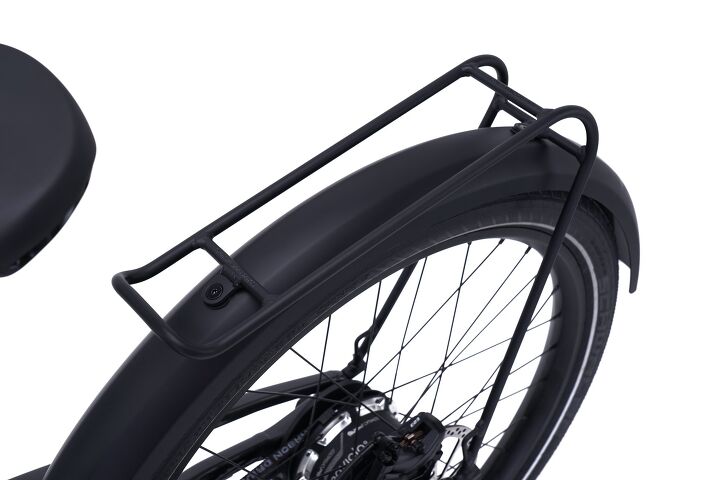
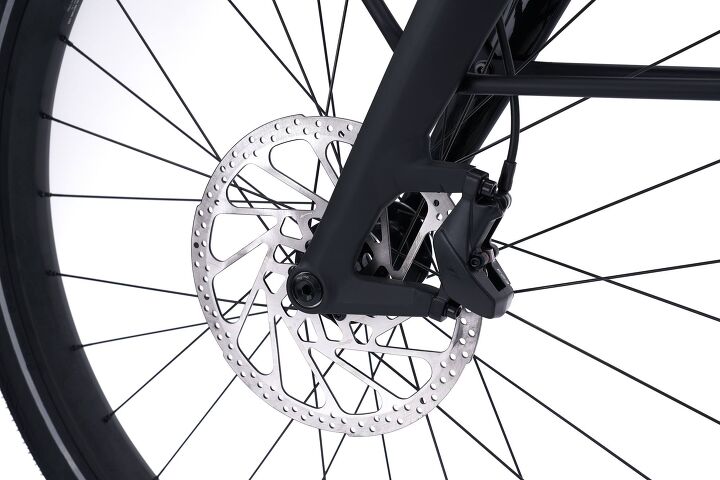
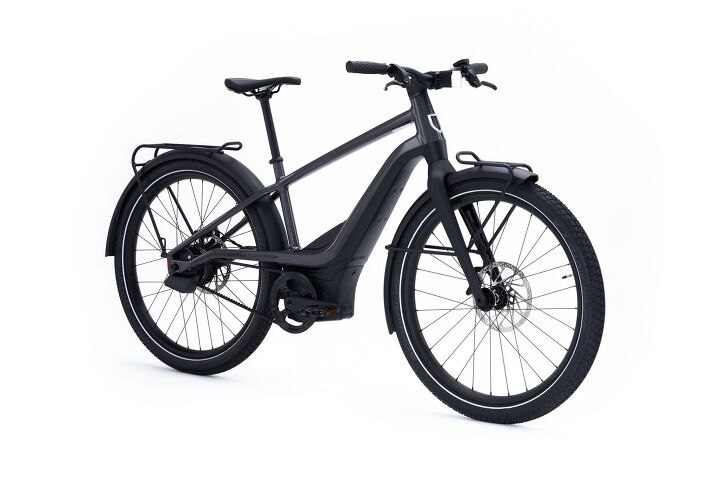
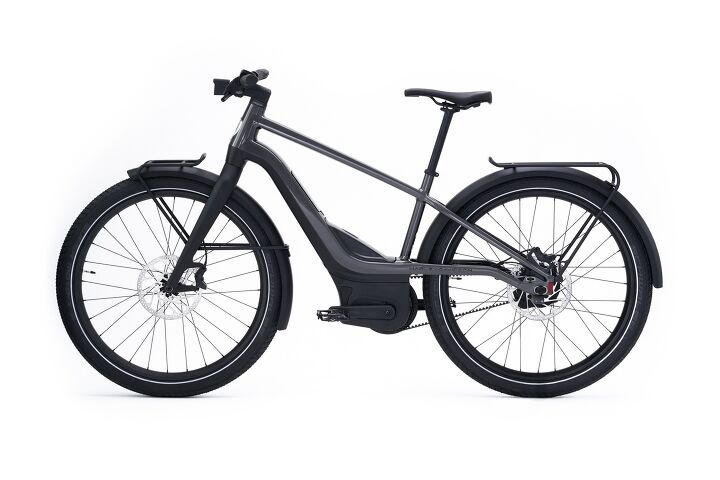
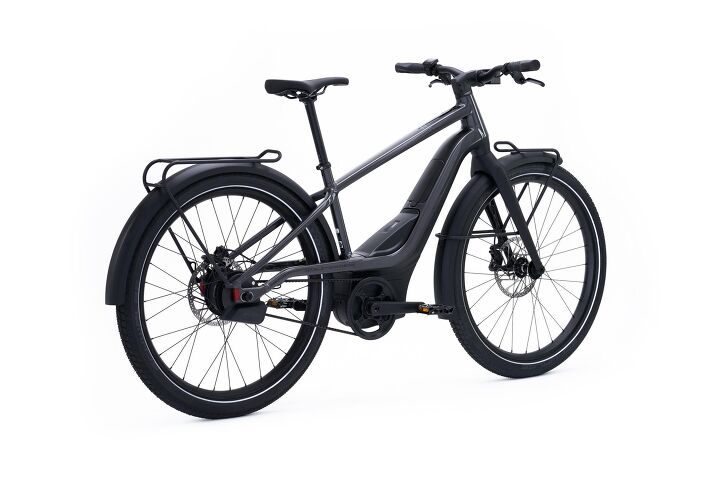
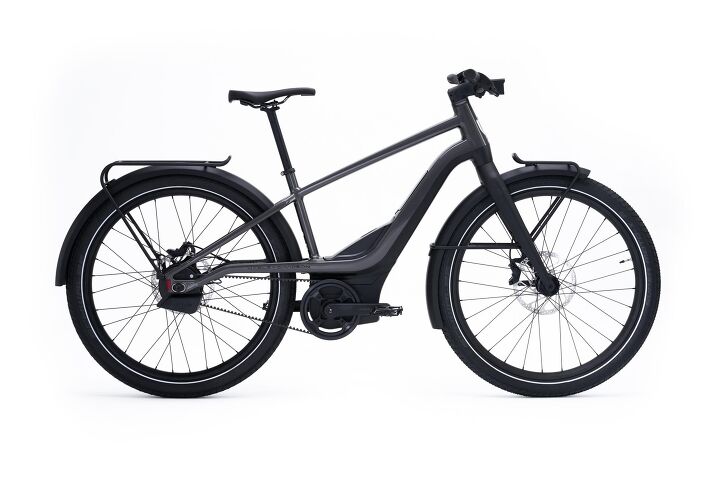
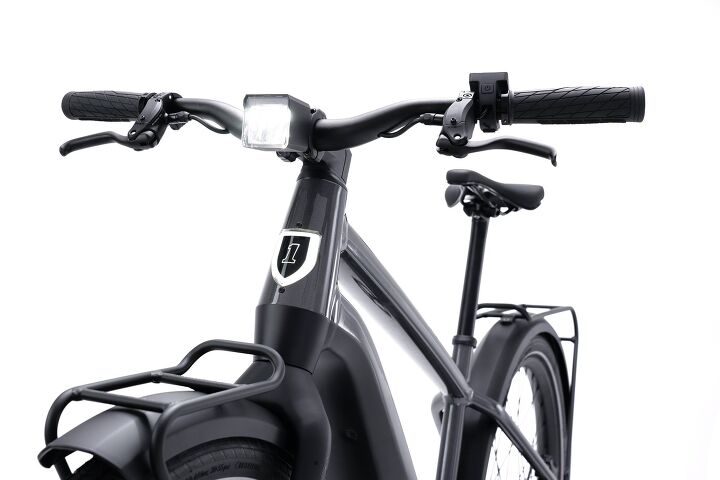
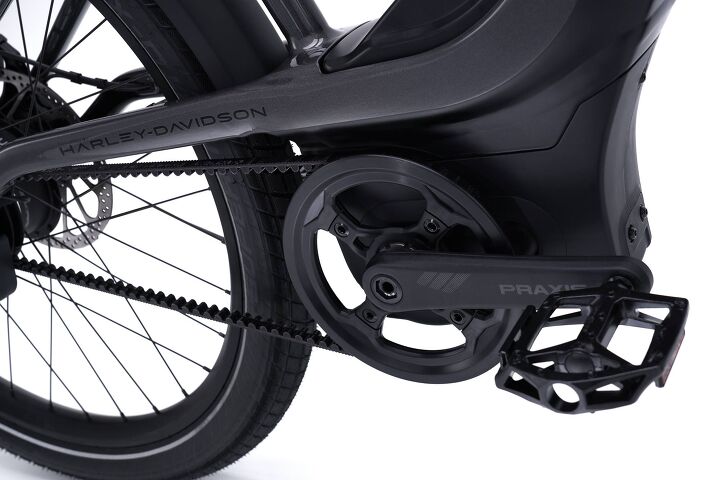
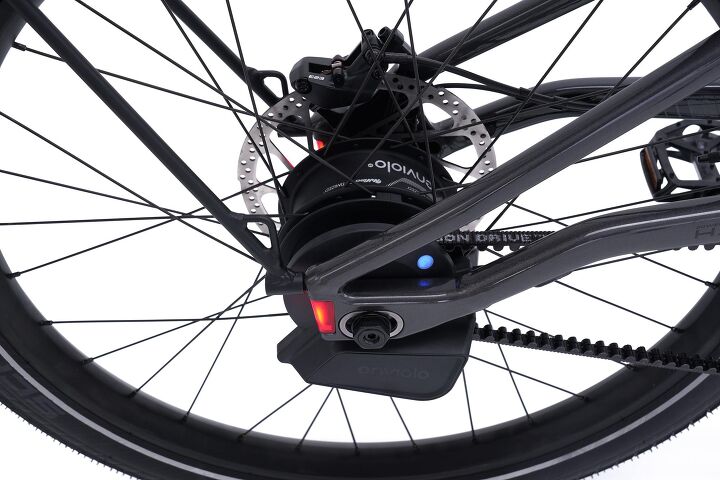
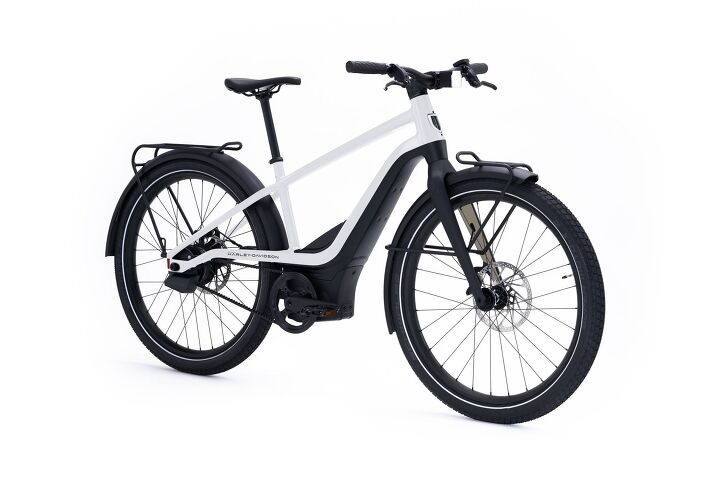
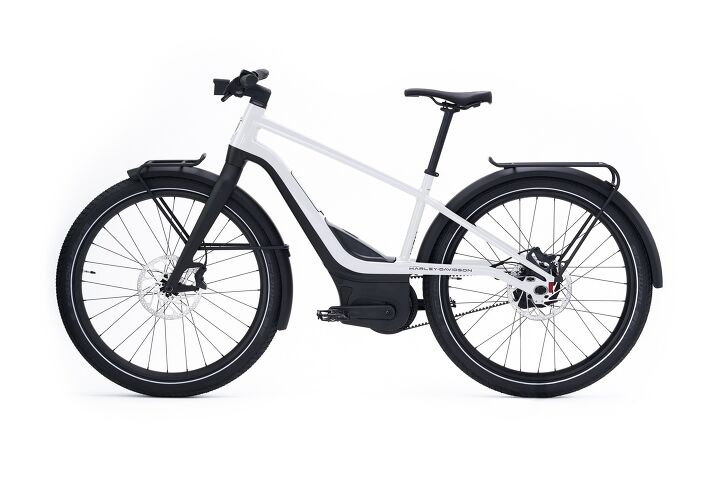
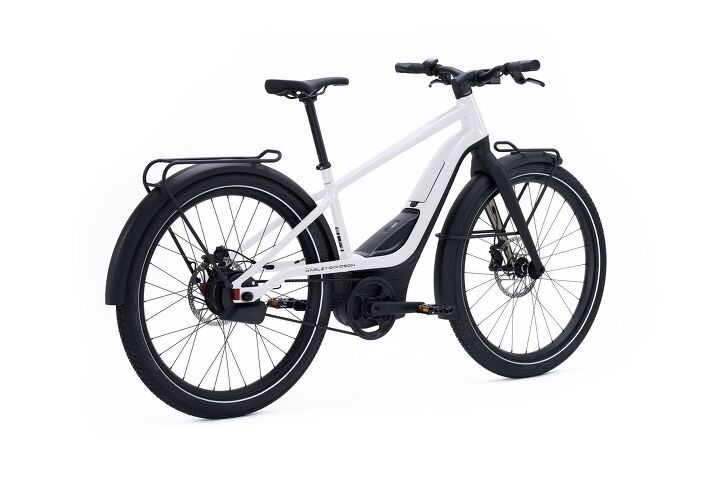
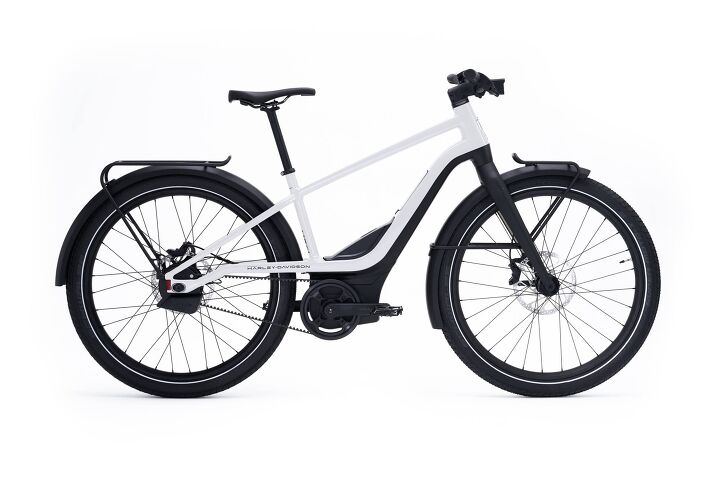
Become a Motorcycle.com insider. Get the latest motorcycle news first by subscribing to our newsletter here.
The post Harley-Davidson Reveals Serial 1 Electric Bicycle Models appeared first on Motorcycle.com.
http://feeds.feedburner.com/~r/Motorcyclefeed/~4/UfMkFEIcFD4 -
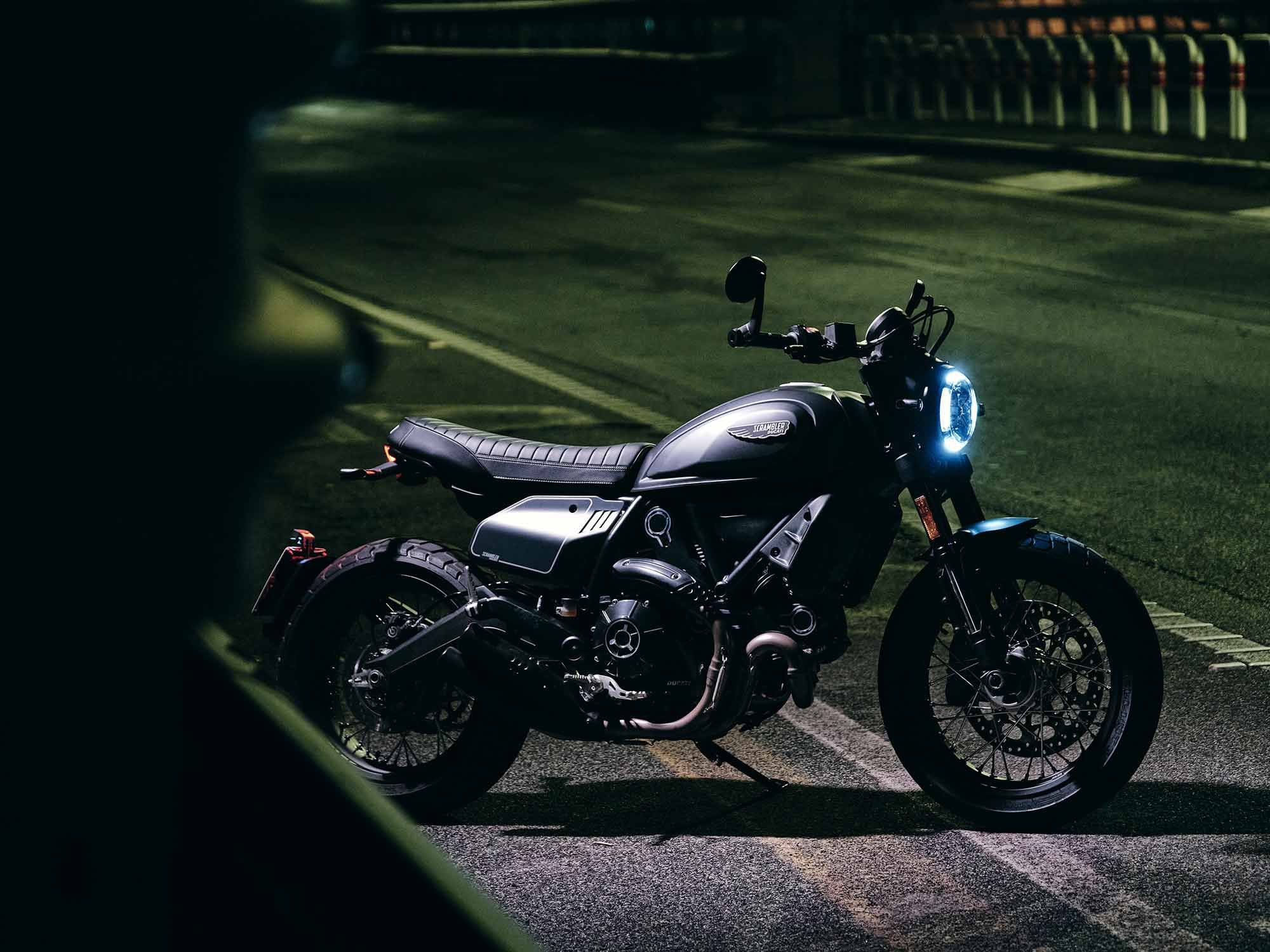
The 2021 Ducati Scrambler Nightshift. (Ducati /) Ducati’s ever-morphing Scrambler lineup gets a new addition for 2021: the Nightshift, a stealthy tracker put together by the parts-bin hunters at Borgo Panigale that’s intended to replace both the Scrambler Café Racer and Full Throttle models.
As with most of the 803cc Scramblers—Desert Sled excepted—the Nightshift is mostly a styling remix. As such, it features number plates from the Full Throttle, a flat bar from the 1100 Sport Pro, bar-end mirrors from the Café Racer, and 18-inch front/17-inch rear wheels. Unique to the Nightshift are the spoked wheels and a new flat bench seat. MSRP is $10,995.
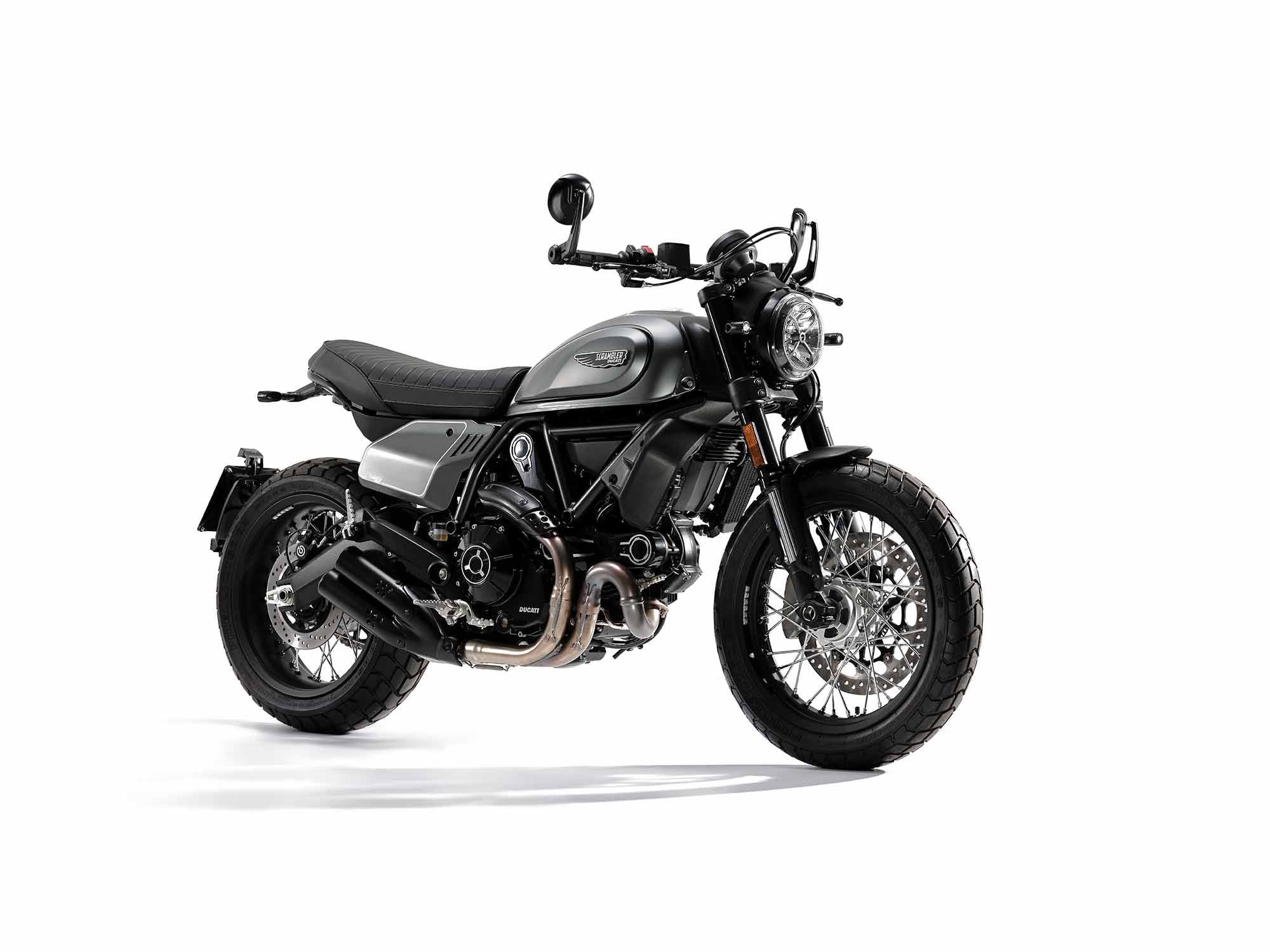
The Nightshift is available in an aviator gray color scheme. (Ducati /) For 2021, the Scrambler 800 range will comprise the Nightshift, the Icon ($9,695, available in red and yellow), the Icon Dark ($8,895), and the Desert Sled ($11,995), which has a new Sparking Blue livery. No, that’s not a typo—it really is “sparking,” not “sparkling.” While the Icon and Desert Sled have become mainstays in the lineup, Ducati has continuously introduced new variants that riff on scrambler/tracker/café racer themes. It’s interesting to see the Nightshift morphing the tracker and café racer styles, begging the question: what else can Ducati do with the 803cc Scrambler lineup before it gets a major overhaul?
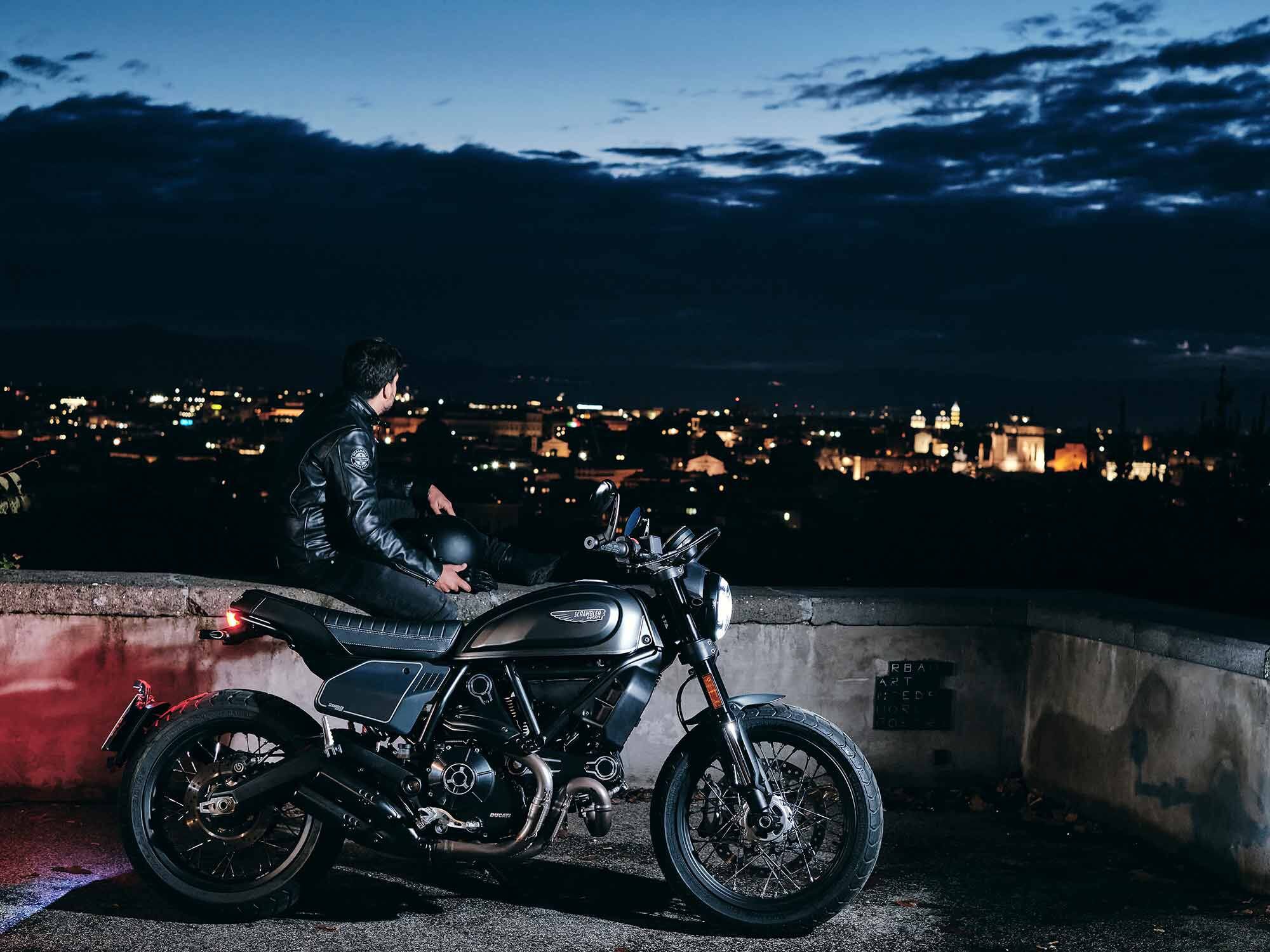
Is it a tracker, a café racer, or a scrambler? Whatever it is, it does put a grown-up spin on the Land of Joy schtick. (Ducati /) Much of the Scrambler’s appeal is its simplicity, which, one would imagine, could complicate further product development. Moving forward, does Ducati give it higher-spec components or a more feature-rich technology suite? Is that antithetical? How much longer can the air-cooled engine survive in an age of more stringent emissions standards? For now, we’ll simply enjoy the Scrambler as it is and hope that tomorrow will take care of itself.
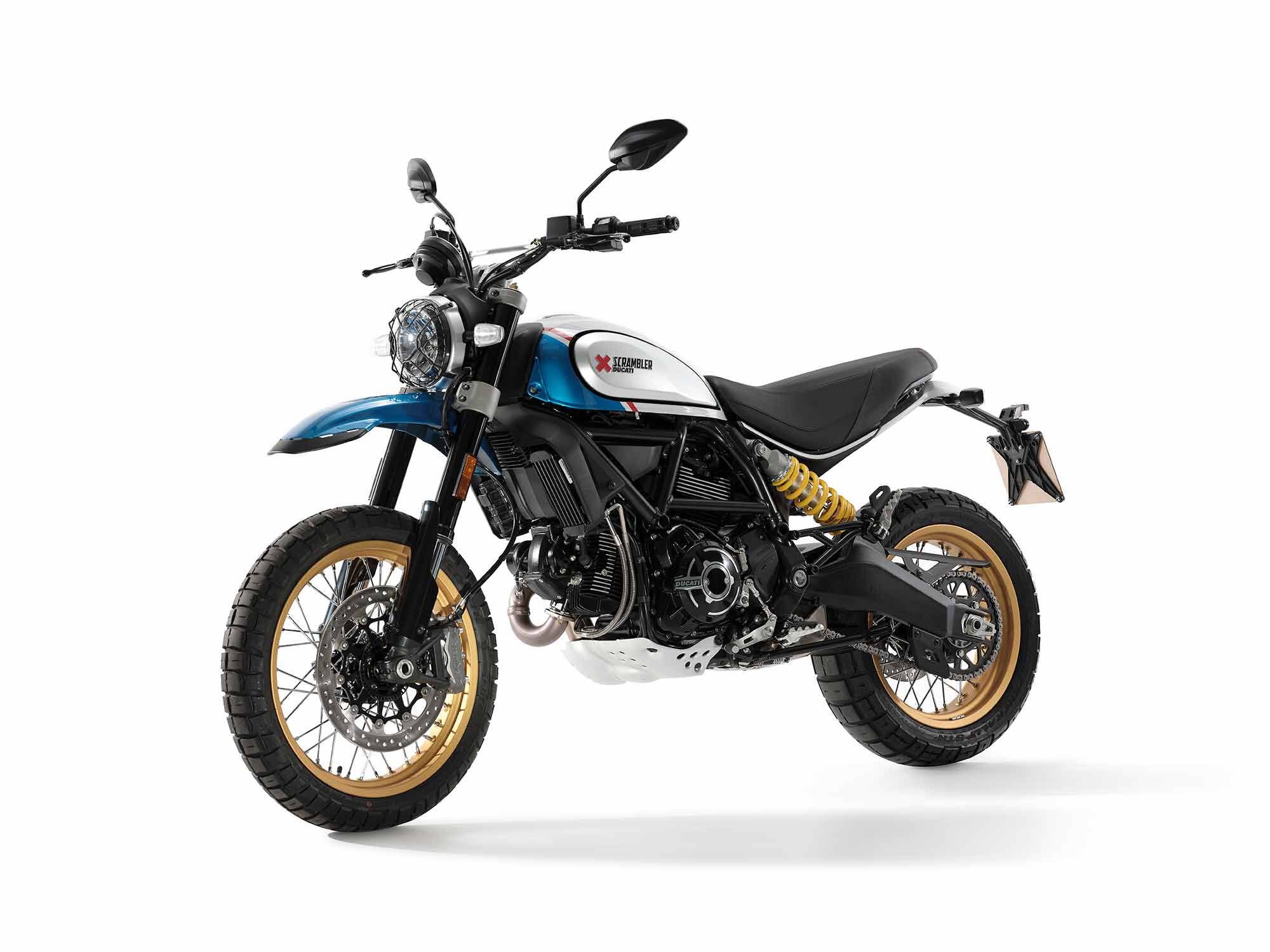
The 2021 Scrambler Desert Sled in Sparking Blue. Looks cool, right? (Ducati /) 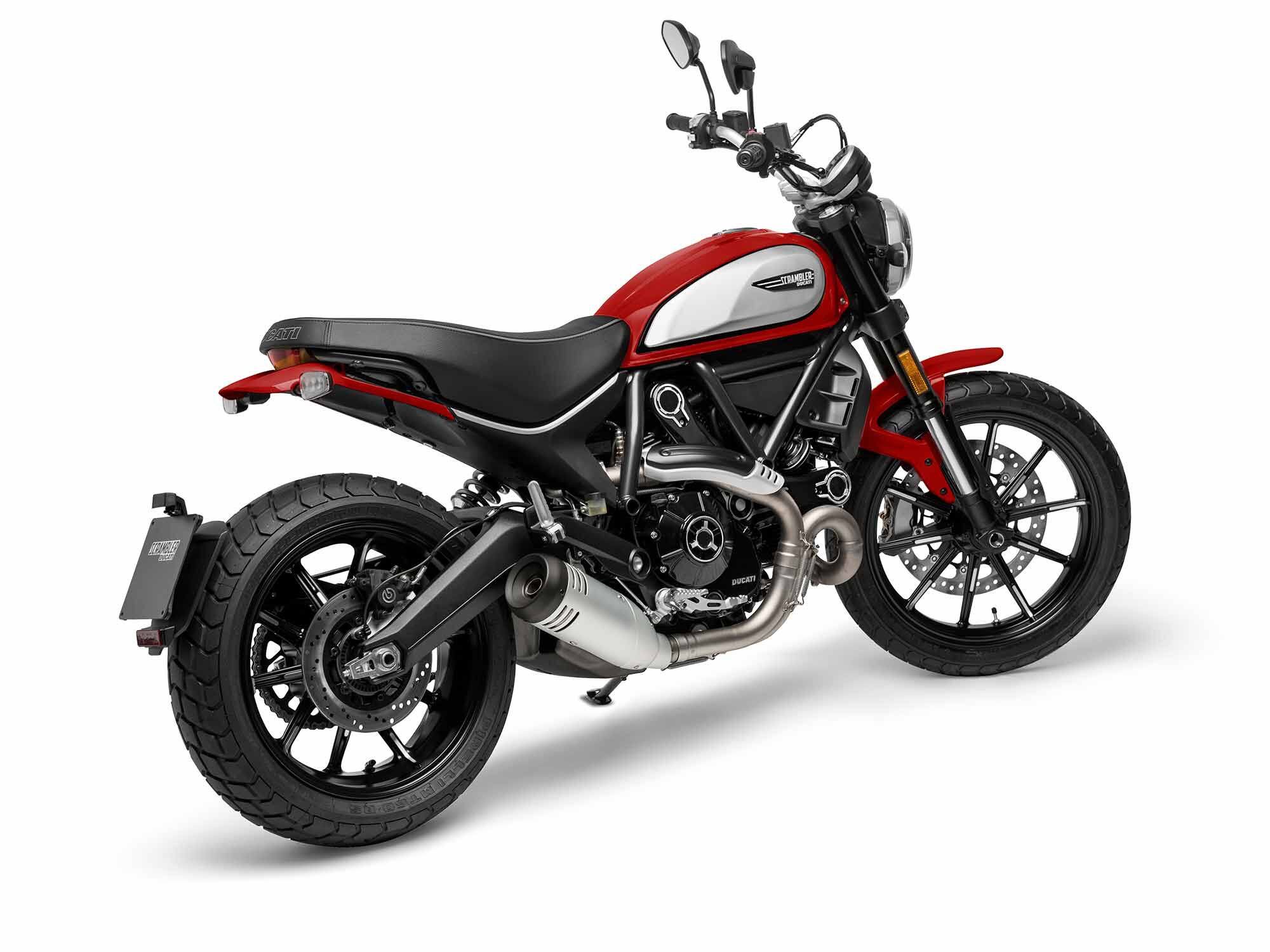
The classic Scrambler Icon. The first modern Scrambler was introduced in 2015. (Ducati /) Elsewhere in the Scrambler world, the 1100 lineup returns with the 1100 Pro ($13,495) and 1100 Sport Pro ($15,495).
-
We’re constantly on the look for great deals on motorcycle gear. We’ll be updating this post each week with the latest sales on gear and accessories, so keep checking here for new deals.
HEY! Did you know you could help support us MOrons by buying stuff at Revzilla? It’s true. Whenever you click on over there after seeing a thing here, we get a piece of the pie. It’s a win/win situation – especially when the thing is on sale. You get a deal on what you needed anyway. We get to keep eating. Here are a few of this week’s retail therapy opportunities.
Table of Contents
Alpinestars Vence Drystar Jacket – $298

Direct ventilation with Drystar construction, the Alpinestars Vence does just that—and it does it very well. Waterproof yet breathable, the Vence Drystar is a technical touring garment that performs very well in inclement weather—including the cold—thanks to the removable thermal liner. Should things warm up, the direct ventilation allows for airflow directly to the body for maximum cooling, making the Alpinestars Vence Drystar Jacket a true all-weather touring garment.
Dainese X-Tourer D-Dry Women's Jacket – $416

The Dainese X-Tourer D-Dry Women’s Jacket uses mesh chest panels, a removable D-Dry waterproof liner and removable thermal destination liner to create a versatile jacket that can be configured for use nearly any time of the year. CE rated elbow and shoulder armor come standard from the factory with a pocket for optional back protector (sold separately). Cordura fabric makes up most of the shell with strategically placed D-Stone fabric at the elbows and shoulders to help with regular wear and tear as well as increasing abrasion resistance.
Merlin Lynx 2-in-1 Jacket – $319

The Merlin Jacket is round-the-world and year-round-weather ready, willing and able. Constructed with both a removable Outlast thermal liner and a removable waterproof Reissa liner, the Lynx let you decide what level of warmth and comfort you need. Add on the optional Merlin Integrated Airbag (sold separately) and be prepared if the inescapable occurs.
REV'IT! Offtrack Jacket – $400

The Revit Offtrack Jacket favors hot weather ADV touring thanks to its lightweight outershell with 3D air mesh, VCS|zipper and VCS|panels. The shell was designed to flow air while still providing rugged abrasion resistance thanks to strategically placed mesh and heavy duty textile. The Offtrack Jacket comes with a thermal liner and waterproof liner that are both removable so you can configure the internals of the jacket as mother nature requires. Chilly wet weather requires all the layers and closed vents. As the skies clear, remove and stow the waterproof layer. As you come off the mountain into the valley, detach the thermal liner and open up the vents to get cooling air flow. Rev’it includes CE level 2 protection at the elbows and shoulders along with pockets to add optional chest and back armor.
For non-motorcycle deals, take a look at All America Deals!
We are committed to finding, researching, and recommending the best products. We earn commissions from purchases you make using the retail links in our product reviews. Learn more about how this works.
Become a Motorcycle.com insider. Get the latest motorcycle news first by subscribing to our newsletter here.
The post This Week’s Motorcycle Gear Deals appeared first on Motorcycle.com.
http://feeds.feedburner.com/~r/Motorcyclefeed/~4/bQ0PpkDd8J8 -
Lest we forget, chilluns, the new Trident on the way from Triumph is not the first time they’ve resurrected that famed monicker from the swingin’ Sixties. Here’s hoping Poseidon’s new weapon will be pointier than the last one 25 years ago, which left Brent – the rock upon which MO was built – pining for a Sportster. OMG.
Trident 900
Apr. 20, 1995
With the unpopularity of “naked bikes” the last few years, it was easy to question Triumph’s sanity when they introduced the Trident 900 — after all, if it’s not a cutting-edge racer, full-dress tourer, under-5,000 dollar sporty beginner bike, or anything that looks like a Harley Davidson, it seems it’s just not worth a manufacturer’s time to produce. At first glance, the Trident looks like it could be any mid-1980s Japanese sport bike, but in fact, it is significantly better, and this bike may be the basis of Triumph’s resurrection. For those that remember the Triumph of old, hang on to your memories, for this bike has nothing in common save the name.For those that grew up with the Suzuki GS or Kawasaki KZ bikes, the Trident may strike a more familiar chord.

Make no mistake, though, this bike is much better than either of the latter. When Triumph designed the Trident, they looked at the classic design of that era and at the materials available today, and came up with a bike that is actually better than the sum of its parts.
Classic design dictated an upright seating position, exposed motor, and a large round headlight out in the open, not wrapped in plastic bodywork. Modern technology allowed wide wheels and radial tires, excellent brake and suspension components, and a reliable water-cooled motor. Together, they make for a surprisingly competent do-it-all motorcycle.
“The heart of the new Triumph is the same basic mill as the rest of the 900s in Triumph’s lineup save for the Thunderbird which gets different cases and pistons.”Dual overhead cams activate four shim-over-bucket valves per cylinder driven by a right-side cam chain. A straight-cut primary gear delivers the power to the multi-plate hydraulically actuated wet clutch through to a six-speed transmission chain final drive.
Intake is through a bank of three Mikuni 36mm semi-flat slide constant-velocity carburetors, and the charge is sucked into a 10.6:1 compression 885cc motor and lit by a digitally controlled electronic ignition. Exhaust gasses are routed through a three-into-two exhaust pipe where the middle pipe splits near the cylinder head and diverts its contents to the outer two pipes just under the oil pan. Maximum horsepower is a claimed 98 stallions at 9,000 rpm.
The engine is a stressed member of the high-tensile steel frame, eliminating down-tubes and giving the motor a clean, uncluttered look. Cooling is handled by a large radiator tucked in tight beneath the steering head. Out from behind the front wheel, the radiator receives copious amounts of air, keeping engine temperatures cool under even the most demanding conditions. Multiple back-to-back runs at the drag strip — where we got a best time of 11.84 at 113.84 mph — couldn’t get the temp gauge to register more than half the gauge’s range.
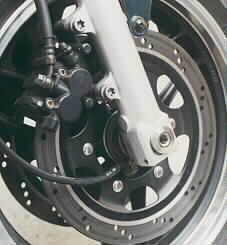
Don’t expect to see the temperature warning light very often. The Trident and the Thunderbird are Triumph’s only models to come without an adjustable front suspension. The Trident’s 43mm legs are quite rigid, and while the spring rate and damping are perfect for highway cruising, they are too soft and quick, respectively, for sporting use. Also, riders significantly heavier than the staff average of 160lbs may want heavier springs and oil. The rear shock is adjustable for spring preload and rebound damping. Adjusting the shock on the Trident is easier than on any other stock bike we’ve tested: Lift the seat and the hydraulic preload reservoir adjusting nut is immediately accessible. Turn the 10mm nut and the ball bearing inside rises or lowers indicating the amount of spring preload. Changing the damping is even easier. Just reach down with your left hand and turn the four-position dial. The third position is adequate for even hard solo sport-thrashing, the fourth and stiffest setting should only be needed when riding two-up.
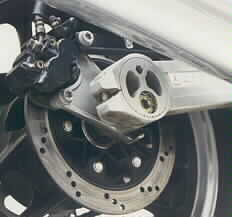
The rear swingarm is a box section aluminum unit that incorporates an eccentric chain adjuster. Thus, adjusting the chain is almost as easy as the shock — simply loosen the pinch bolts on either end of the swingarm and pull back the wheel by hand till the chain has the proper tension, and retorque the pinch bolts.
The combination of stout fork legs, a rigid frame and swingarm, and a good rear shock add up to a very stable, controlled ride that works well for freeway cruising. Crank up the shock and backroad scratching is surprisingly easy. The wide bars offer plenty of leverage for hustling the claimed 466 pound (212kg) dry weight machine through the twisties, and the Pirelli radials offer good traction and feedback. Wheels are 3.5 x 17″ front, and 4.5 x 18″ rear fitted with 120/70 ZR17 and 160/60 ZR18 tires.
“Braking performance is up to par with a pair of 296mm rotors up front backed with a 255mm rear.” Calipers are two piston units all around. Nice looking and comfortable brake and clutch levers offer four position adjustments, though even small hands wanted the levers to be at maximum distance from the bars. The bars themselves are mounted on top of the upper clamp around the fork legs leaving the fork caps exposed for easy maintenance. The clip-on style bars angle back nicely but would feel better with more drop. Mirrors are effective and positioned well, without much vibration-related distortion; helped, no doubt, by the smoothness of the 120 degree three cylinder motor.Complaints about the bike were limited to the lack of front running lights, the wimpy front suspension and the inconvenience of having to remove the seat to access the helmet lock.
Coming in at $2000 under the next highest priced model, the Thunderbird, the $7995 Trident is positioned to be the foundation of Triumph’s new world market. Only time will tell if it is a successful gamble, but we’ve got our money in Triumph’s corner.
Impressions:
1. Mike Franklin, Managing Editor
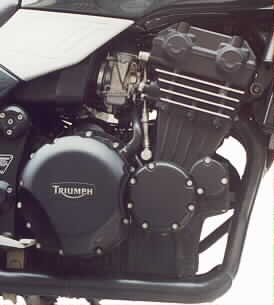
I thought this bike was going to be a three cylinder version of a 1985 Ninja 900, but I wasn’t even close. This bike has impressive running gear — 43mm forks and a big aluminum swingarm — and a solid chassis to boot. The motor is a sweet sounding triple with enough power to ride two up and not feel overworked. Passenger accommodations are roomy and with the addition of a set of Triumph bags, the Trident could easily be a weekend tourer. It also makes a great canyon scratcher. I guess what this is leading to is that I like this bike a lot, and would trade in my old GPz550 for one in a heart-beat. Plus it’s cool when people come up to you and tell you all about that old Triumph they had way back when, and how they thought Triumphs were gone forever. Based on the solid performance of this bike, I think Triumph will be around for years to come, and give the Trident four (out of a possible five) stars. ****
2. Brent Plummer, Editor
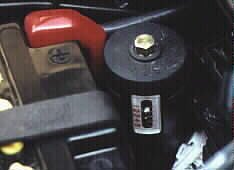
The Trident did nothing for me — all aspects of the front suspension are mushy and in need of work, while the engine and rear shock are, well, uninspiring. Sure, a set of Progressive Suspension fork springs, some heavy fork oil and a couple of afternoons to dial it in would fix the droopy front end (who has the time?) and I guess the humane riding position would make me grow to love the Trident, but who want’s to spend eight grand on something they have to rationalize to like? Not me. And I don’t think I’d ever get used to the peaky Trident engine, which lacked torque.
No, if I were buying a standard, I’d either spent five grand on a red Honda CB750 (hydralic lifters means no maintenance!) buy a matching Aerostich suit and some saddle bags, then pocket the rest of the cash — or I’d scrounge up another couple of grand and get a BMW R1100R. Actually, now that I’ve searched our database for bikes under 8,000 dollars, I see that Harley’s 1200 Sportster — with that torque monster Evolution engine — has a suggested retail of 7,300. So if I had the cash and could find a dealer that doesn’t price gouge, I’d get me a HOG. ***

Specifications:
Manufacturer: Triumph
Model: Trident 900
Price: $7,995
Engine: dohc, 12-valve, inline-Triple
Bore x stroke: 76.0 x 65.0mm
Displacement: 885 cc
Carburetion: (3) 36mm Mikuni
Transmission: 6-speed
Wheelbase: 59.4 in.
Seat height: 30.5 in.
Fuel capacity: 6.6 gal.
Claimed dry weight: 466 lbs.Time to Distance:
60ft: 1.923 seconds
120ft: 5.003 seconds
1/8th mile: 7.589 @ 96.037 mph
1/4 mile: 11.843 @ 113.848 mphThe post Church of MO: 1995 Triumph Trident 900 appeared first on Motorcycle.com.
http://feeds.feedburner.com/~r/Motorcyclefeed/~4/tgLEMXKLG5E -
-
-
-
-
The Indian motorcycle manufacturer trademarked the name, sending the rumor mill flying.
-
Well, this is too easy. The best time to buy a motorcycle is after your ship comes in, ie., when you become wealthy. As one of our favorite bucks-up bike fanatic/collectors said when asked what’s the best time to buy: “I never gave it any thought.”
When you don’t have to think about it is always a good time to buy a new motorcycle. And even if you do have to think about it, bikes are still cheap compared to most of the finer things in life, so anytime is still a good time.
For those of us not born to the manor, for whom money is a consideration, the question becomes slightly more complicated.
If you’re fortunate enough to live where there’s not a serious winter, fall is a great time to buy. You can still ride most days, but even in sunny California, the days get short, the nights grow cold, and bike sales slow.
Buying in the fall doesn’t necessarily mean you’ll get a fantastic deal on the bike of your dreams, though. Depending on the seller’s sophistication and bottom line, he knows as well as you his bike will be worth more in the springtime, when the sap, estrogen, temperature, and testosterone are all rising.
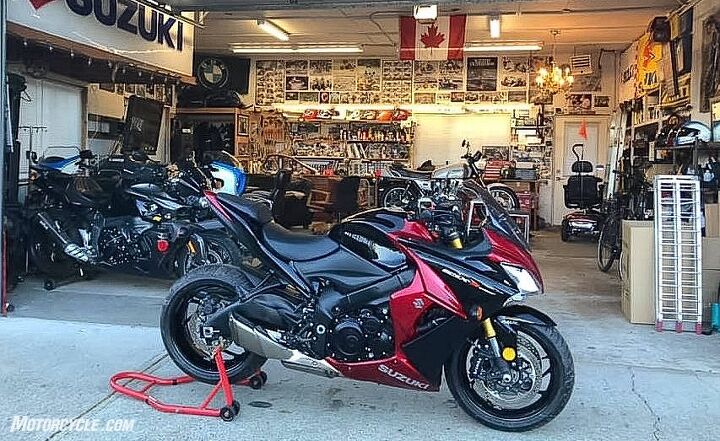
“Yesterday,” says our friend Trevor from Victoria, BC, who just picked up a new Suzuki GSX-S1000F in spite of rain being in the forecast for the foreseeable future on Canada’s southwest coast.
One friend in New Jersey, where they definitely have seasons, advises buy in the spring, sell in the fall. That’s when most people naturally procure their motorcycles. But others will point out that spring is also when you’ll have less selection due to more competition, and will pay the most. Big deal. As another friend accurately points out, delayed gratification sucks. Who wants to be staring at a new motorcycle all winter waiting for the snow to melt?
“When your wife will let you,” says Reg. If relationship stress is a problem, you’ll definitely need to consider your partner’s wishes. My advice for all couples is separate bank accounts. I might still be married if I hadn’t badly needed that Husqvarna TE250 back in, ahhhh, 2006, and I never even had the decency to thank it.
In short, there may not be a best time to buy a motorcycle. It really depends more on the motorcycle you want than the calendar. If you must have the latest model the motopress just raved about, you might need to put down a deposit ASAP to secure one when it arrives at your dealer months later, and you will pay for the privilege of being first. In the case of a few recent bikes we can recall, you also had to pre-order in addition to putting down a large deposit. At least it hasn’t reached the point of some new cars, like when potential buyers had to make a grovelling video to get Ford to sell them a GT40. I’ll just keep my `95 Ranger thanks!
Speaking of special vehicles, if you have your heart set on a certain pre-owned motorcycle, the time to buy is when the perfect one appears and you have the money. As the years roll by, fewer and fewer perfect examples come to market, and prices on those special machines tend to go in one direction: Up. We know a collector who’s given up on adding an RC30 to his collection for now for that reason.
If you’re more open-minded and just want a great deal on a new bike, the dead of winter probably is the time to strike. Most dealers close out their fiscal year on December 31, and any unsold last year’s motorcycles sitting on the floor then – right after the Christmas buying binge – are likely to be nicely discounted. Also, when there’s a new model on the way, like the new 2021 Ducati Multistrada V4 we keep writing about, Brian Catterson up at MotoCorsa in Portland, Oregon, says he will make you a great deal on a 2019 Multistrada.
The internet has turned the when-to-buy decision as upside down as it’s turned everything else. Even if you live in a warm climate, you can still take advantage of the winter doldrums in other parts of the country. If you find the bike you want in the frozen north, lots of dealers seem to be interested in making you a deal that includes free shipping – and even if you pay for the shipping, it shouldn’t be much more than about $500 anywhere within the US.
Apparently, during a pandemic seems to also be a good time to buy. Word from the Motorcycle Industry Council this morning is that this quarter’s year-to-date sales of new motorcycles and scooters through September increased 10.2 percent compared to the same period last year.
And if you’re planning to finance that new motorcycle using Other Peoples’ Money, during a pandemic and in the middle of a period of record-low interest rates is also an ideal time to buy. Does anybody need to be told to check the internet for special deals? A quick spin around the www reveals Suzuki offering 1.9% financing (you’ll need great credit of course), and don’t be turned off by the $13,495 price tag hanging on the Katana at Suzuki’s corporate website. Those lovelies are all over the www for $9000. Let Mr. Suzuki’s pain be your gain. Elsewhere, the holiday/end of year timeframe is when nearly all the OEMs are offering low-interest financing.
Pretty much right now is as good a time as any to buy, and go ahead and feel some gratitude if you’re in a position to buy a shiny new or new-to-you motorcycle when so many others are hurting. If you dread taking on a few years of payments, realize that the sooner you make the first one, the sooner you’ll also make the last one. Since none of us are getting any younger, you must also factor the Lost Opportunity for Fun into the equation. The sooner you start riding, the longer you’ll get to. Finally, realize that being a motorcycle person has already excluded you from the pool of rational human beings as far as the rest of the world is concerned anyway. No one’s expecting you to be reasonable. You may as well run with that. Good luck.
The post When is the Best Time to Buy a Motorcycle? appeared first on Motorcycle.com.
http://feeds.feedburner.com/~r/Motorcyclefeed/~4/Bb8iaRfxRms -
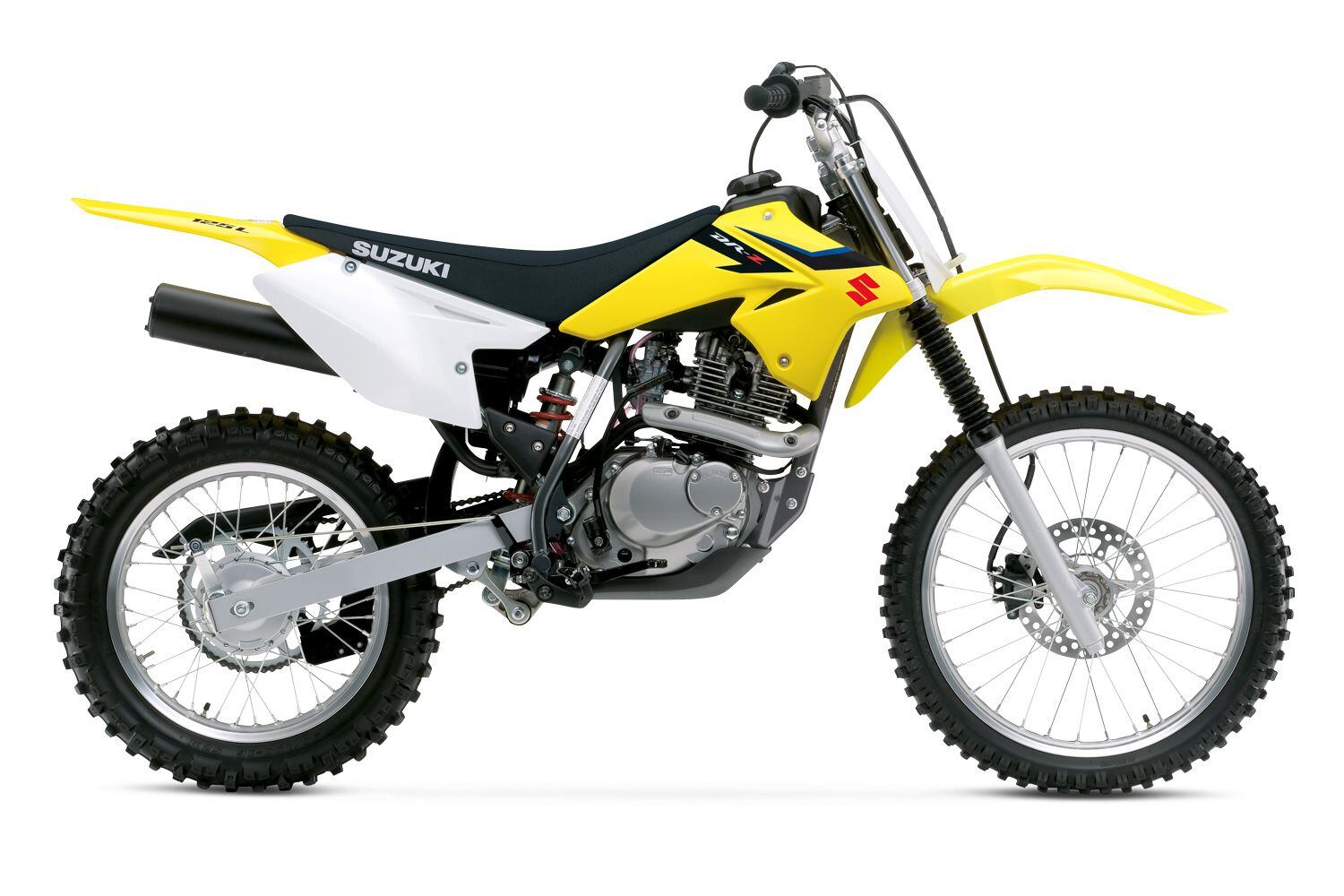
2020 Suzuki DR-Z125L (Suzuki /) Are the local trails on the horizon for your next family ride? The DR-Z125L would be one of three trailbike offerings you would look at from Suzuki if that is the case. Placing itself between the other playbikes like the DR-Z50 and RMX450Z, the DR-Z125L is a 124cc single-cylinder-powered trailbike that is kicked to life when ready to ride. It has 19-inch front, 16-inch rear wheels and longish travel for soaking any root, rock, or rut the rider may come across. It’s not limited to just younger riders either. Thanks to its 32-inch seat height and fully sized chassis, this can be ridden by young adults, teens, or shorter riders.
2020 Suzuki DR-Z125L Reviews, Comparisons, And Competition
Taking to the trails you will find similar 125cc competition in the Yamaha TT-R125LE, Honda CRF125F/CRF125F Big Wheel, or even Kawasaki’s KLX140/L/G models.
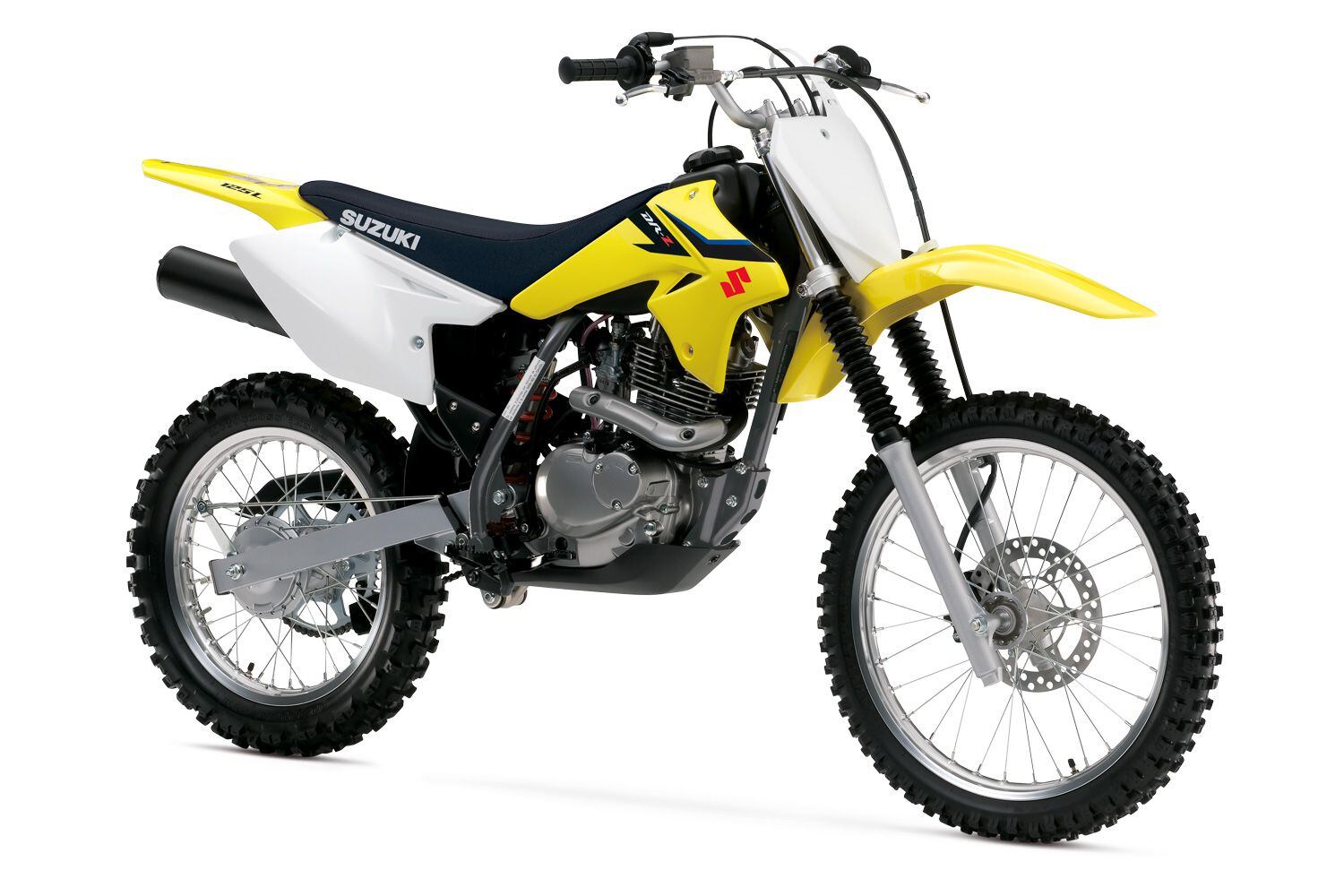
2020 Suzuki DR-Z125L (Suzuki /) Suzuki DR-Z125L Updates For 2020
The sole update made to the DR-Z125L for 2020 is updated graphics.
2020 Suzuki DR-Z125L Claimed Specifications
Price: $3,299 Engine: Air-cooled SOHC single-cylinder Displacement: 124cc Bore x Stroke: 57.0 x 48.8mm Horsepower: N/A Torque: N/A Transmission: 5-speed Final Drive: Chain Seat Height: 32.0 in. Rake: 27.5° Trail: 3.9 in. Front Suspension: 30mm telescopic fork; 7.1-in. travel Rear Suspension: Preload adjustable; 6.7-in. travel Front Tire: 70/100-19 Rear Tire: 90/100-16 Wheelbase: 50.0 in. Fuel Capacity: 1.3 gal. Wet Weight: 196 lb. -
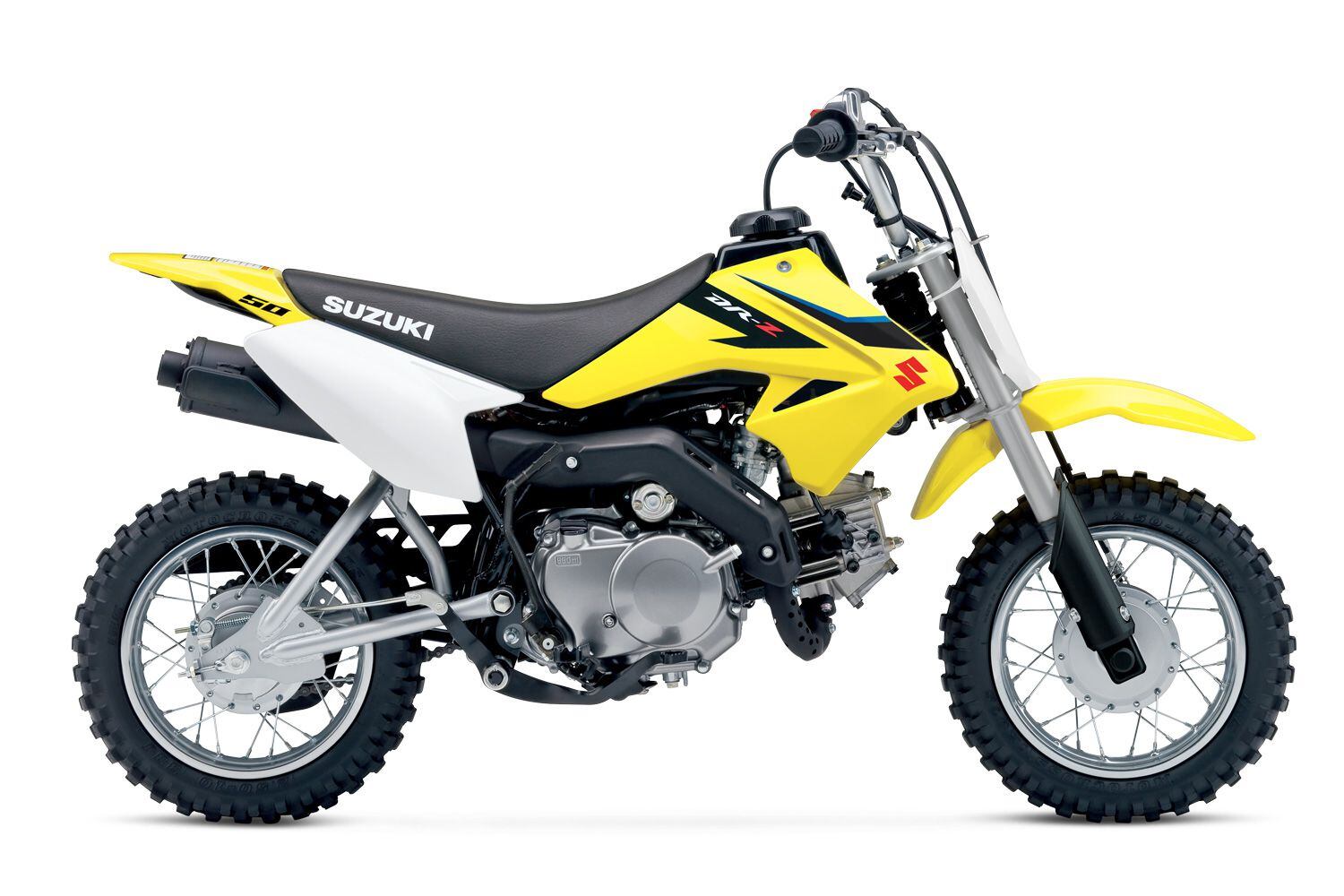
2020 Suzuki DR-Z50 (Suzuki /) The smallest (and arguably cutest) motorcycle in Suzuki’s lineup is its DR-Z50 trailbike. This little machine is designed for the youngest members of the family who have what it takes to start a two-wheeled life. This 50cc dirt bike not only has mellow power, but has a three-speed transmission with an automatic clutch to shorten the learning curve for the new rider. Need to step in to monitor the power output? Thanks to the adjustable throttle limiter, you can tailor delivery to the rider’s skill level. The DR-Z50 features an electronic push-button start in addition to the kickstarter.
2020 Suzuki DR-Z50 Reviews, Comparisons, And Competition
Other tiny, beginner-friendly trailbikes include the Honda CRF50F and Yamaha TT-R50LE and PW50. More track-oriented competition in the kid’s 50cc genre include KTM’s 50 SX and 50 SX Mini or Husqvarna’s TC 50.
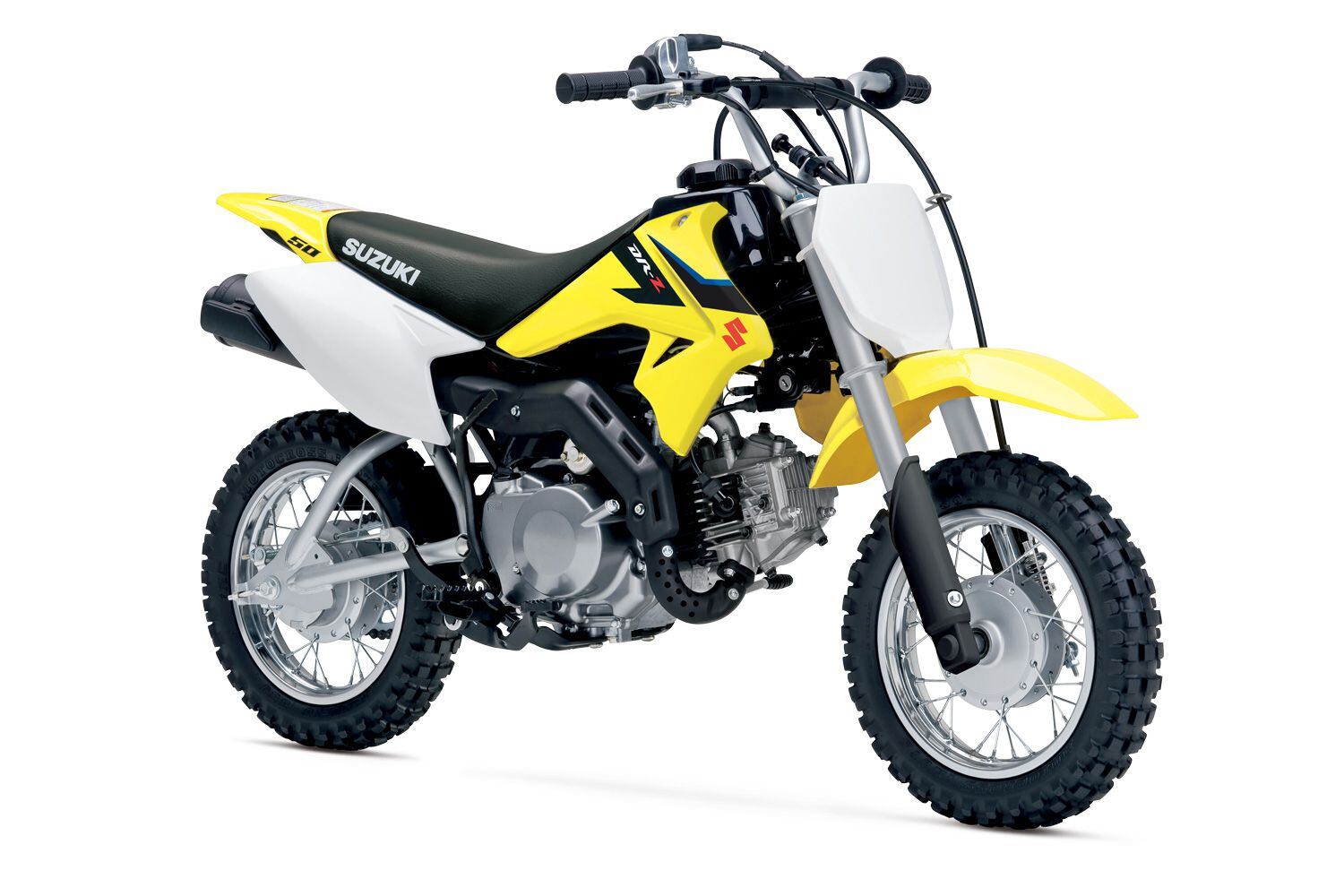
2020 Suzuki DR-Z50 (Suzuki /) Suzuki DR-Z50 Updates For 2020
As an all-new model in 2019, the DR-Z50 now only sees revised graphics for 2020.
2020 Suzuki DR-Z50 Claimed Specifications
Price: $1,749 Engine: Air-cooled OHC single-cylinder Displacement: 49cc Bore x Stroke: 39.0 x 41.8mm Horsepower: N/A Torque: N/A Transmission: 3-speed automatic Final Drive: Chain Seat Height: 22.0 in. Rake: 24.3° Trail: 1.4 in. Front Suspension: Telescopic fork; 3.8-in. travel Rear Suspension: Nonadjustable; 3.0-in. travel Front Tire: 2.50 x 10 in. Rear Tire: 2.50 x 10 in. Wheelbase: 36.8 in. Fuel Capacity: 0.8 gal. Wet Weight: 119 lb. -
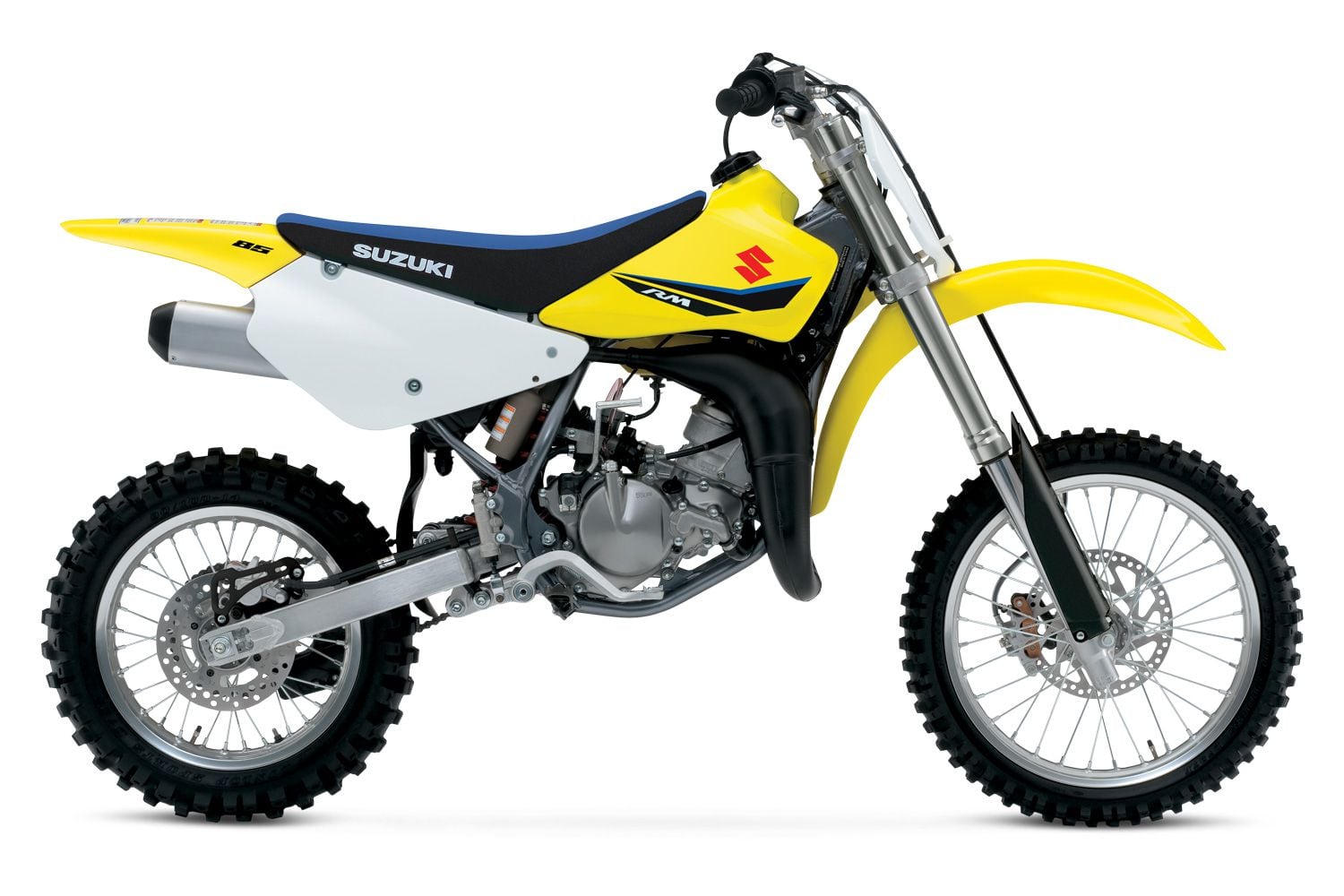
2020 Suzuki RM85 (Suzuki /) The 2020 Suzuki RM85 is a kid’s motocrosser. Although it does have approachable power from the 85cc single-cylinder two-stroke engine, its six-speed transmission makes it more appropriate for kids who have already mastered the art of shifting. The RM85 is the smallest of the track-oriented dirt bikes from Suzuki—the other small offering from Suzuki is the more trail-focused DR-Z50. The RM85′s Showa suspension is fully adjustable, making it easy to adapt to track conditions. The wheel sizes (front 70/100-17 and rear 90/100-14) also meet AMA 85cc class regulations, and the ability to earn Suzuki contingency and track-side support with this model mean that Suzuki intends for it to spin around the track.
2020 Suzuki RM85 Reviews, Comparisons, And Competition
Some competition for the RM85 include Japanese bikes such as the Yamaha YZ85 and Kawasaki KX85, and European and significantly more-expensive bikes like the KTM 85 SX, Husqvarna TC 85, and TM MX 85.
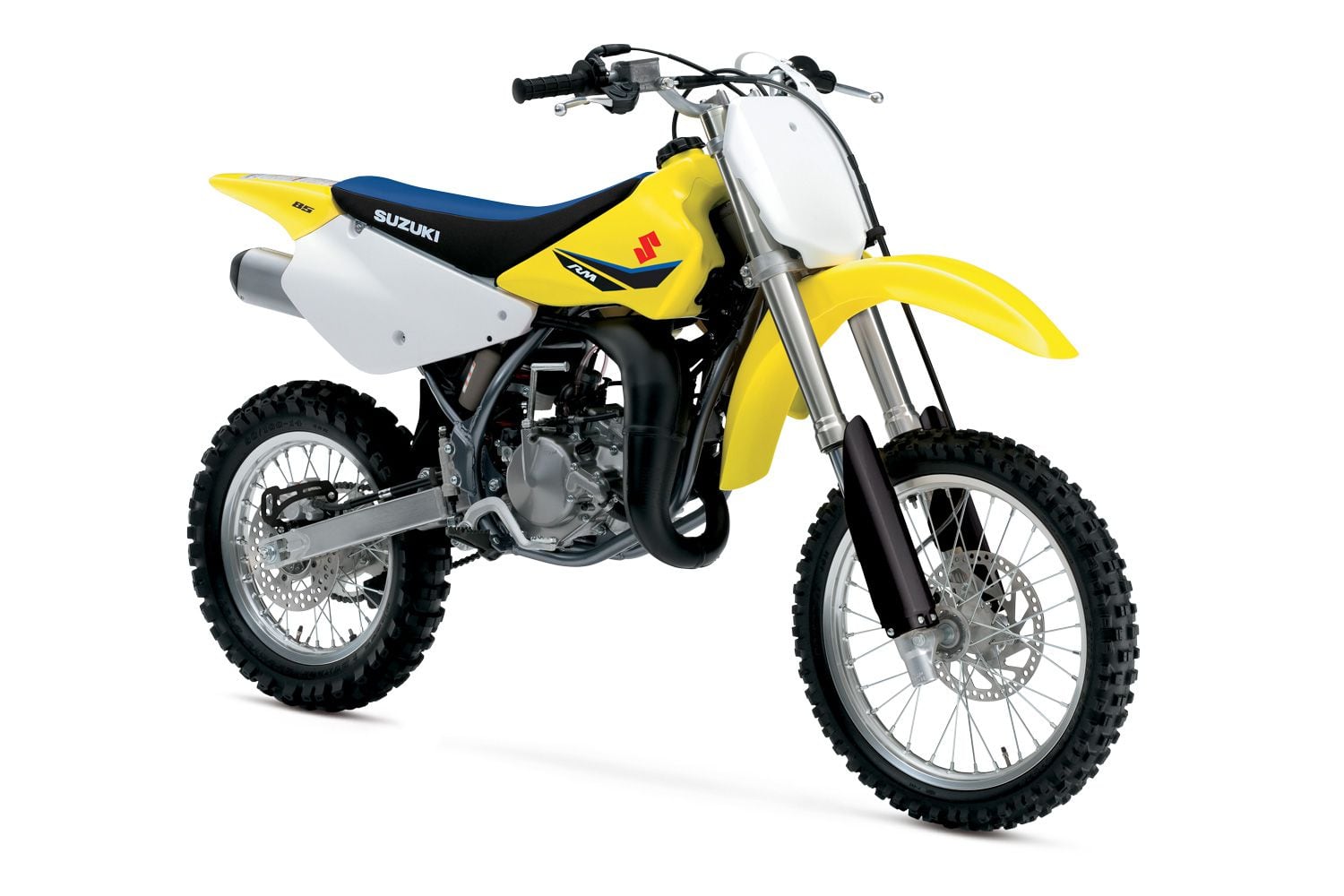
2020 Suzuki RM85 (Suzuki /) Suzuki RM85 Updates For 2020
New features for 2020 include RM-Z250- and 450-inspired body panel colors, graphics, and seat cover colors.
2020 Suzuki RM85 Claimed Specifications
Price: $4,249 Engine: Liquid-cooled single-cylinder Displacement: 85cc Bore x Stroke: 48.0 x 46.8mm Horsepower: N/A Torque: N/A Transmission: 6-speed Final Drive: Chain Seat Height: 33.5 in. Rake: 28.5° Trail: 3.4 in. Front Suspension: 37mm telescopic fork, fully adjustable; 10.8-in. travel Rear Suspension: Compression and rebound adjustable; 10.9-in. travel Front Tire: 70/100-17 Rear Tire: 90/100-14 Wheelbase: 48.8 in. Fuel Capacity: 1.3 gal. Wet Weight: 161 lb. -
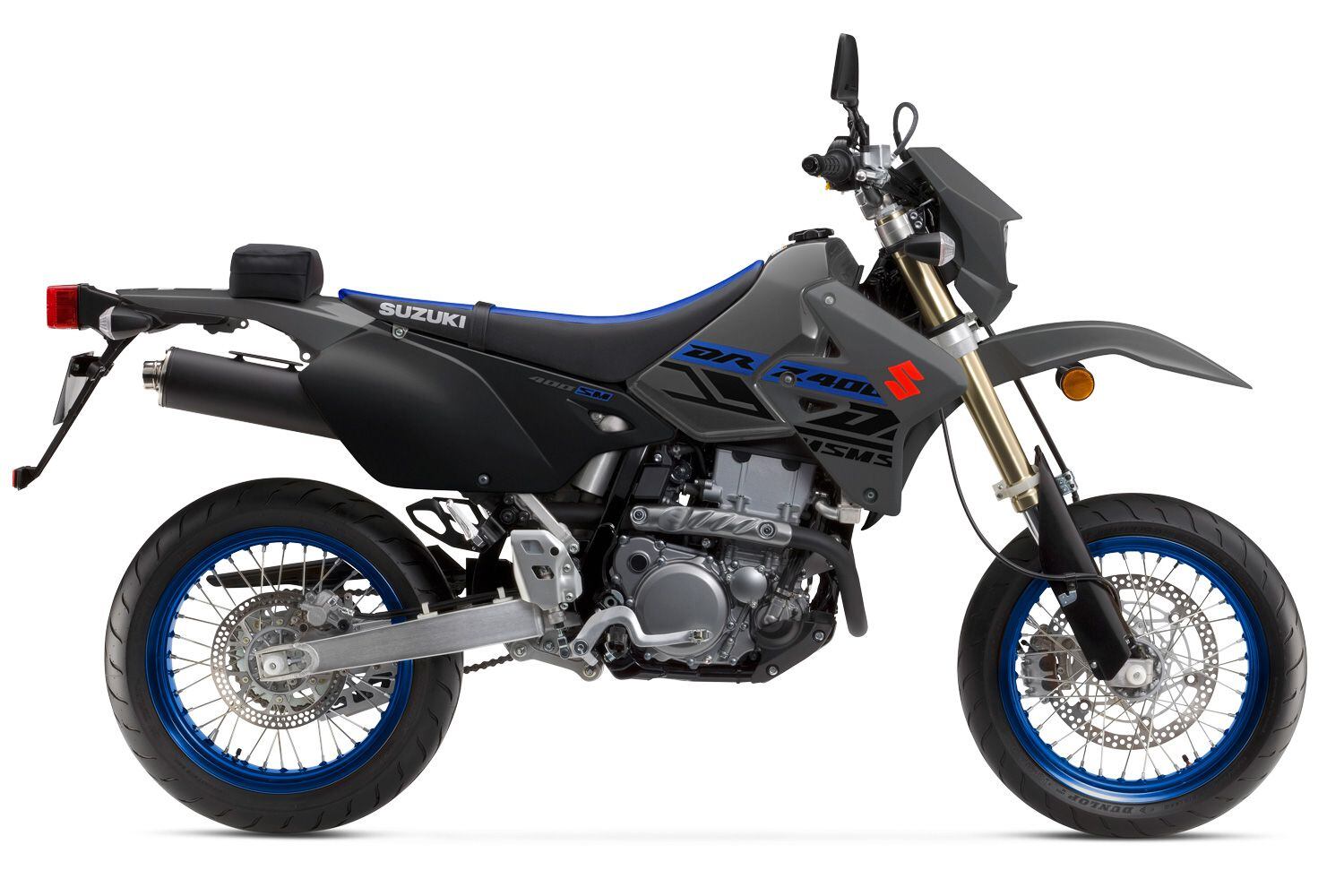
2020 Suzuki DR-Z400SM (Suzuki /) The DR-Z400SM puts a supermoto spin on the popular middleweight dual sport DR-Z400S. The DR-Z400SM is primarily suited for riding (and racing) on the paved surfaces, but has an off-roader’s character with its lightweight handling and slim design. This DR-Z has done away with knobby tires for a slicker Dunlop D208, but that isn’t the only difference. Suzuki relays that other key differences between its DR-Zs include the SM’s inverted fork, wide, spoked rims, and 300mm-diameter floating front brake rotor. The SM’s five-speed transmission works with a 398cc liquid-cooled single-cylinder engine.
2020 Suzuki DR-Z400SM Reviews, Comparisons, And Competition
While some might argue the niche supermoto is a bit impractical, past test rider Blake Conner stated. “The DR-Z is anything but impractical. Despite its relatively small 398cc engine, the SM is a very entertaining motorcycle, whether you are commuting in an urban environment or heading out into the twisties on the weekend. About the only place that the 400 feels out of place is on freeways, especially if the trip is longer than 10 or 15 minutes.”
Although packed with a little more oomph than Suzuki’s supermoto, its competition may include the Ducati Hypermotard, Aprilia Dorsoduro, KTM 690 SMC R, or Husqvarna 701 Supermoto.
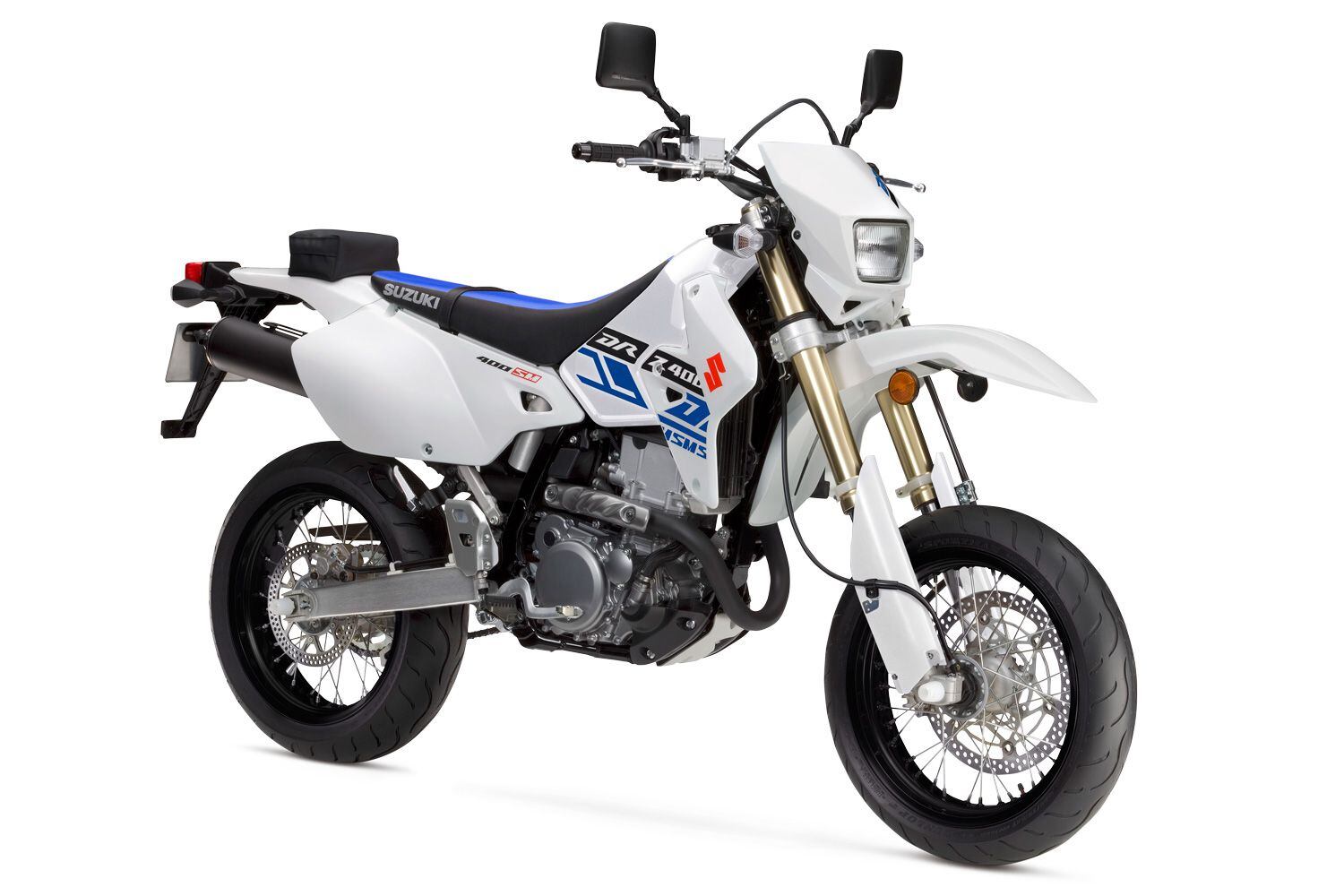
2020 Suzuki DR-Z400SM (Suzuki /) Suzuki DR-Z400SM Updates For 2020
The Suzuki DR-Z400SM’s only change for 2020 is the new color options to choose from: Solid Iron Gray and Solid Special White No. 2.
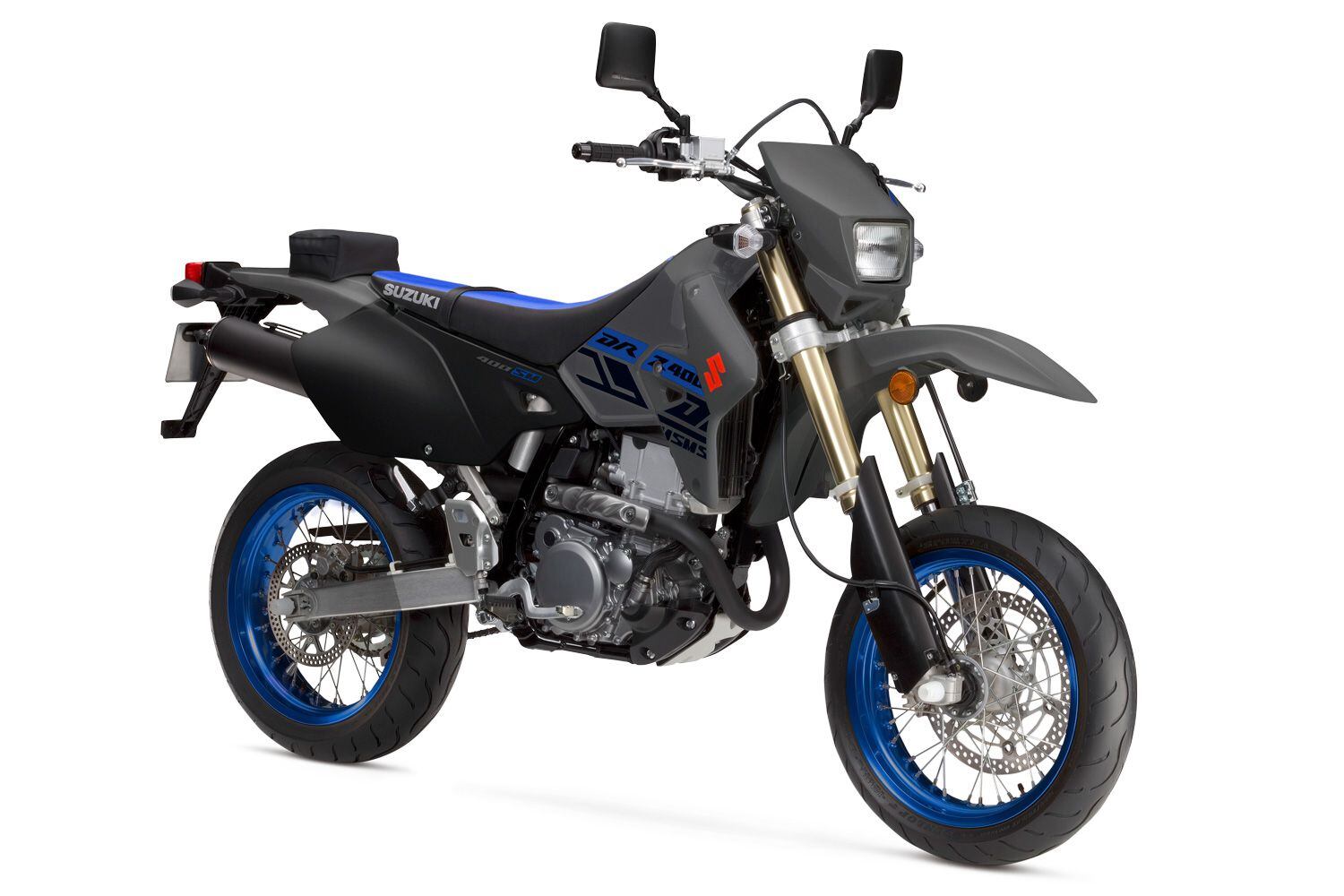
2020 Suzuki DR-Z400SM (Suzuki /) 2020 Suzuki DR-Z400SM Claimed Specifications
Price: $7,399 Engine: Liquid-cooled DOHC single-cylinder Displacement: 398cc Bore x Stroke: 90.0 x 62.6mm Horsepower: N/A Torque: N/A Transmission: 5-speed Final Drive: Chain Seat Height: 35.0 in. Rake: 26.3° Trail: 3.7 in. Front Suspension: Inverted fork, compression and rebound adjustable; 10.2-in. travel Rear Suspension: Fully adjustable; 10.9-in. travel Front Tire: 120/70R-17 Rear Tire: 140/70R-17 Wheelbase: 57.5 in. Fuel Capacity: 2.6 gal./2.5 gal. (CA model) Wet Weight: 321 lb. -
Without a doubt, the 2021 Aprilia RS660 was the motorcycle I most anticipated riding this year, thanks in no small part because I first saw the bike in person over a year ago and salivated over the chance to ride it ever since.
No, it’s not a Ducati Superleggera or Honda CBR1000RR-R Fireblade SP, but between the three, this is probably the motorcycle I’d actually own. Why? Because despite the huge grins the Ducati and Honda put on my face, I can’t help but feel like I’m only tapping into a fraction of the performance they have to offer. With the RS660, I feel like a much bigger hero riding it to its limits instead of mine. It’s the same reason so many people, myself included, get started on bikes like the Suzuki SV650 – then decide there’s no reason to move up.
The SV650 reference was no coincidence, as the RS660 is coming for the middleweight Twins mantle the Suzuki has arguably held the crown to for the past 20 years. Aprilia wants us to think of it as the bridge between full-fledged 600cc four-cylinder supersports and 650cc-ish Twins; a streetable sportybike you could ride to the racetrack, do a trackday on, then ride home. Not that you should. But you could.
If you haven’t already, go check out my First Ride review of the new Aprilia. There you can find more details about the 660 platform (the RS660 is just the first in a series of future models) and what it’s meant to do. While the 659cc parallel-Twin engine is heavily influenced by the RSV4 with the rear bank of cylinders lobbed off, the 270-degree firing order gives it unmistakable character and the loads of electronic rider aids rival those you’d see on Aprilia’s own RSV4.
But how does the package all work together? By now you’ve probably already read several written reviews, including mine, that answers this exact question. If you haven’t, then I suggest watching the video and I’ll tell you exactly what I think about it.
The post 2021 Aprilia RS660 First Ride Review – Video appeared first on Motorcycle.com.
http://feeds.feedburner.com/~r/Motorcyclefeed/~4/Ki_jWQsKn-g -
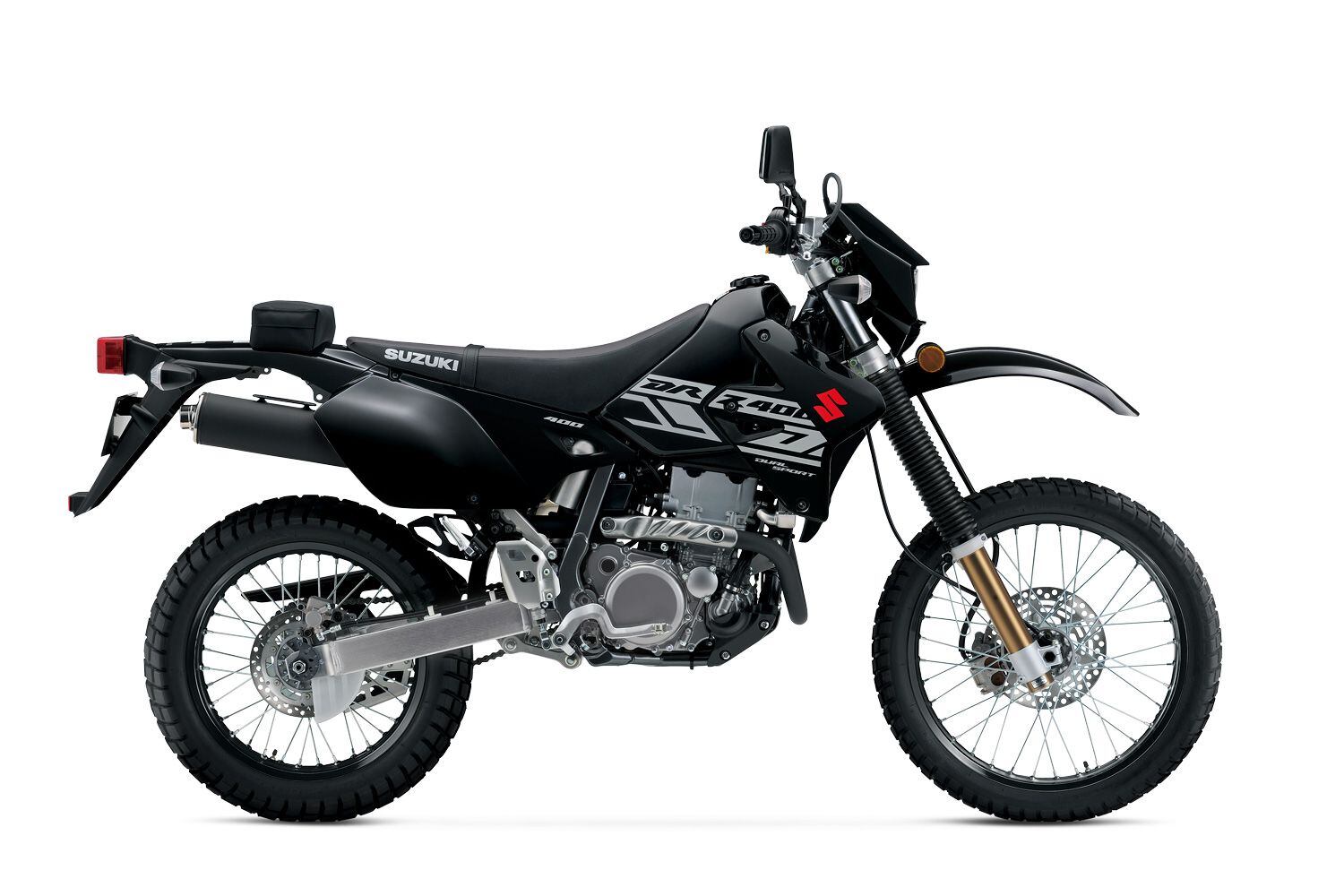
2020 Suzuki DR-Z400S (Suzuki /) The DR-Z400 has been around since 2000 and this dual sport is still competent for trail riding and urban cruising with its 398cc liquid-cooled single cylinder engine. Dirt-bike-like suspension travel of 11 inches with a fully adjustable front and preload- and compression-adjustable rear setup make the DR-Z400S ready for any terrain. Easy-to-access covers to the air filter and clutch make maintenance easy as well. It may not be the most high-tech dual sport out there with components like a carburetor, LCD screen, and halogen lighting, but when you are out there on the trails sometimes the bare minimum is all the tech you need.
2020 Suzuki DR-Z400S Reviews, Comparisons, And Competition
A key competitor of the DR-Z400S is the Royal Enfield Himalayan, however, other smaller-displacement dual sports include the Honda CRF250L/Rally, Yamaha TW200, or Kawasaki KLX230.
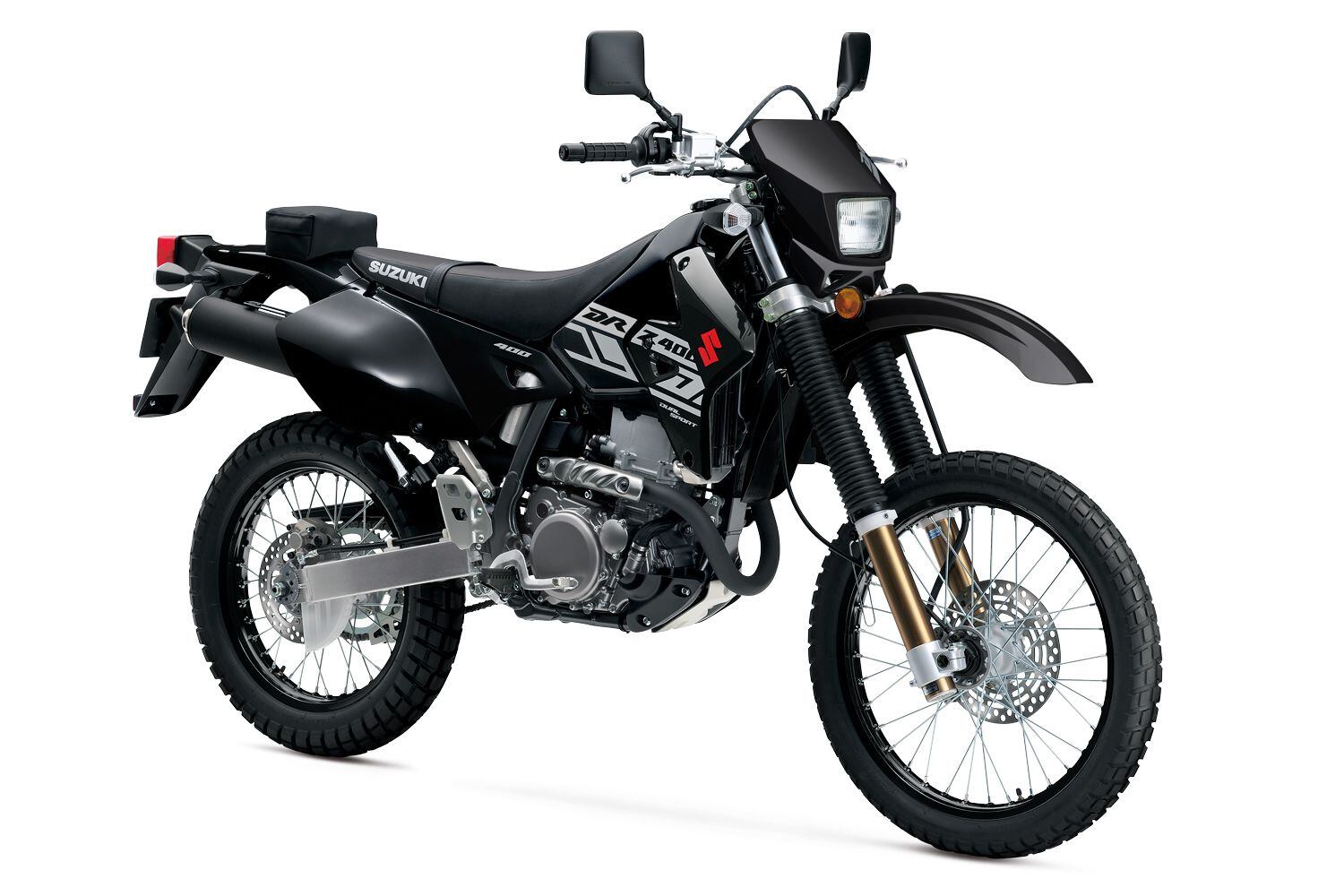
2020 Suzuki DR-Z400S (Suzuki /) Suzuki DR-Z400S Updates For 2020
New graphics are featured on the black bodywork of the 2020 DR-Z400S.
2020 Suzuki DR-Z400S Claimed Specifications
Price: $6,799 Engine: Liquid-cooled DOHC single-cylinder Displacement: 398cc Bore x Stroke: 90.0 x 62.6mm Horsepower: N/A Torque: N/A Transmission: 5-speed Final Drive: Chain Seat Height: 36.8 in. Rake: 27.2° Trail: 4.2 in. Front Suspension: 49mm telescopic fork, fully adjustable; 11.3-in. travel Rear Suspension: Preload and compression adjustable; 11.6-in. travel Front Tire: 80/100-21 Rear Tire: 120/90-18 Wheelbase: 58.5 in. Fuel Capacity: 2.6 gal./2.5 gal. (CA model) Wet Weight: 317 lb. -
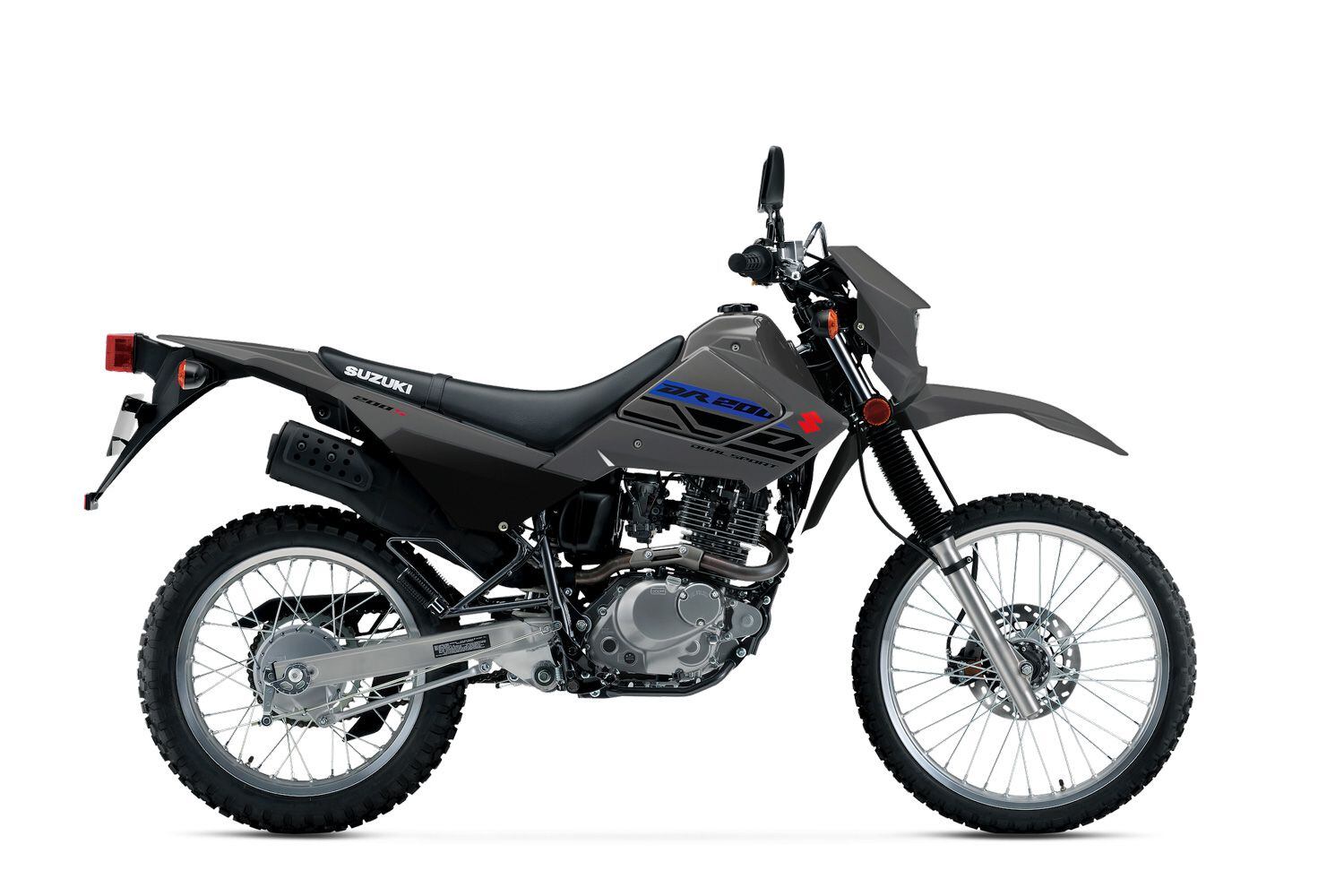
2020 Suzuki DR200S (Suzuki /) Beginner riders may have their eyes on Suzuki’s smallest-displacement dual sport, the DR200S. Its sub-300-pound weight makes it maneuverable both on and off-road making it a manageable option for newer riders trying their hand at both. The 199cc air-cooled and carbureted engine provides moderate power that is unintimidating to the target audience. Not only does the RM-Z styling make it look off-road ready, the 8.1-inch suspension travel of the telescopic fork and single shock help carry it over dirt and rocky terrain. Disc front and drum rear brakes also offer adequate braking performance.
2020 Suzuki DR200S Reviews, Comparisons, And Competition
Direct competition would be the Yamaha TW200, but slightly more powerful options like the Honda CRF250L/Rally and Kawasaki KLX230.
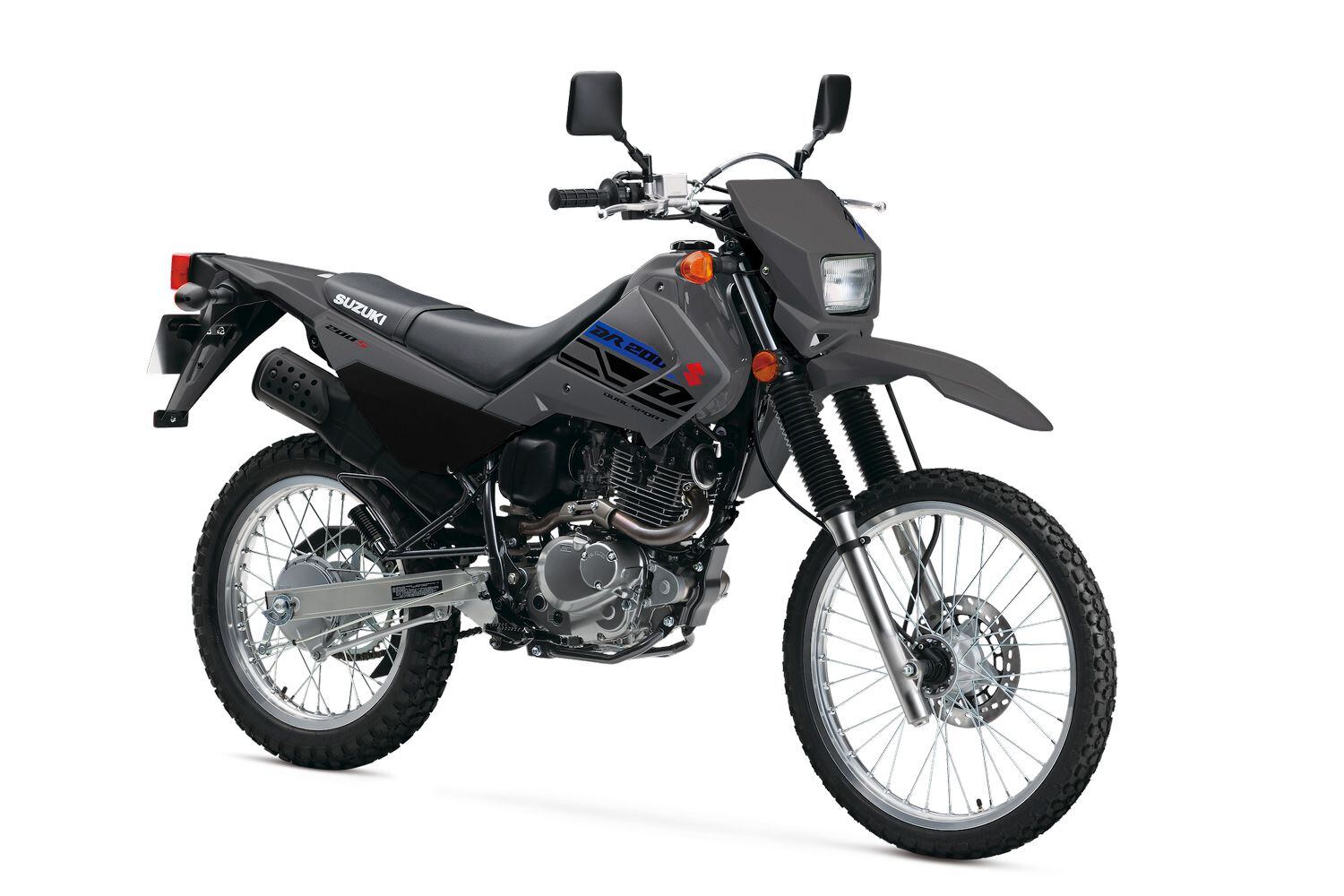
2020 Suzuki DR200S (Suzuki /) Suzuki DR200S Updates For 2020
Solid Iron Gray is a solid (and only choice) in color for the 2020 DR200S.
2020 Suzuki DR200S Claimed Specifications
Price: $4,649 Engine: Air-cooled SOHC single-cylinder Displacement: 199cc Bore x Stroke: 66.0 x 58.2mm Horsepower: N/A Torque: N/A Transmission: 5-speed Final Drive: Chain Seat Height: 33.3 in. Rake: 29.0° Trail: 4.4 in. Front Suspension: Telescopic fork; 8.1-in. travel Rear Suspension: Preload adjustable; 8.1-in. travel Front Tire: 70/100-21 Rear Tire: 100/90-18 Wheelbase: 55.3 in. Fuel Capacity: 3.3 gal. Wet Weight: 278 lb. -
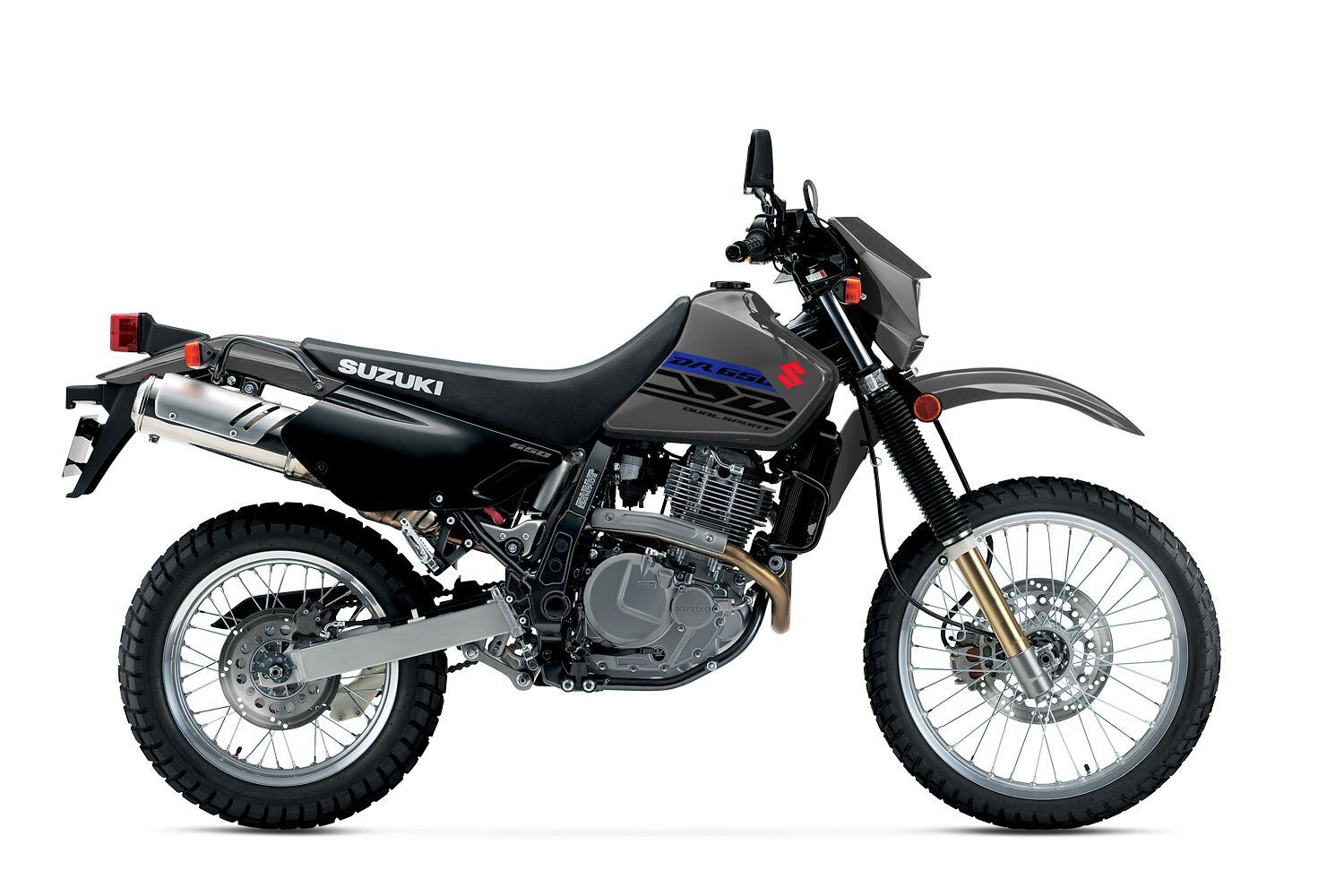
2020 Suzuki DR650S (Suzuki /) The flagship dual sport from Suzuki is the DR650S. It is a fun and capable machine that leads Suzuki’s dual sport charge with a trusty 644cc air- and liquid-cooled four-stroke engine and five-speed transmission. Large 21- and 17-inch tires and 10.2-inch travel get this machine ready for the rough terrain while a long seat, aluminum footpegs, and grab handles allow for two-up riding. So whether you are hitting the moderate trails or cruising around town, the DR650S does so reliably. While the seat height starts at 34.8 inches, shorter-inseam riders can drop it nearly 2 inches with the optional low seat accessory. Suspension is also height adjustable in both the front and rear, but it consequently drops the suspension travel.
2020 Suzuki DR650S Reviews, Comparisons, And Competition
Competition in the higher-displacement dual sport realm includes the Kawasaki KLR650, Honda XR650L, and KTM 690 Enduro R, though the KTM is almost double the Suzuki’s pricing. Dropping down in price and displacement, the other dual-sport options include the Royal Enfield Himalayan, Honda CRF250L/Rally, Yamaha TW200, or Kawasaki KLX230.
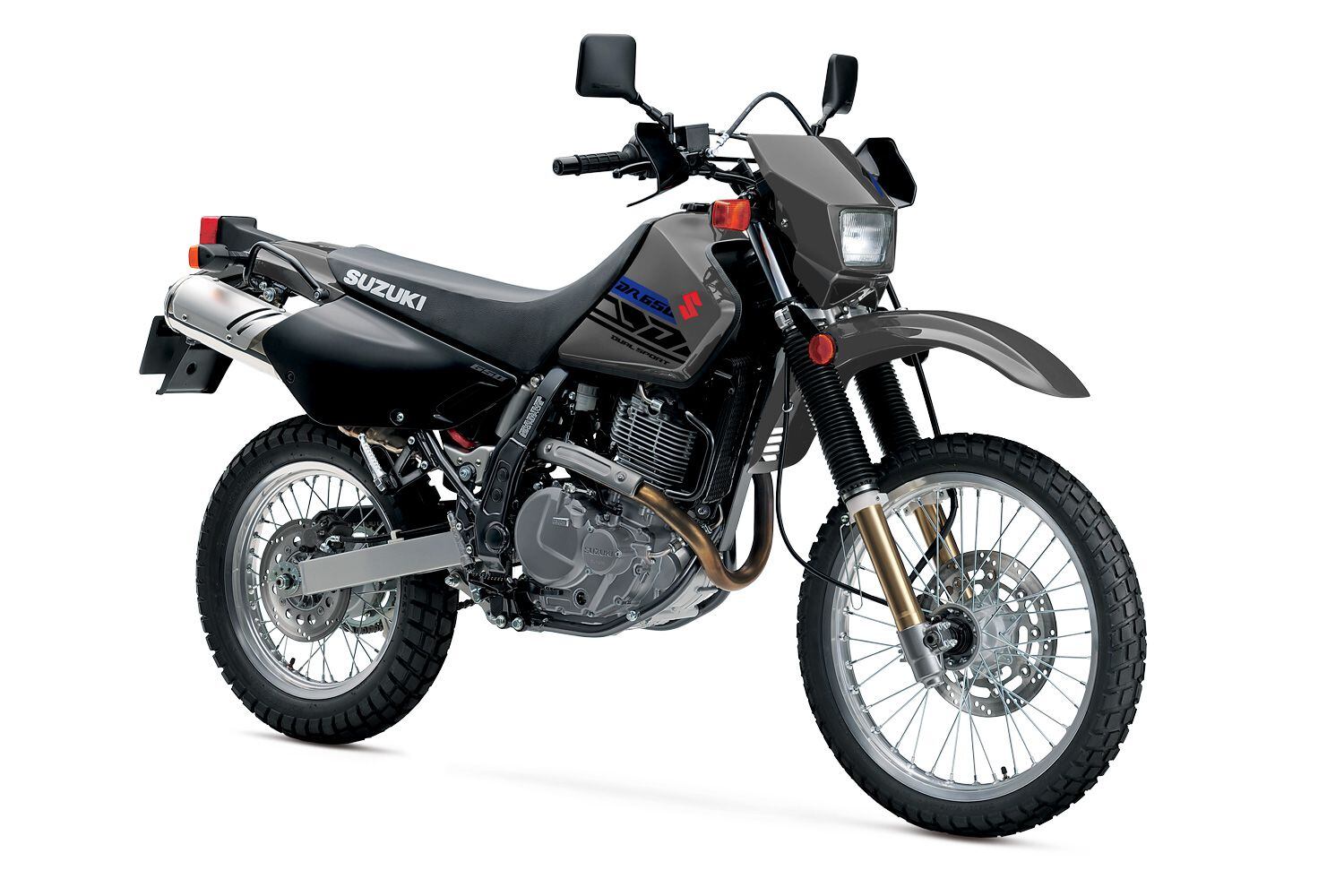
2020 Suzuki DR650S (Suzuki /) Suzuki DR650S Updates For 2020
Suzuki’s flagship dual sport features a new colorway and graphics package for 2020.
2020 Suzuki DR650S Claimed Specifications
Price: $6,699 Engine: Air-/liquid-cooled SOHC single-cylinder Displacement: 644cc Bore x Stroke: 100.0 x 82.0mm Horsepower: N/A Torque: N/A Transmission: 5-speed Final Drive: Chain Seat Height: 34.8 in./33.0 in. (low seat) Rake: 28.5° Trail: 4.4 in. Front Suspension: Telescopic fork; 10.2-in. travel Rear Suspension: Preload and compression adjustable; 10.2-in. travel Front Tire: 90/90-21 Rear Tire: 120/90-17 Wheelbase: 58.7 in. Fuel Capacity: 3.4 gal./3.2 gal. (CA model) Wet Weight: 366 lb.



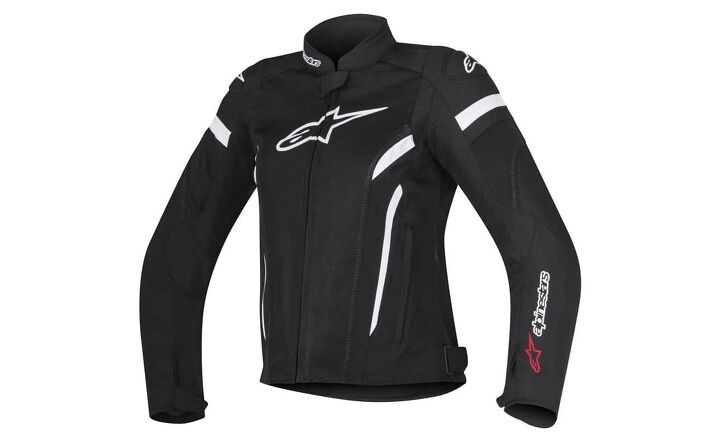
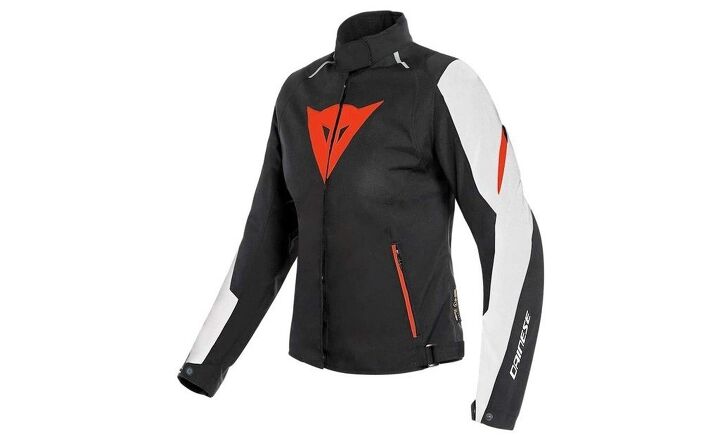
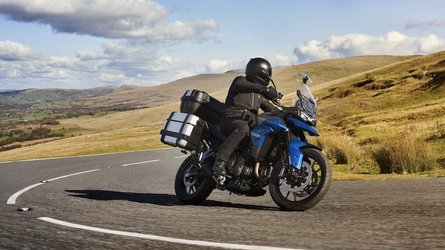

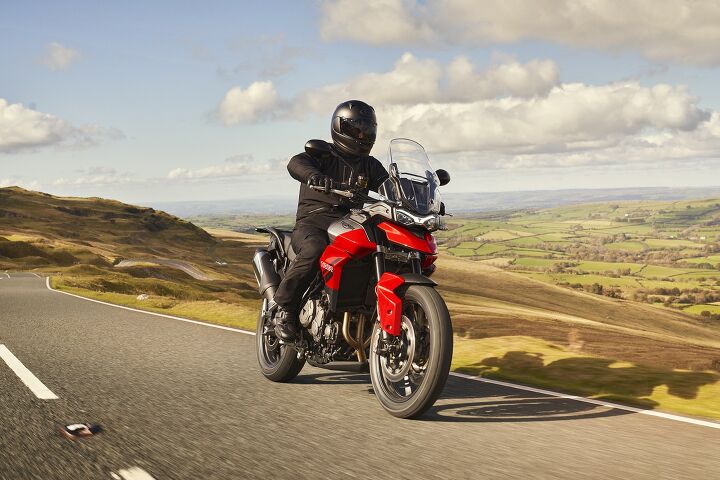
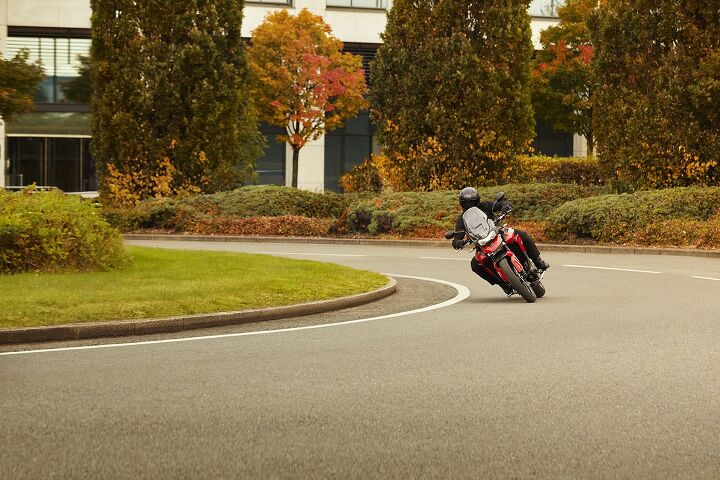
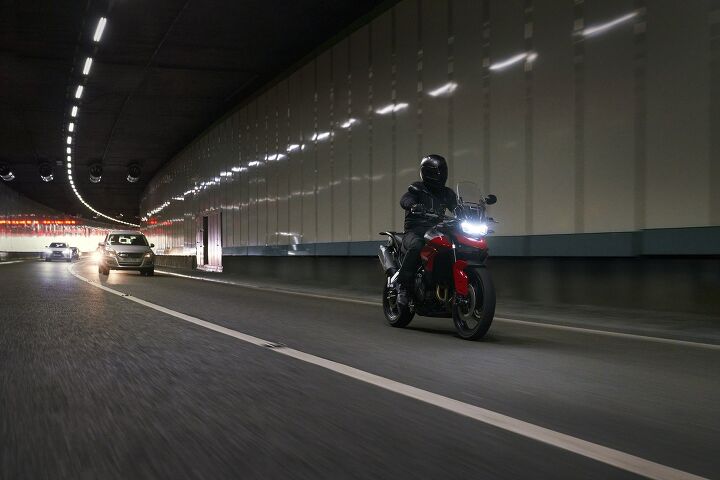
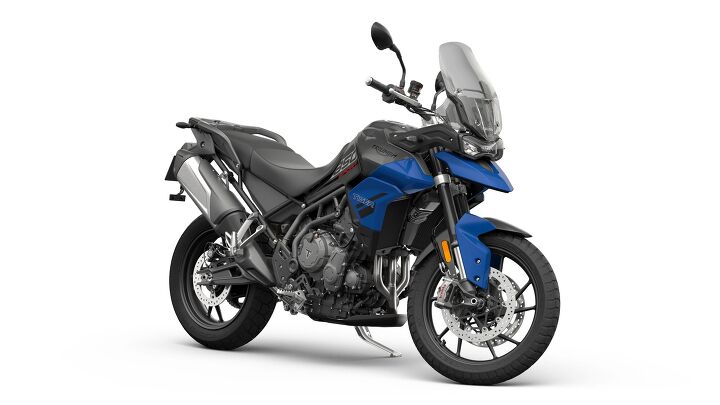

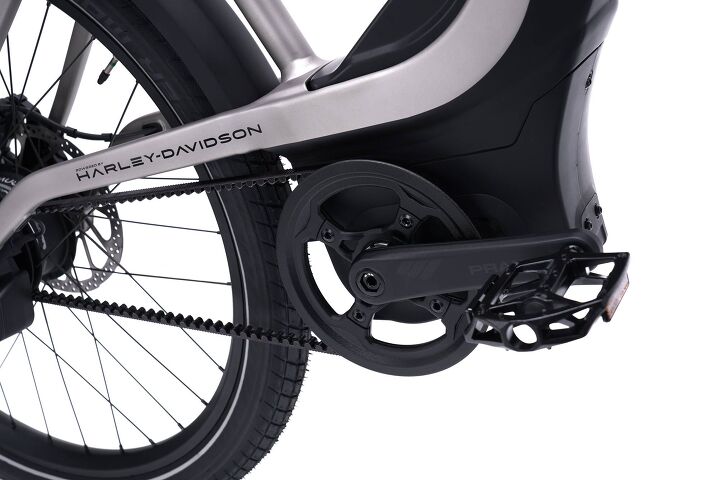
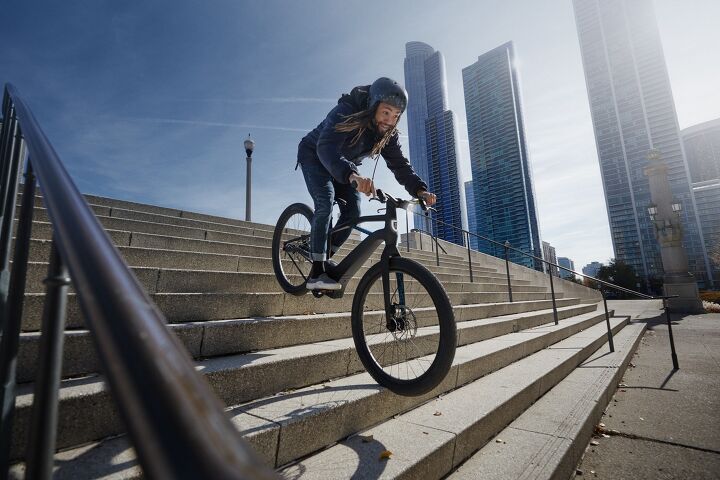
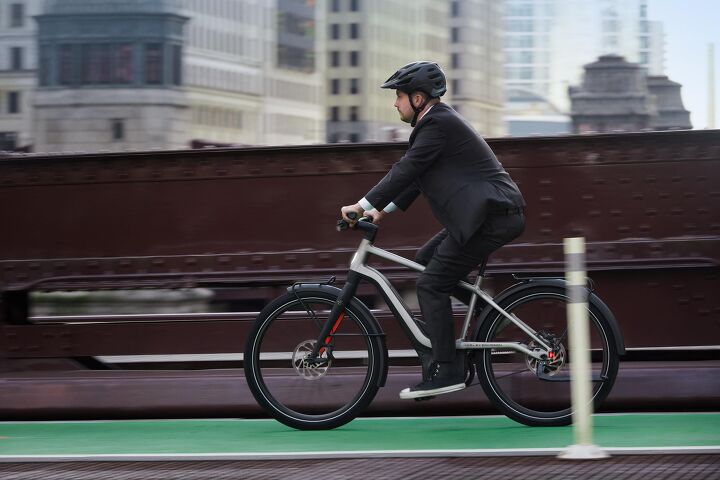
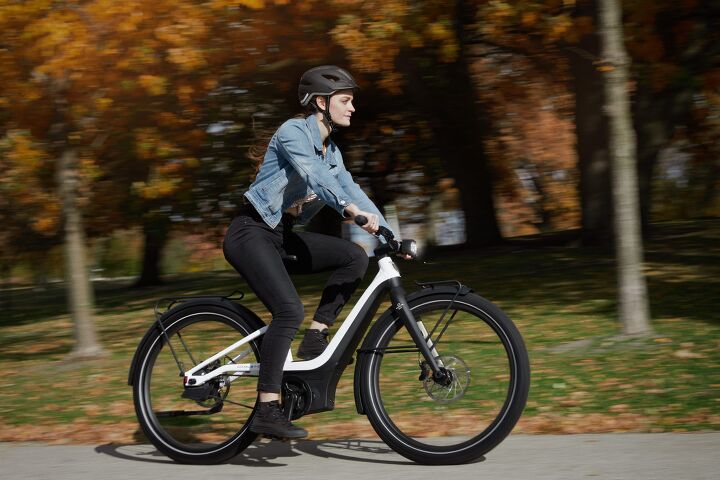
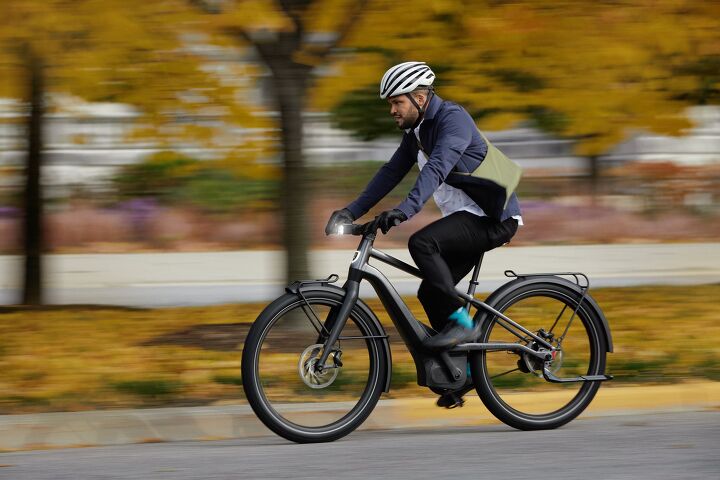
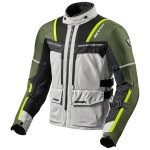
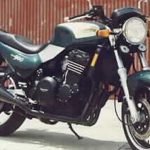
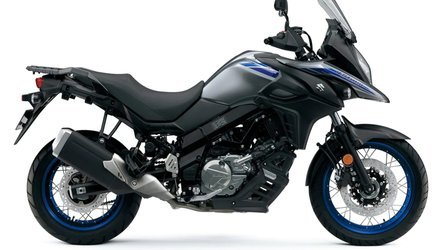
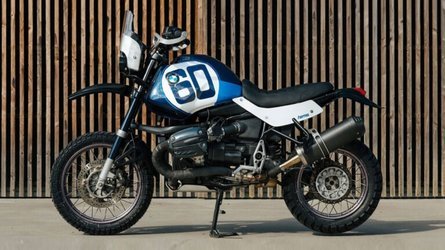





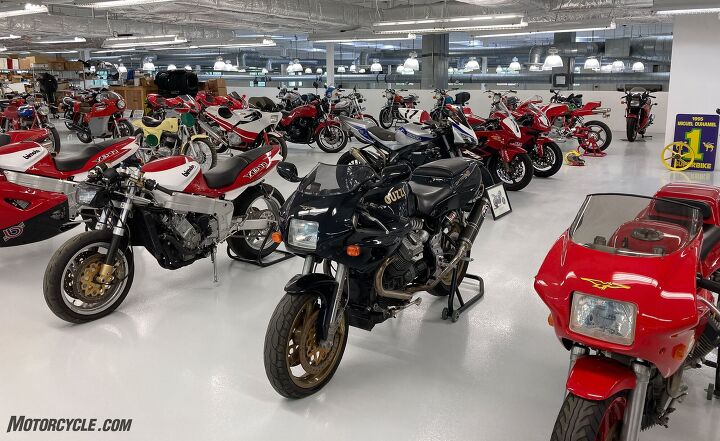
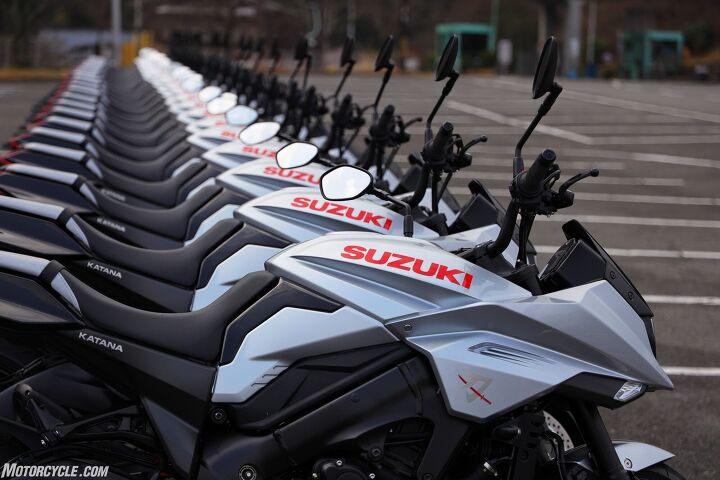
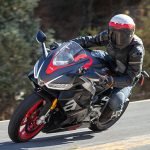
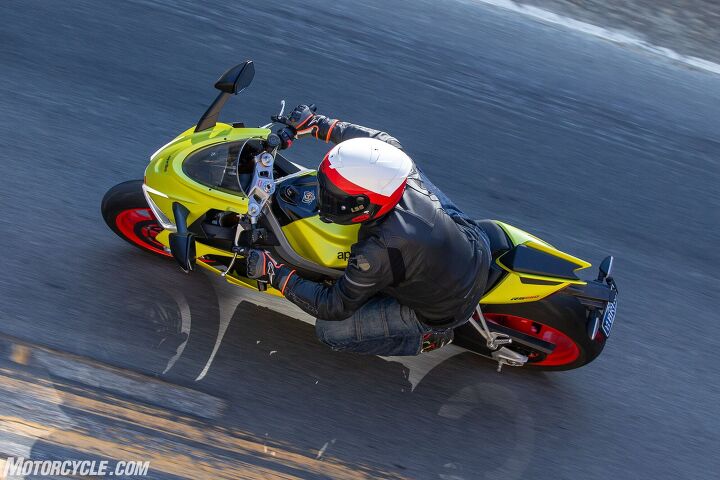
2021 Yamaha Tracer 9 GT First Look
in Motorbike news
Posted
Yamaha has updated the Tracer 900 GT, renaming it the Tracer 9 GT and giving it similar updates to the new MT-09 including the larger 890cc three-cylinder engine, new frame and six-axis IMU.
Visually, the Tracer 9 GT looks a little less aggressive than the 900, with a flatter face and a longer fairing. The longer bodywork is matched with a longer, adjustable windscreen, which produces what Yamaha describes as an arrow-shaped silhouette with the reshaped fuel tank cover. The full LED headlights are smaller than on the previous model, and they are supplemented by new LED cornering lights that illuminate based on the IMU-measured lean angle.
The new 890cc displacement was achieved by increasing the piston stroke by 3 mm. Yamaha didn’t provide any performance figures for the U.S.-spec Tracer 9 GT, only touting an increase in low-rpm torque. Yamaha Motor Europe, however, claims a 7% increase in torque output to 68.6 lb-ft. at 7000 rpm and a 4 hp increase to 117 hp at 10,000 rpm.
Yamaha Motor USA claims an improvement in engine efficiency, claiming improved fuel economy to 49 mpg. With a full 5.0 gallon fuel tank (0.2 larger than the Tracer 900’s tank), that works out to a range of 245 miles between refills.
The Tracer 9 GT is also equipped with an updated assist and slipper clutch and a quick shift for clutchless up and down shifting.
The six-axis IMU helps run the Tracer 9 GT’s electronics. In addition to the cornering lighting, the IMU is responsible for governing the lean-sensitive traction control, slide control, front wheel lift control and brake control systems. The IMU also helps control the Tracer 9’s semi-active suspension, adjusting the rebound and compression damping for the fork and rebound damping of the rear shock as needed to suit ride conditions. Other electronic features include four engine modes and cruise control.
The brake control system works with the ABS control unit to independently control brake pressure. The system offers two selectable levels of intervention: BC1 is a standard ABS mode that prevents wheel lock-up under hard, straight-line braking, and BC2 which offers more intervention and works while cornering.
The dual 298mm front and 245mm rear disc brakes are similar to the 2020 Tracer 900’s, but the new Tracer 9 GT receives an R1-type front brake radial master cylinder from Nissin that claims a more linear brake feel.
The Yamaha Tracer 9 GT claims a wet weight of 485 pounds, not including side cases. That’s an 11-pound increase over the 2020 Tracer 900, though some of that is from a slightly larger fuel tank.
Along with the new engine comes a new aluminum frame, which differs slightly from the frame on the updated MT-09. For the Tracer 9, Yamaha used thicker engine mounts to better handle the added stress of carrying the standard hard cases and a passenger.
The steel rear subframe is also new, with Yamaha claiming improved straight line stability and cornering ability. The new subframe also reduced the adjustable seat’s height to 31.9 inches or 32.5 inches from the previous 33.5 inches or 34.1 inches.
Yamaha says the new hard cases can each fit a full-face helmet. The cases attach to the subframe via a fully floating carrier system that Yamaha says will absorb any wind or surface-induced chatter.
The shorter saddle height plus the choice of two heights help to accommodate different riders, as do the Tracer 9’s adjustable handlebars and foot pegs. The footpeg mounts can be raised 14mm higher and 4 mm rearward. The handlebars clamps can be rotated 10mm forward, which moves the bar position 9mm forward and 4mm higher. For improved comfort in cooler weather, the Tracer 9 GT comes standard with heated grips.
The Tracer 9 comes with not one but two 3.5-inch full color TFT screens. The left screen displays a bar-type tachometer, fuel gauge, mileage indicator, and a gear indicator. The right screen can be configured to show other additional information. The setup looks a little odd, especially with the gap between the screens. It certainly looks less elegant than the large 10.25-inch Bosch display BMW recently introduced on the 2021 R150RT.
The 2021 Yamaha Tracer 9 GT will arrive in showrooms in March with a choice of Liquid Metal or Redline colors. U.S. pricing is set at $14,899, which is a substantial increase from the 2020 Tracer 900 GT’s $12,999 MSRP.
Become a Motorcycle.com insider. Get the latest motorcycle news first by subscribing to our newsletter here.
The post 2021 Yamaha Tracer 9 GT First Look appeared first on Motorcycle.com.
http://feeds.feedburner.com/~r/Motorcyclefeed/~4/zhjdwC_2_mwView the full article